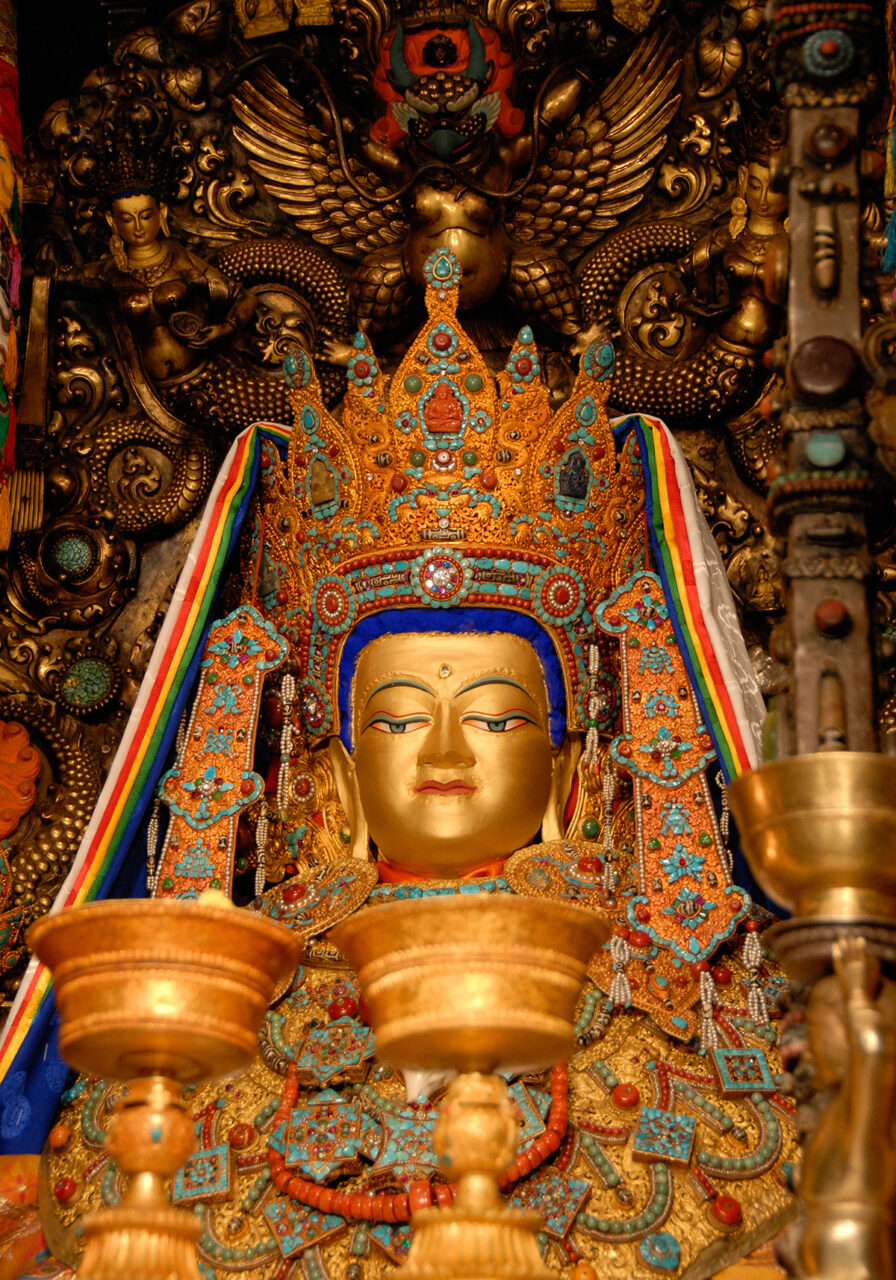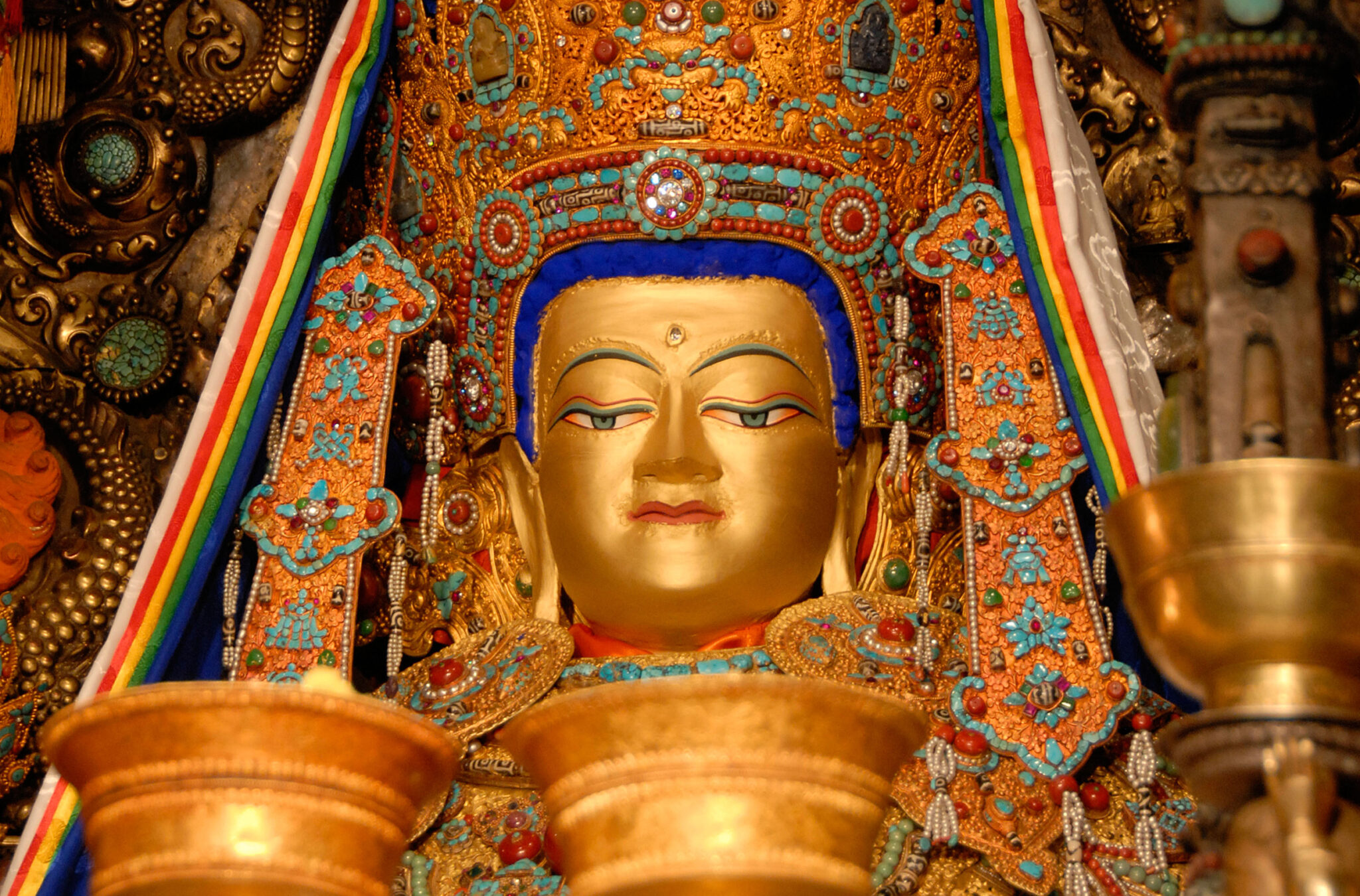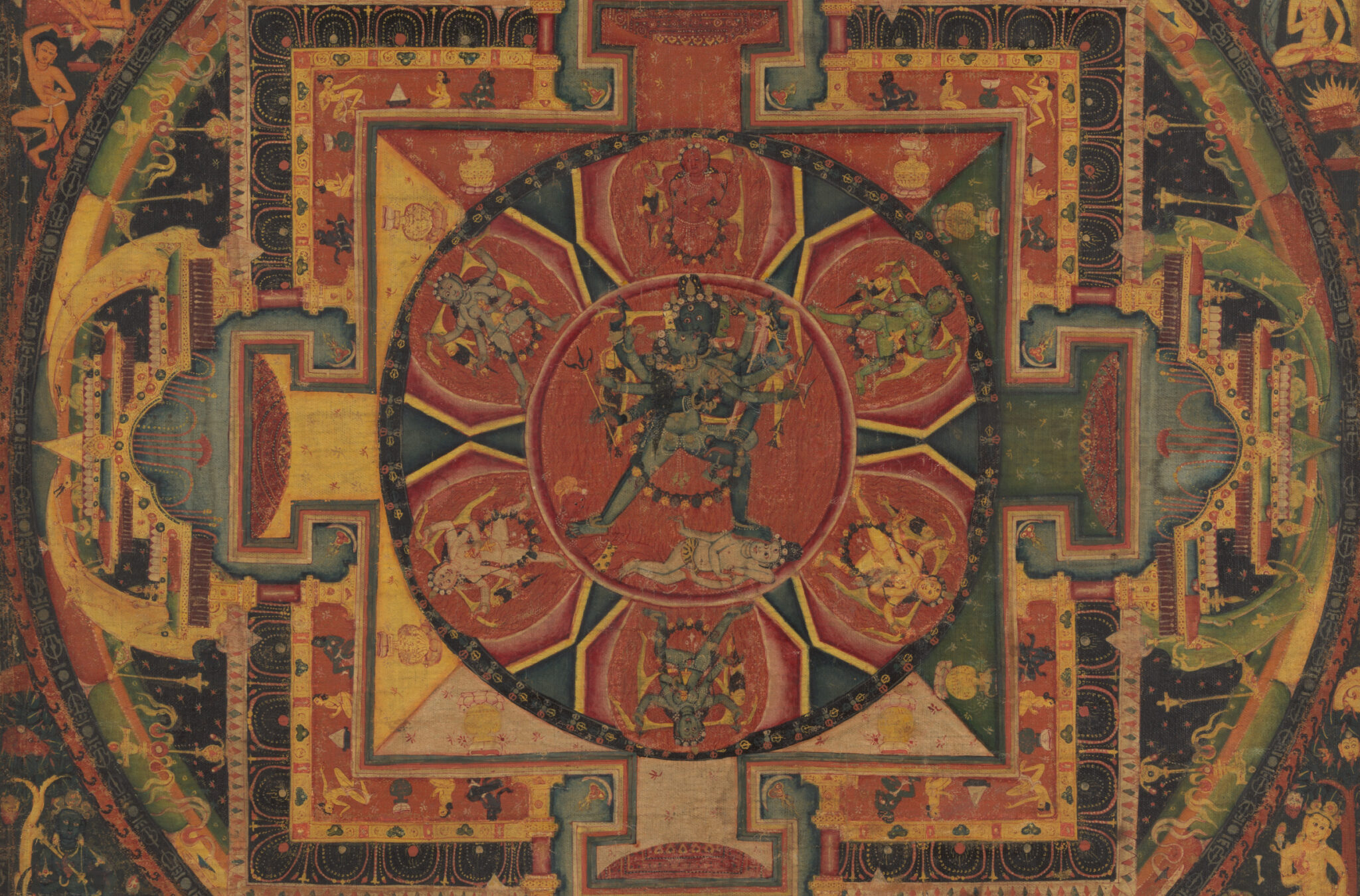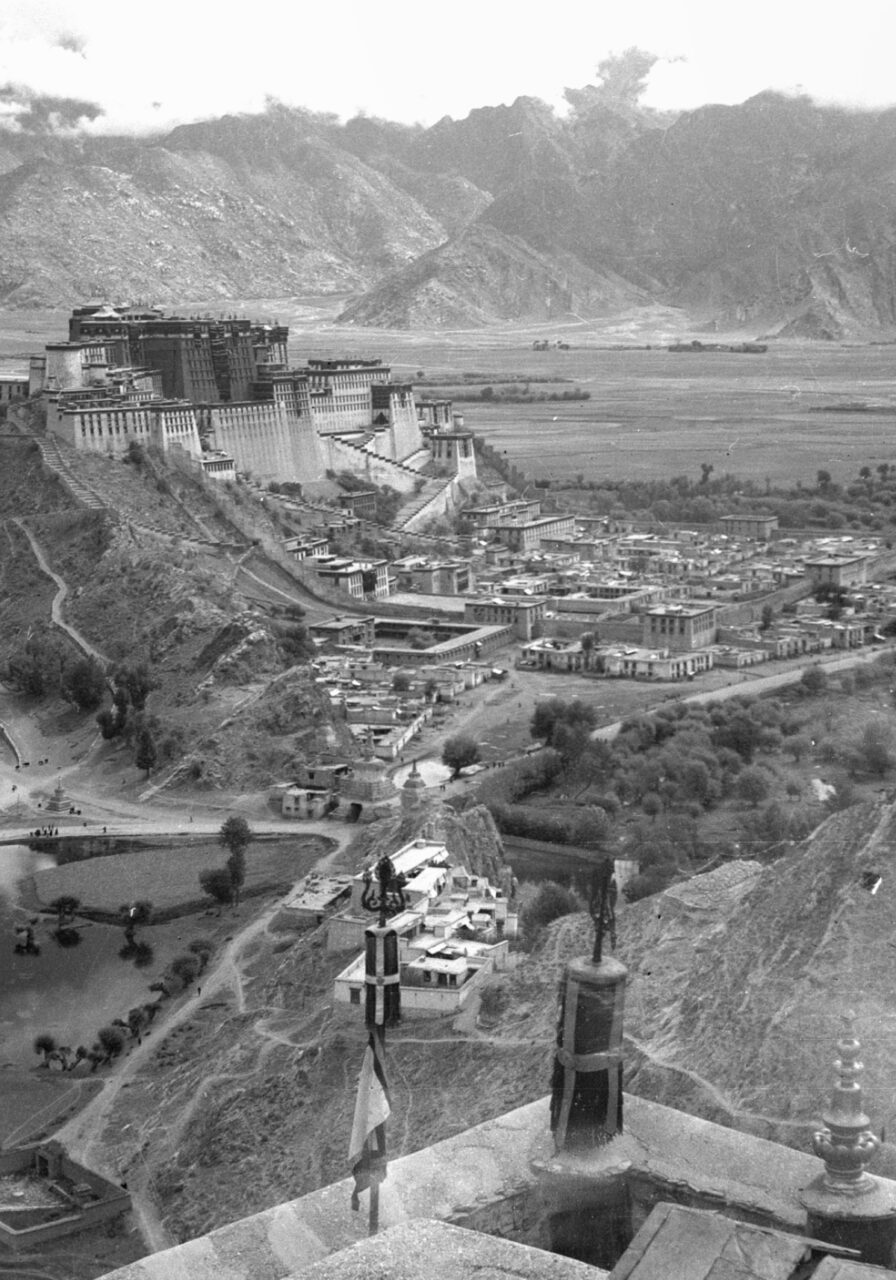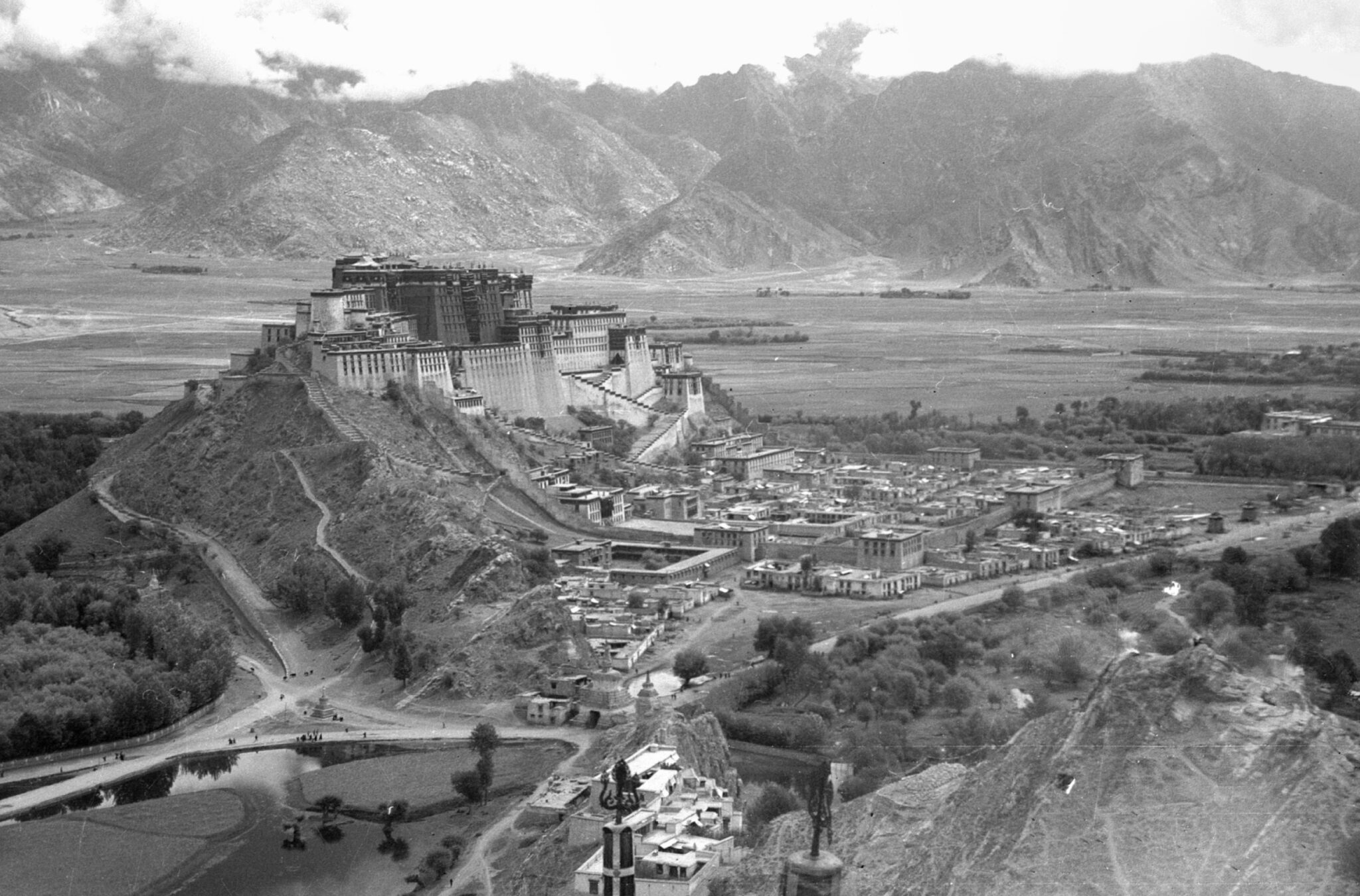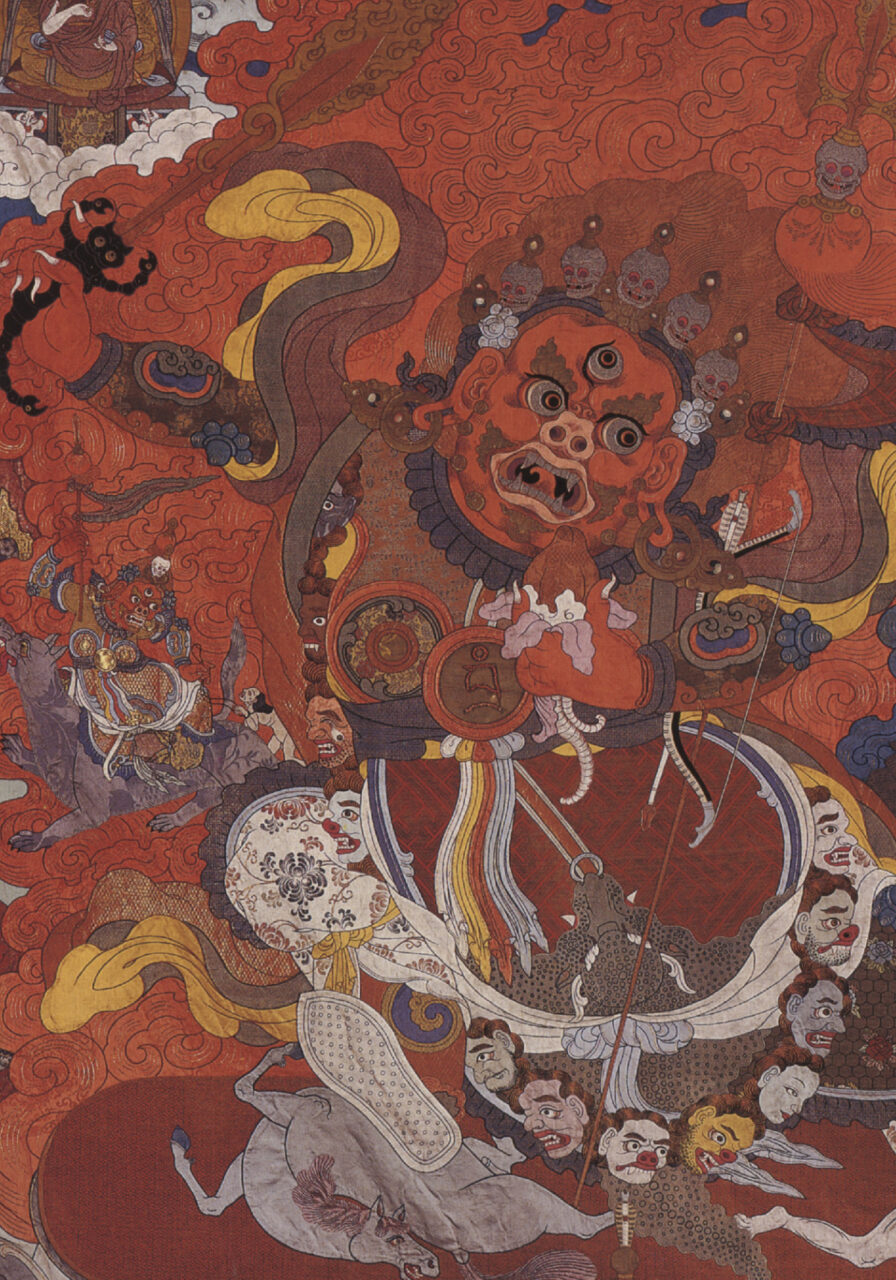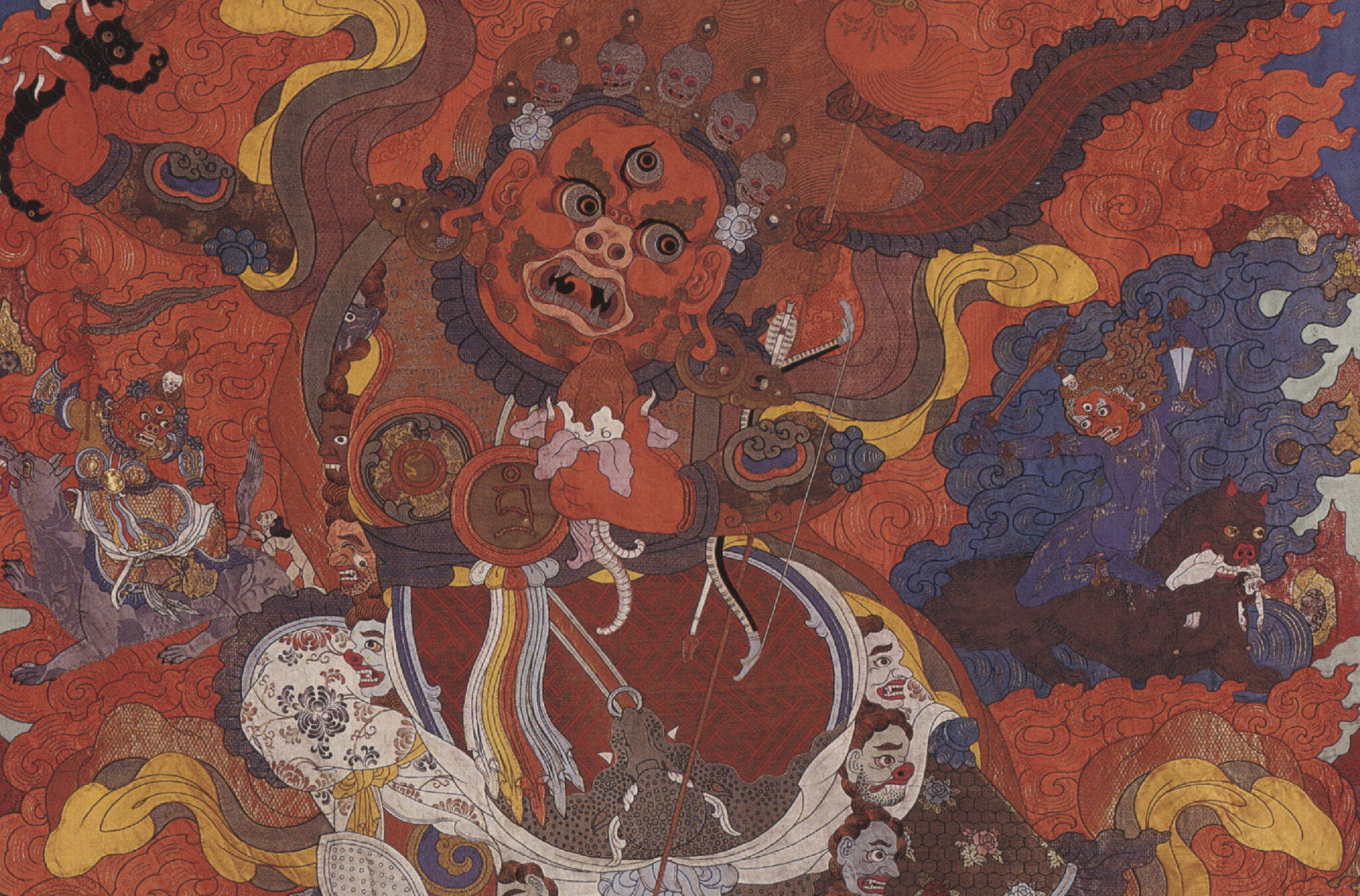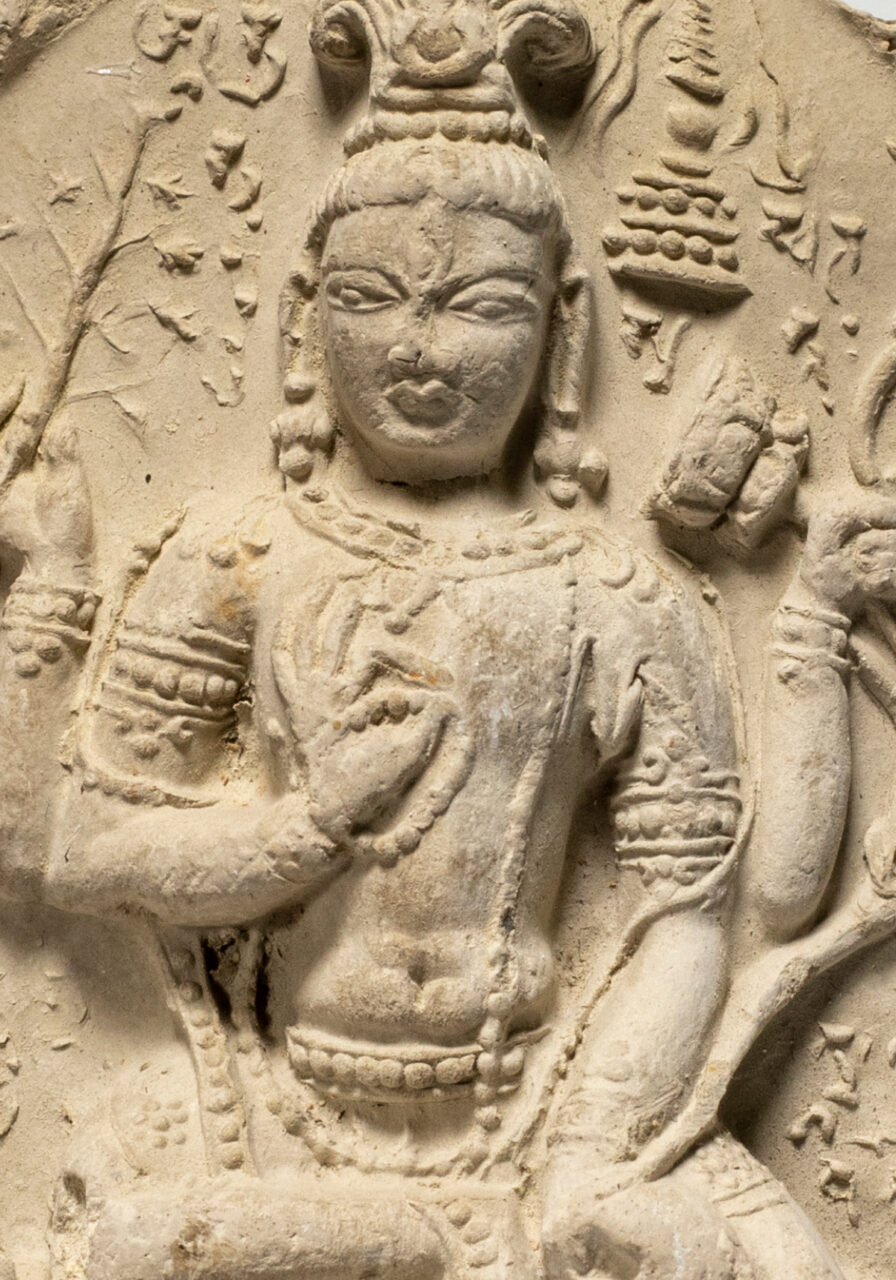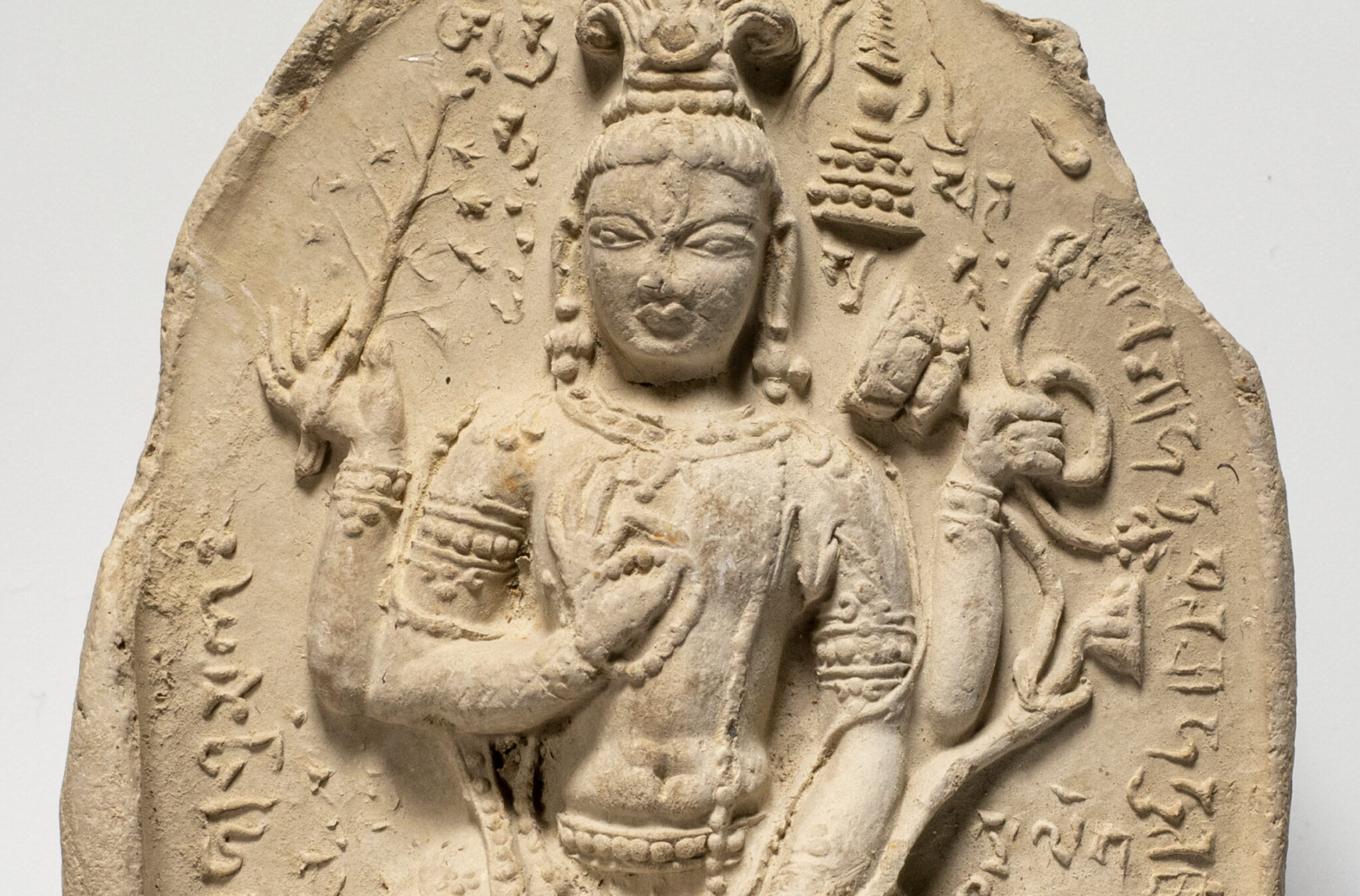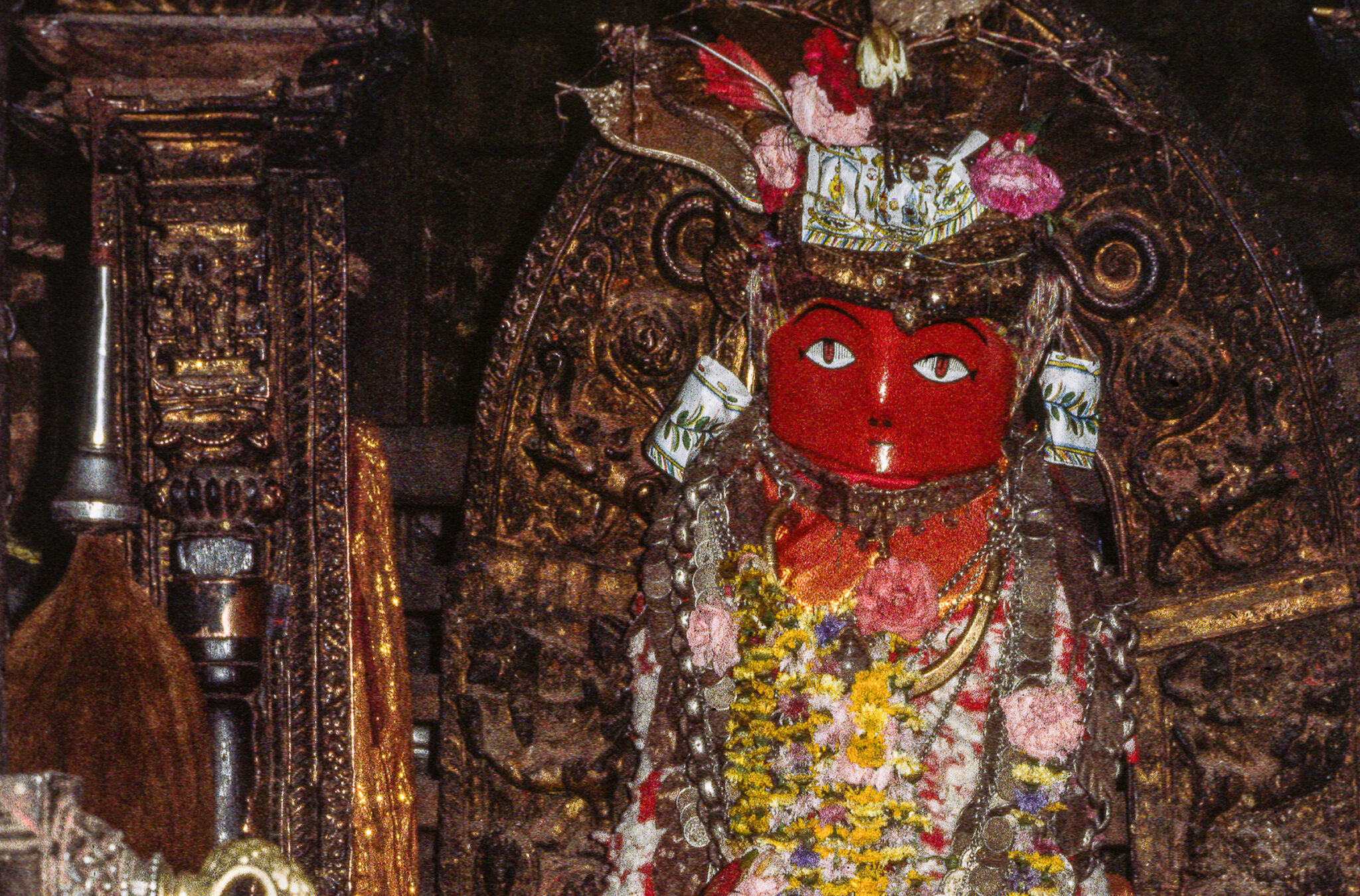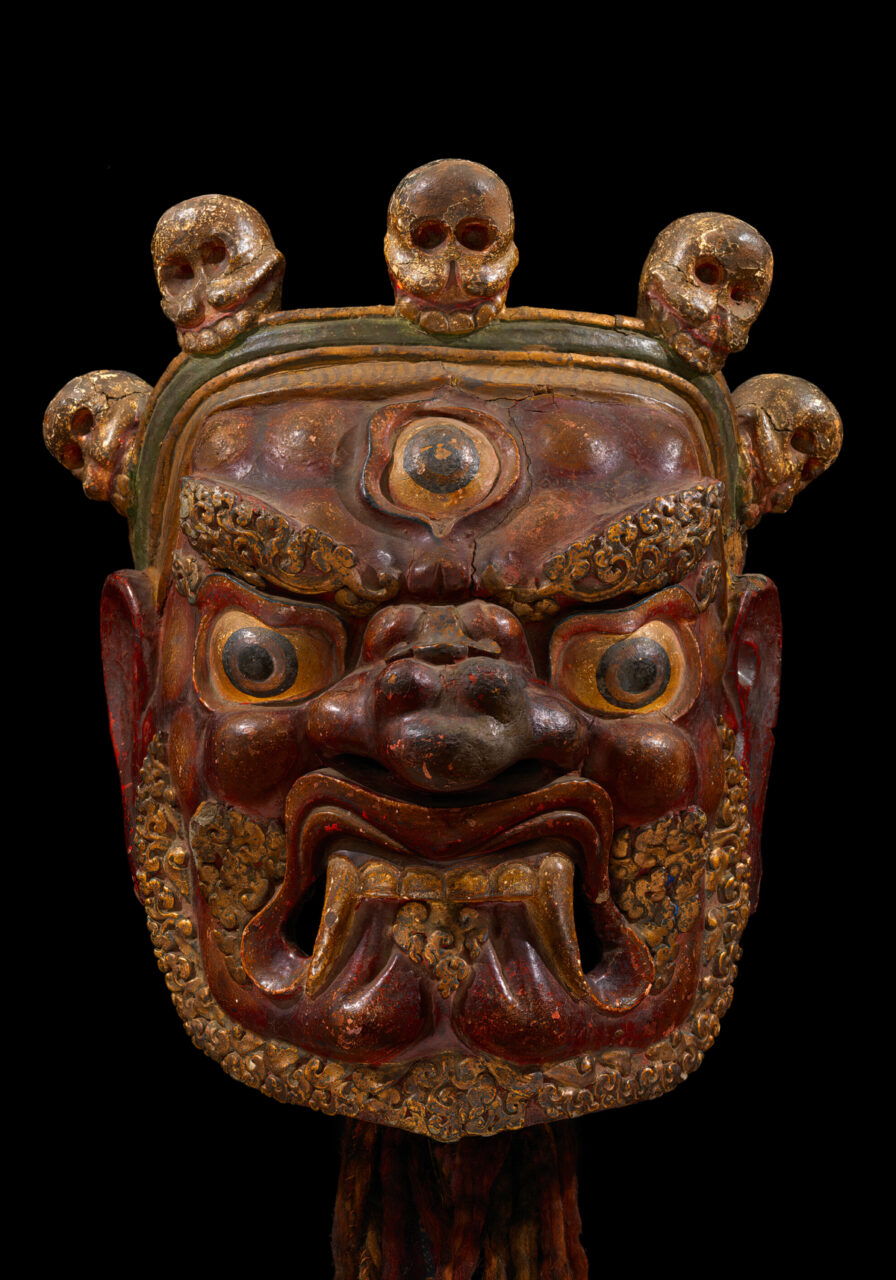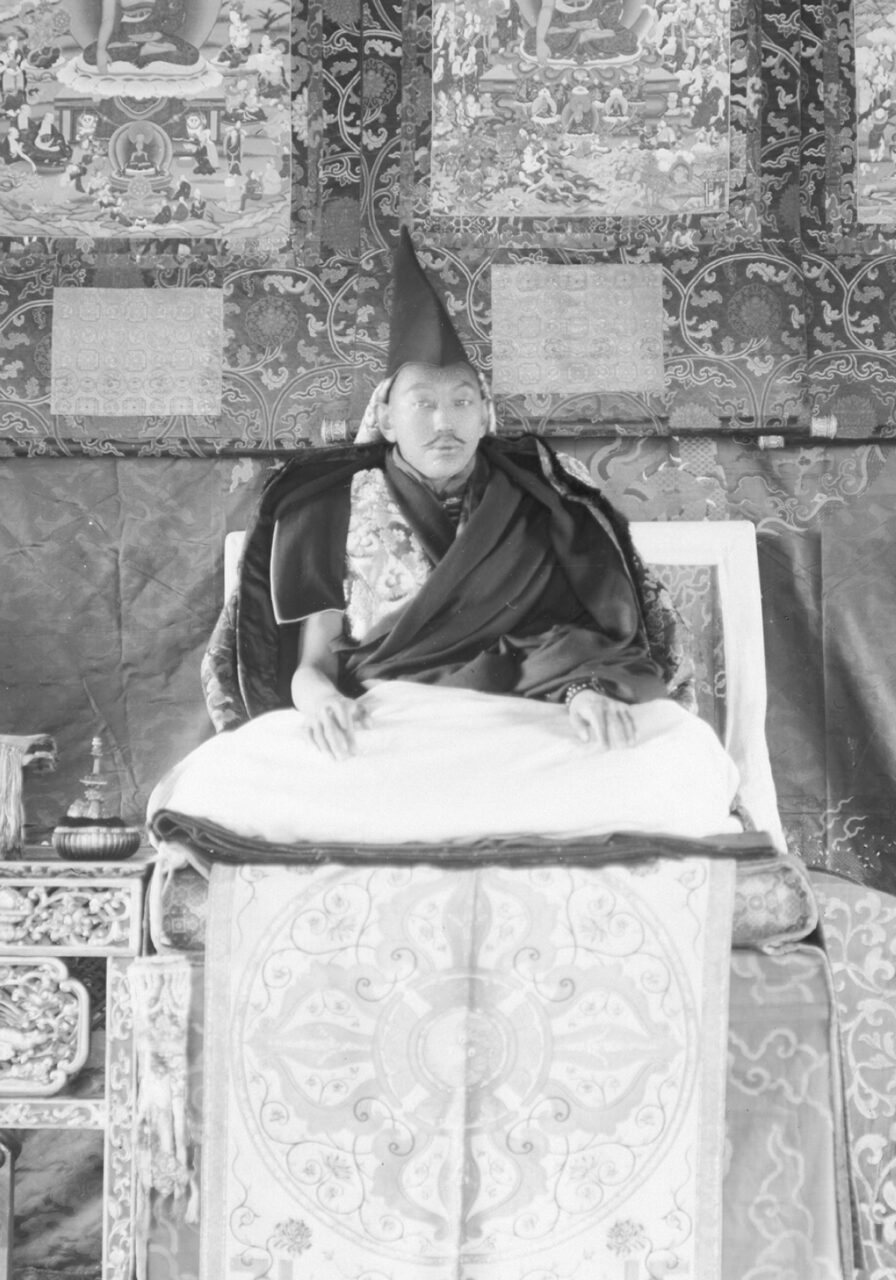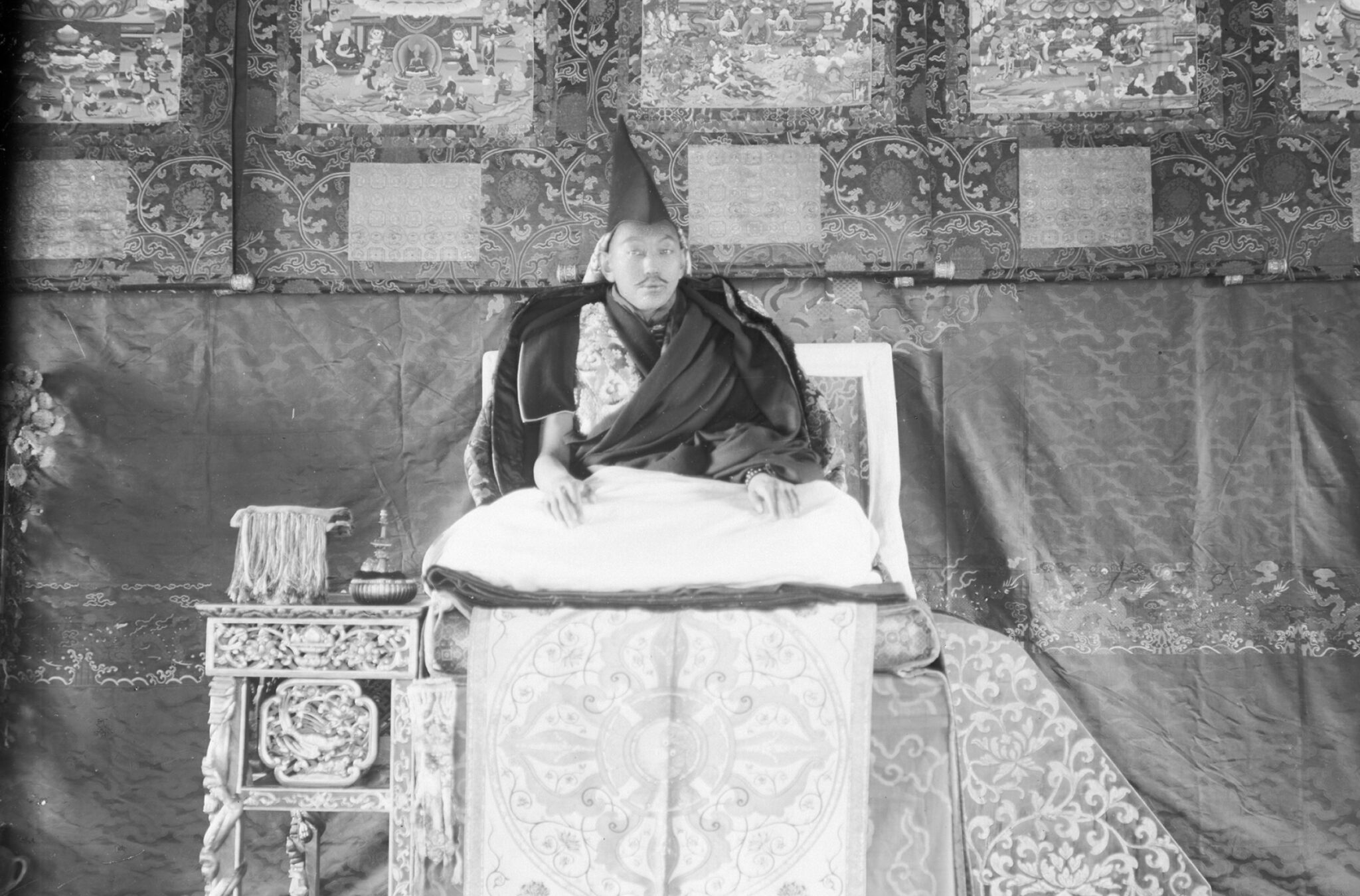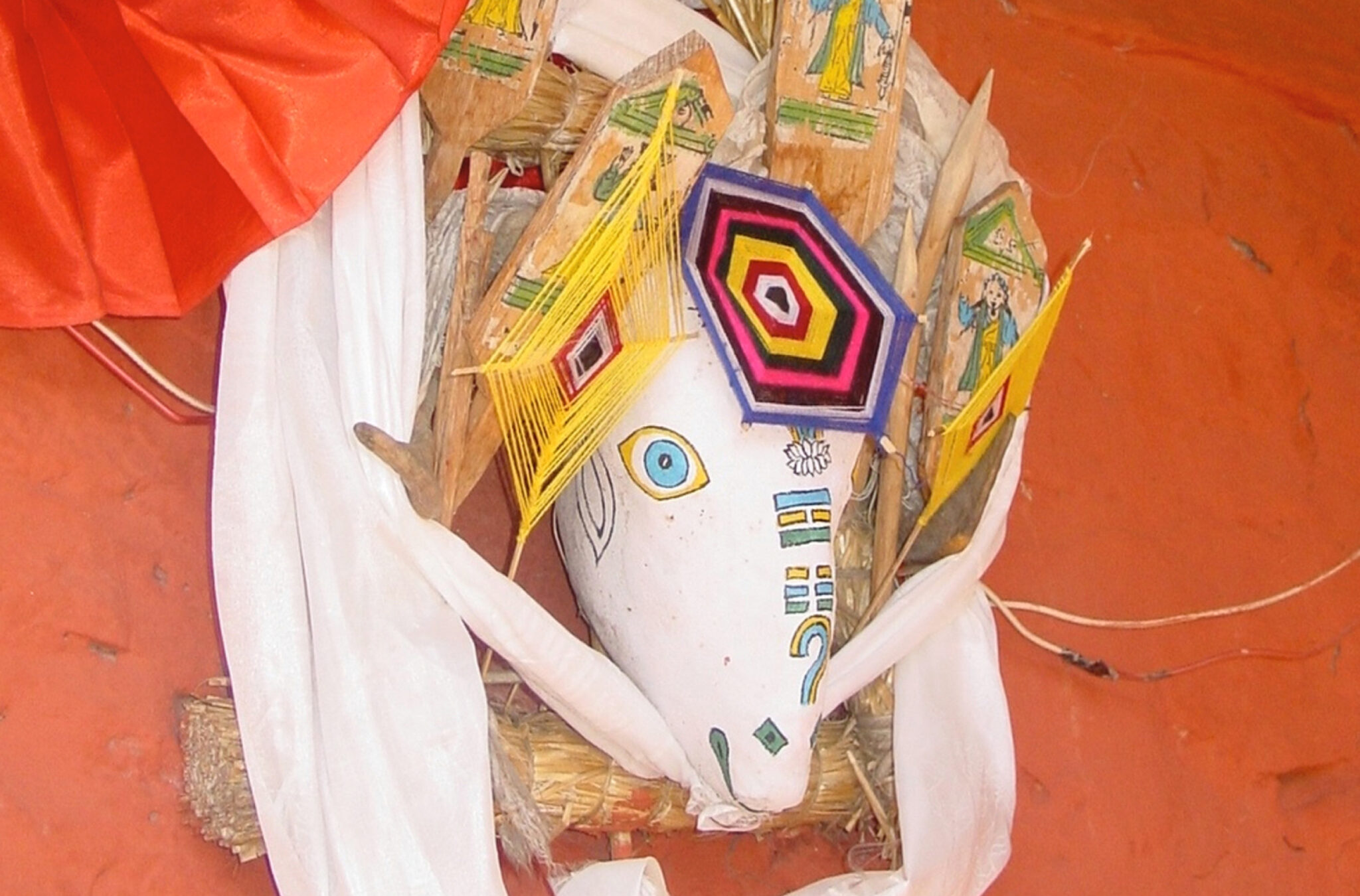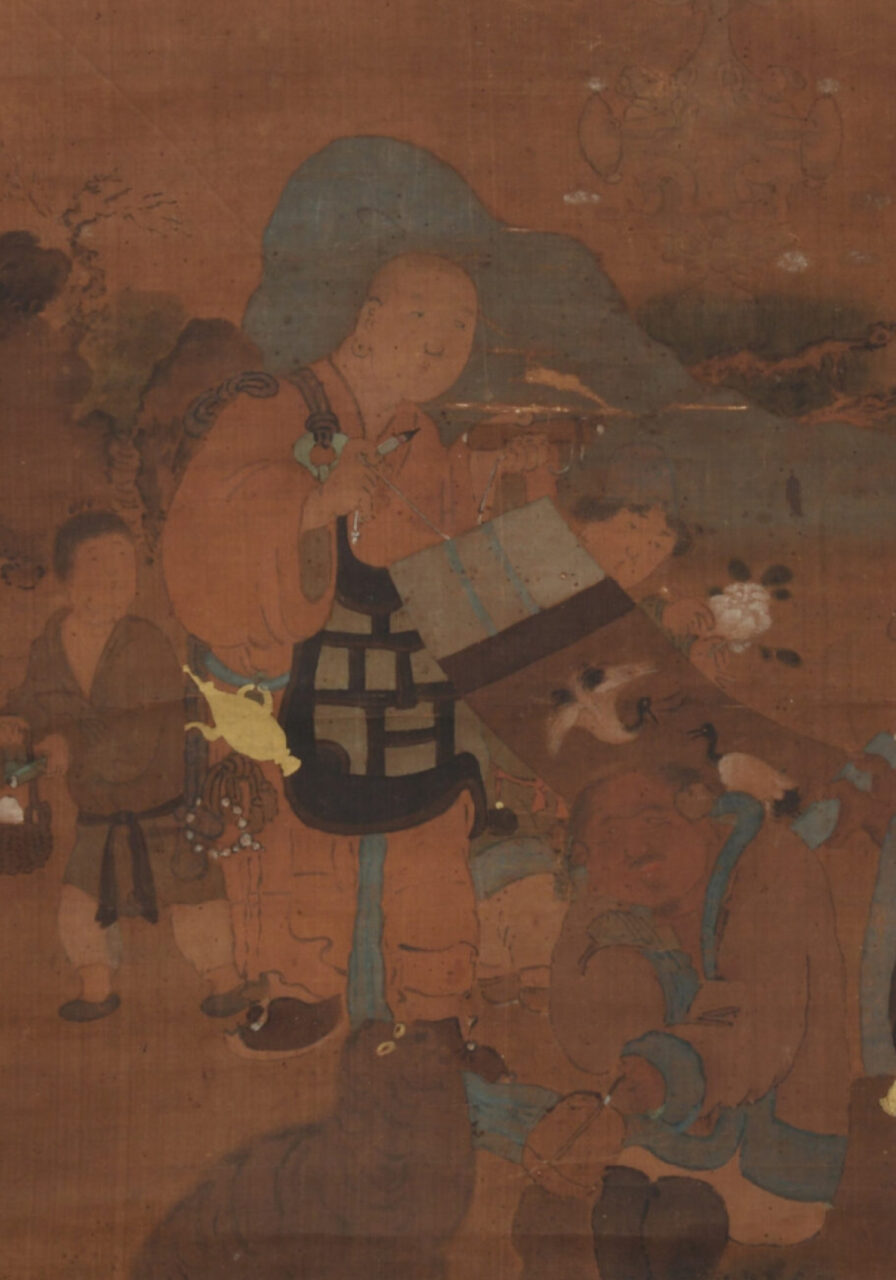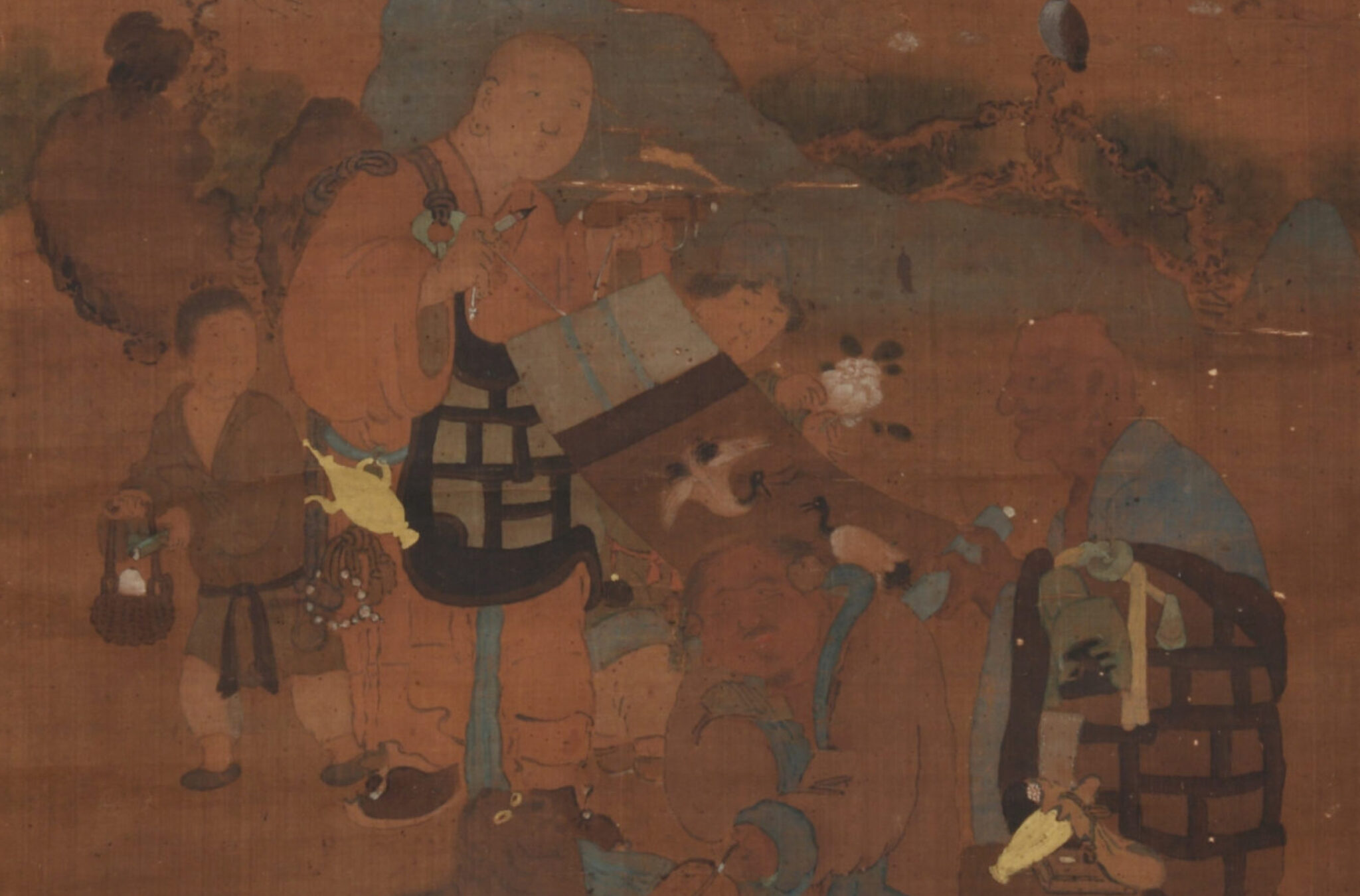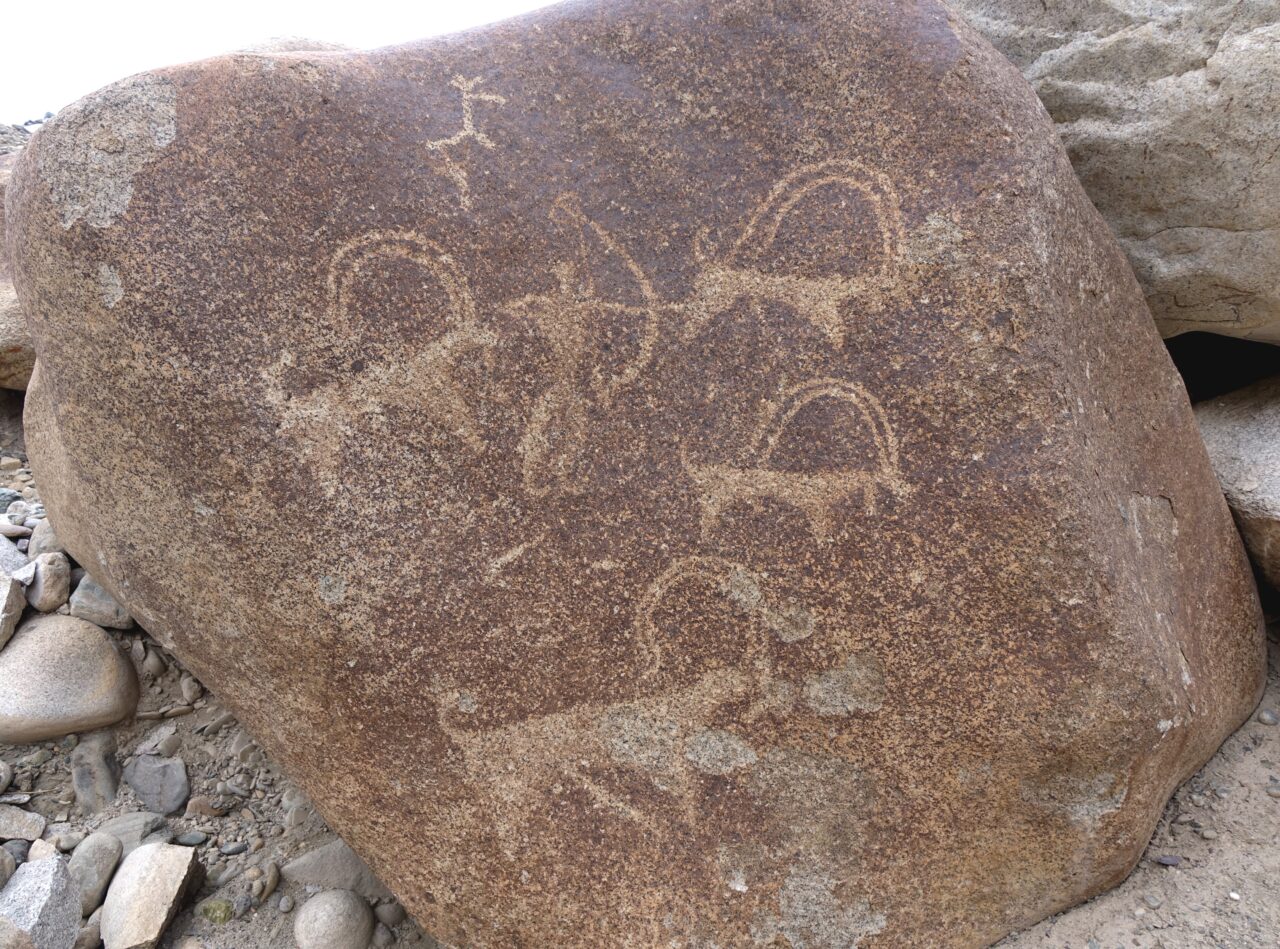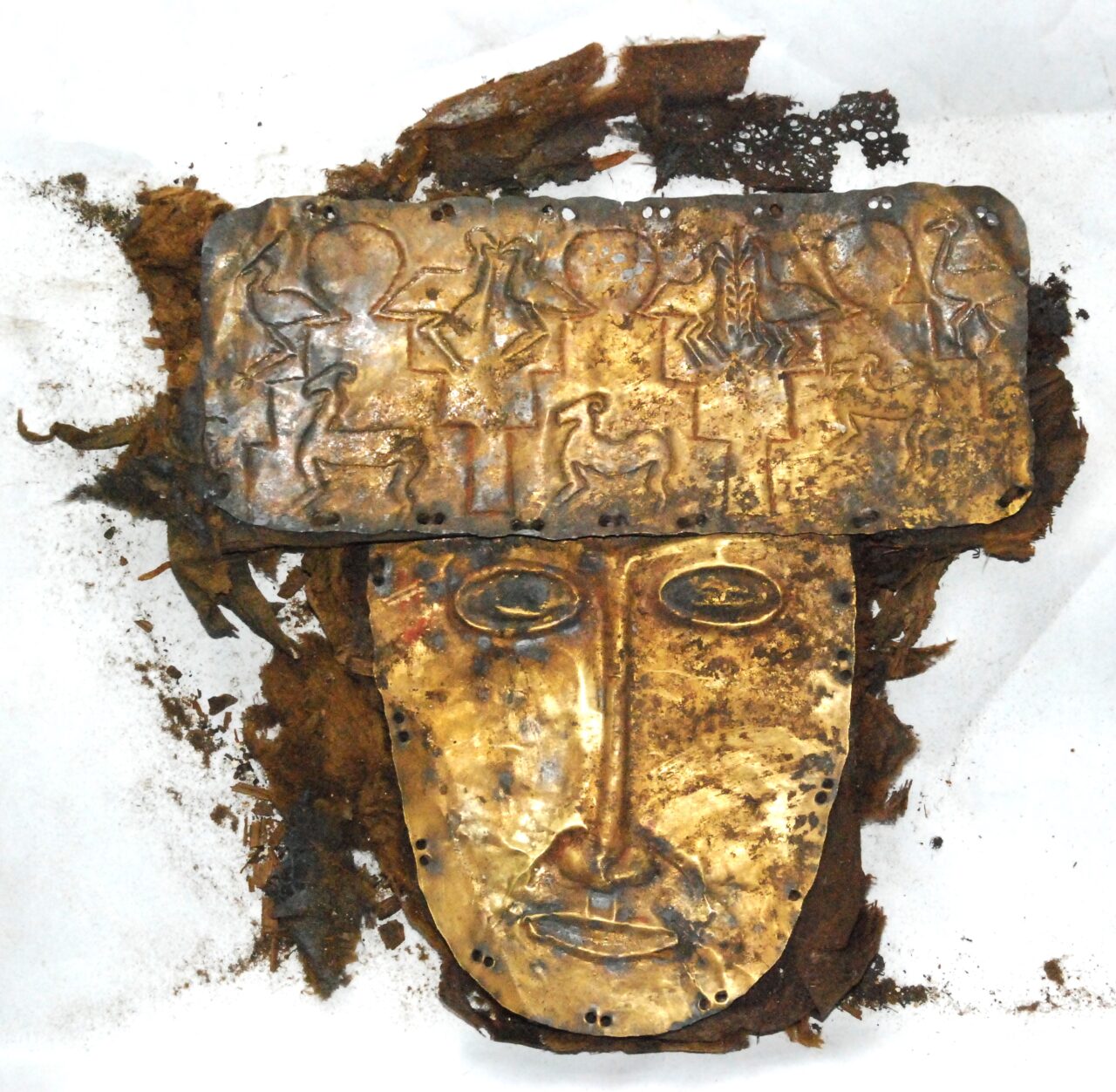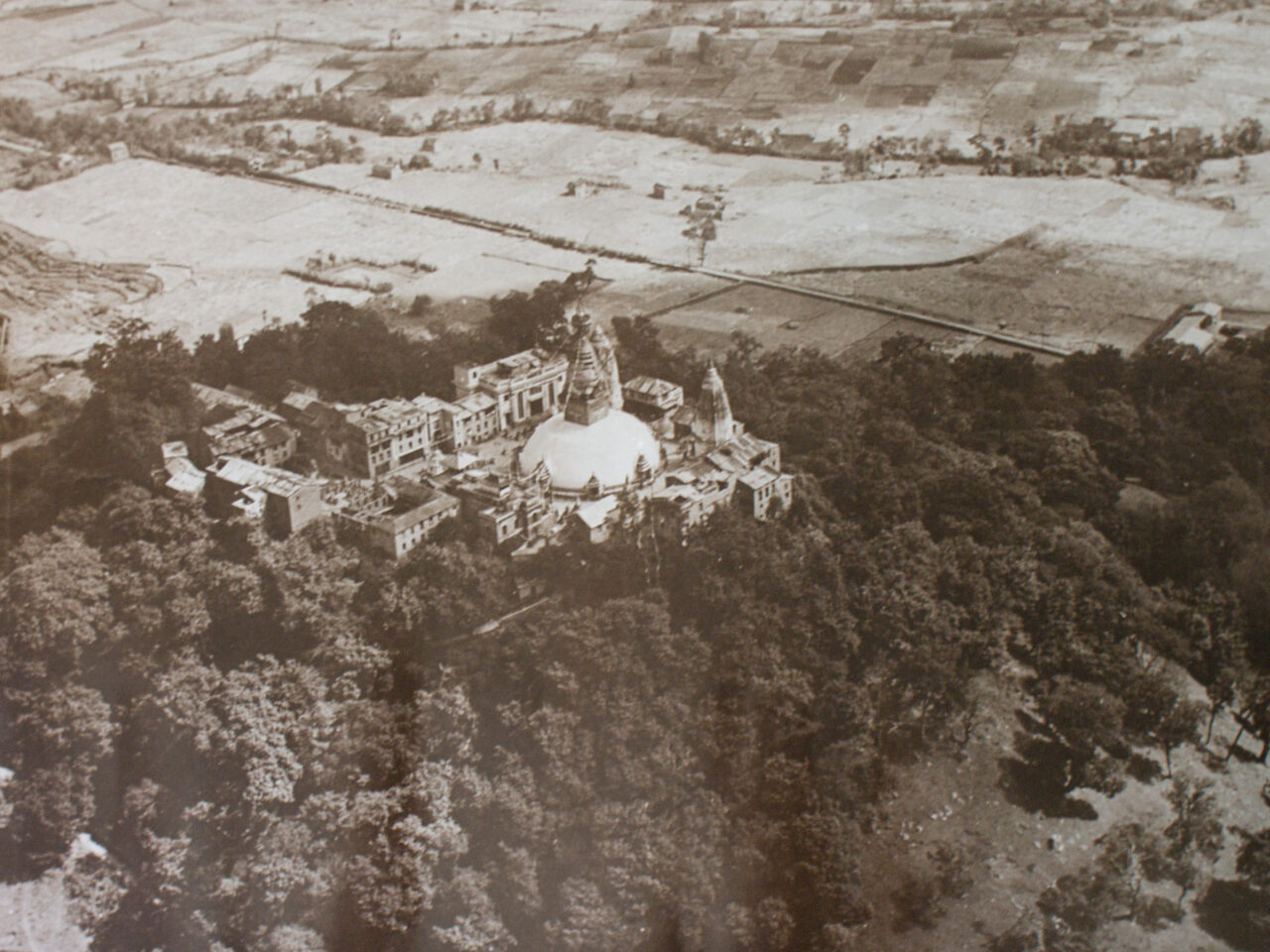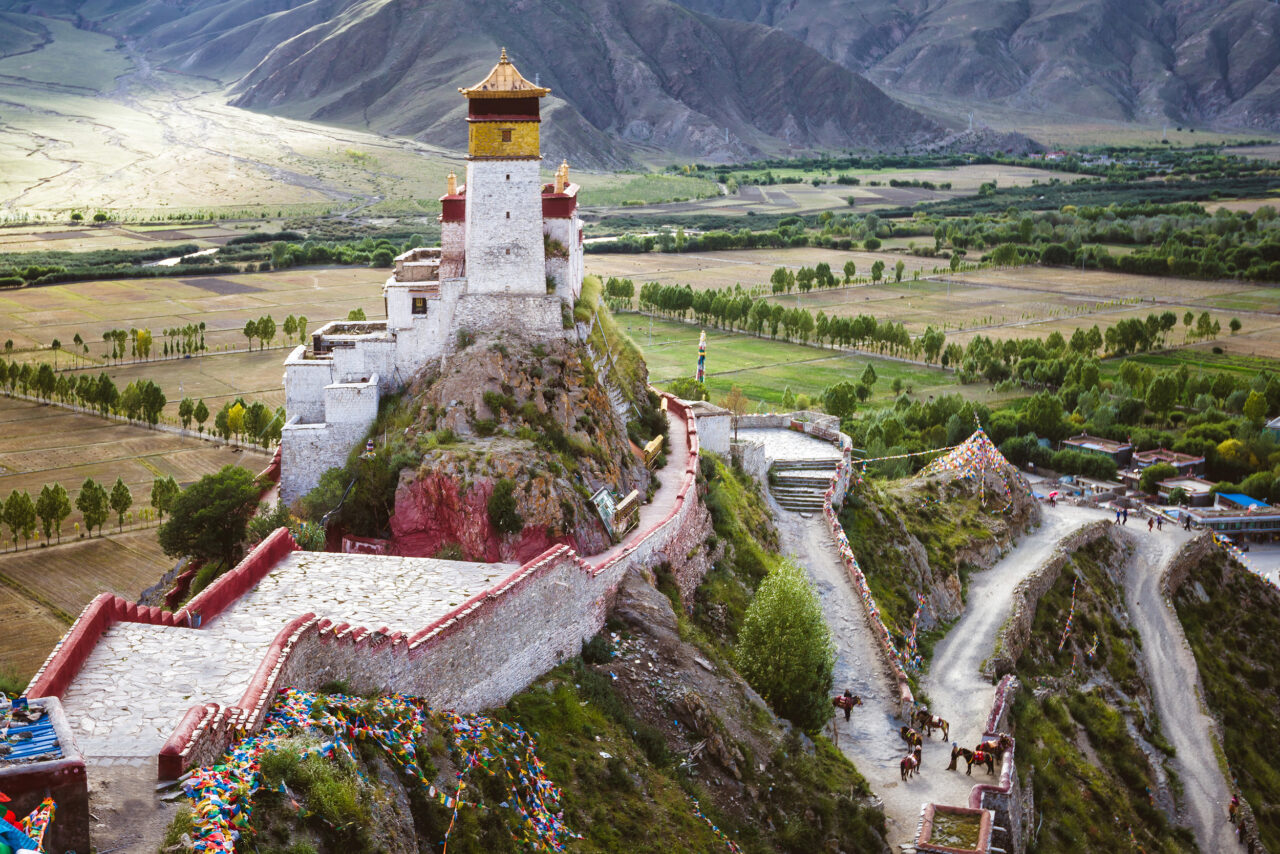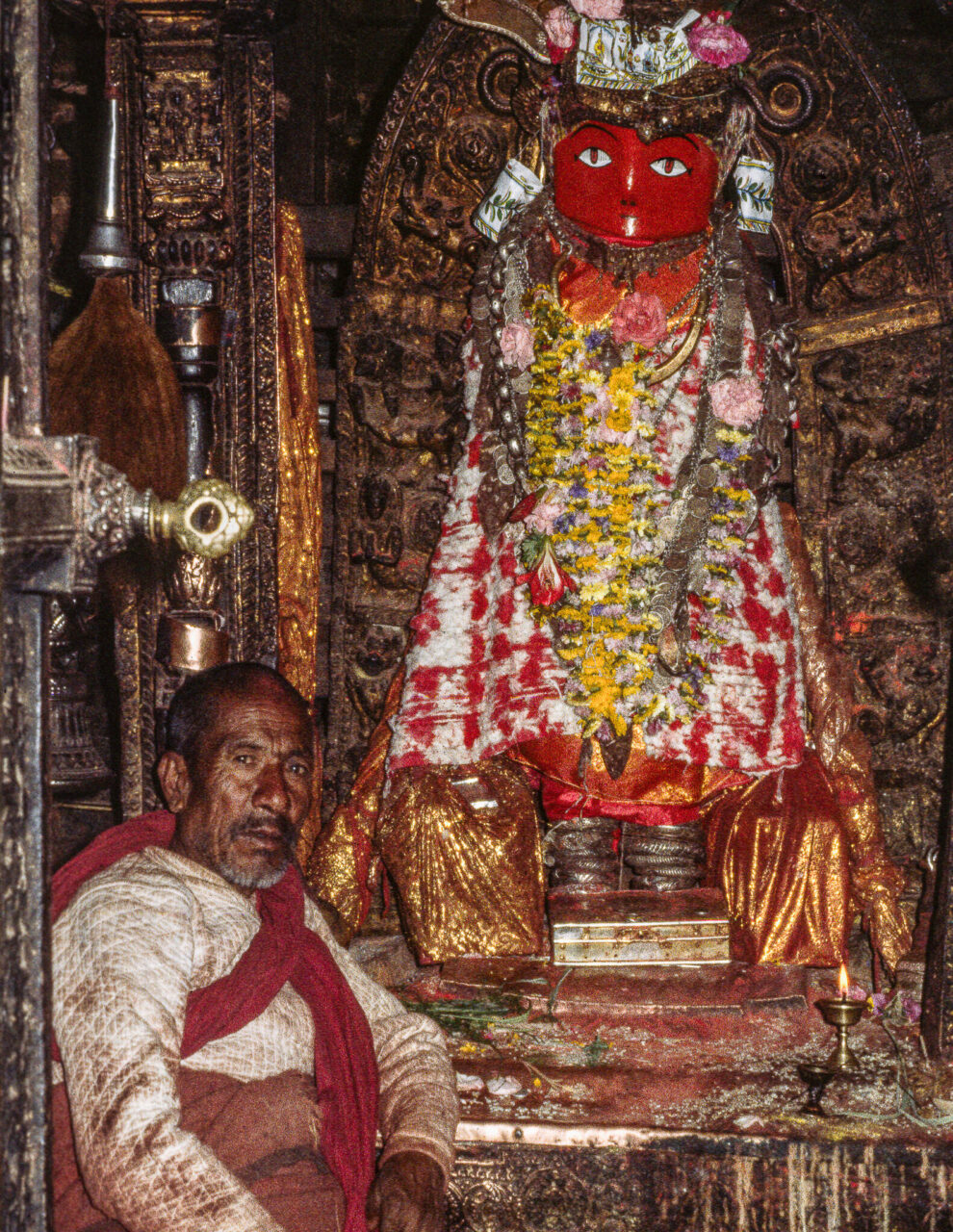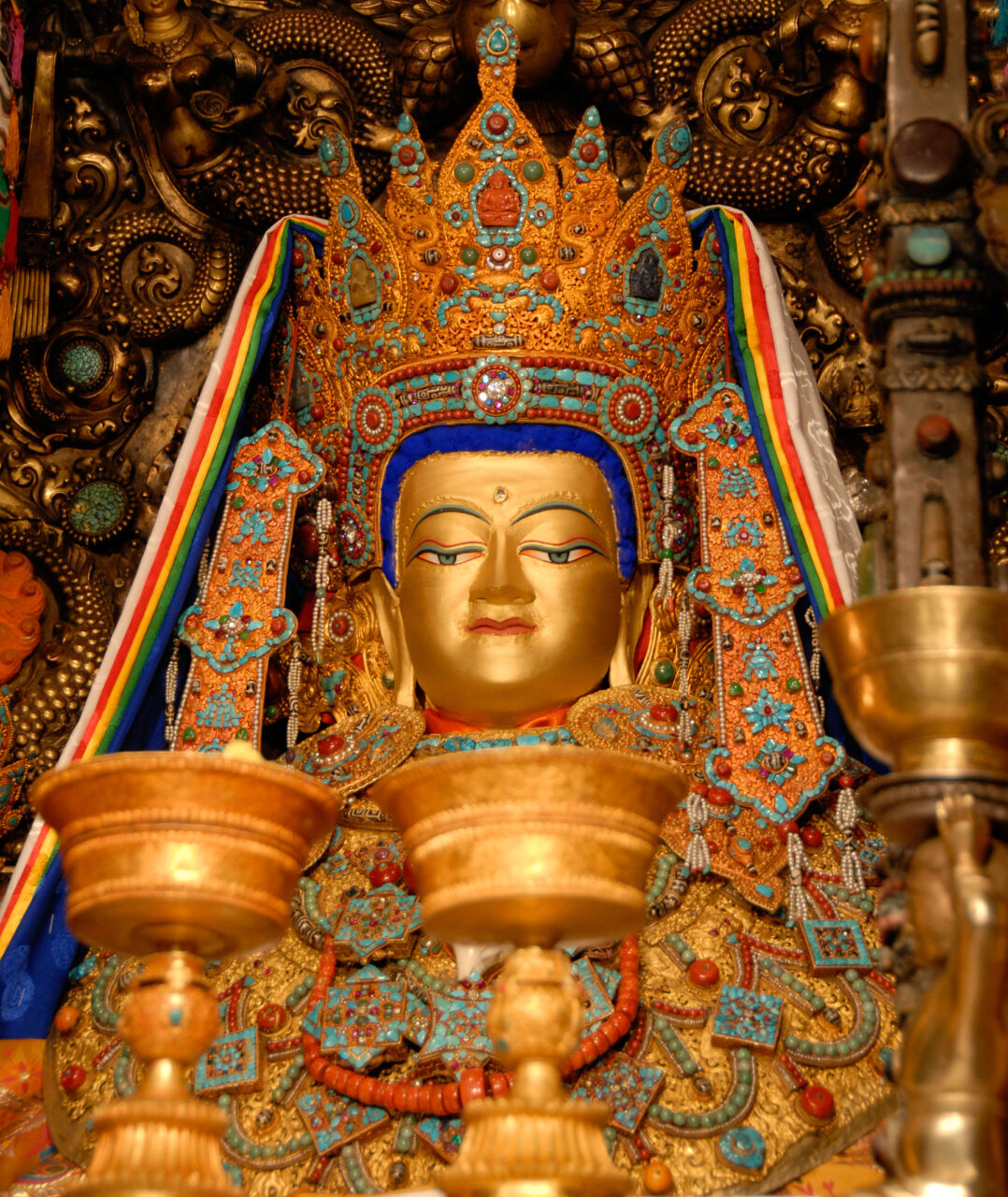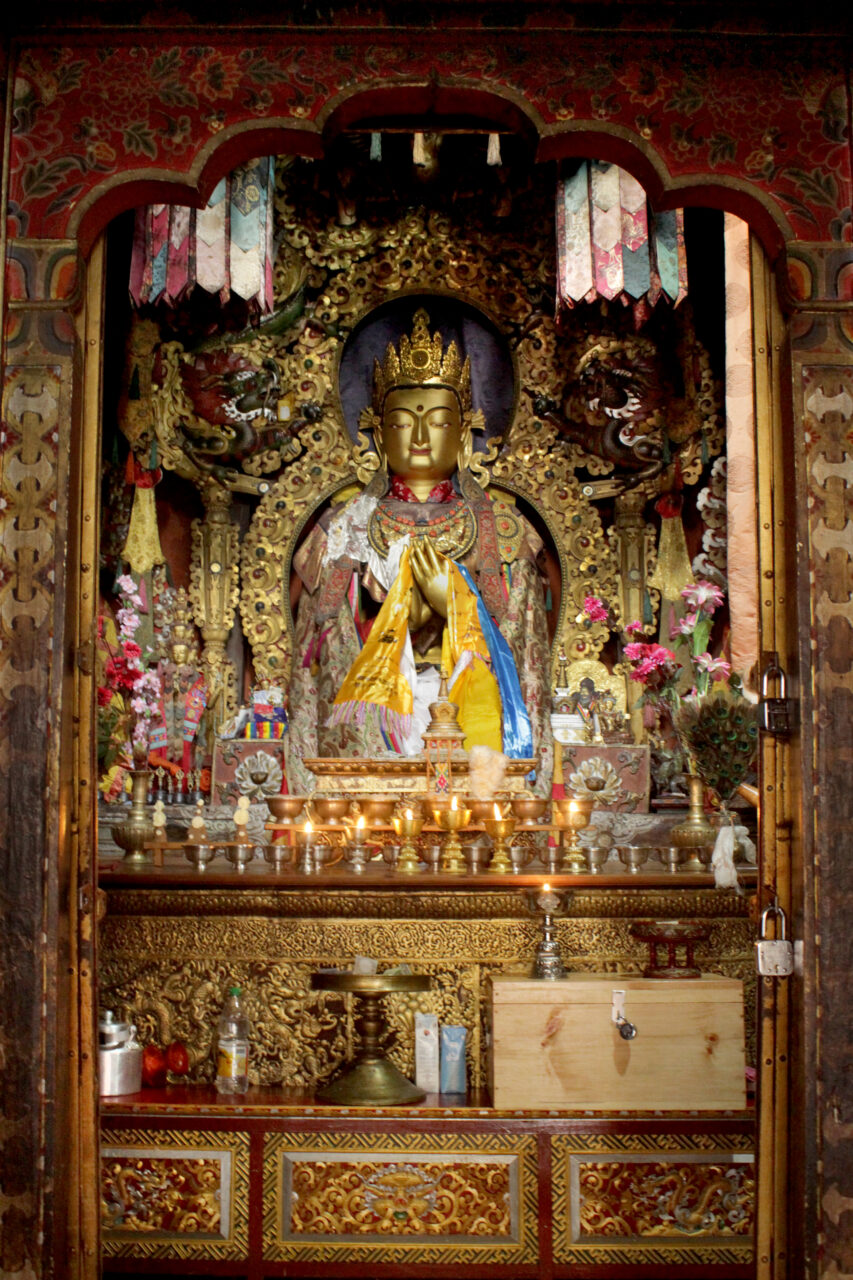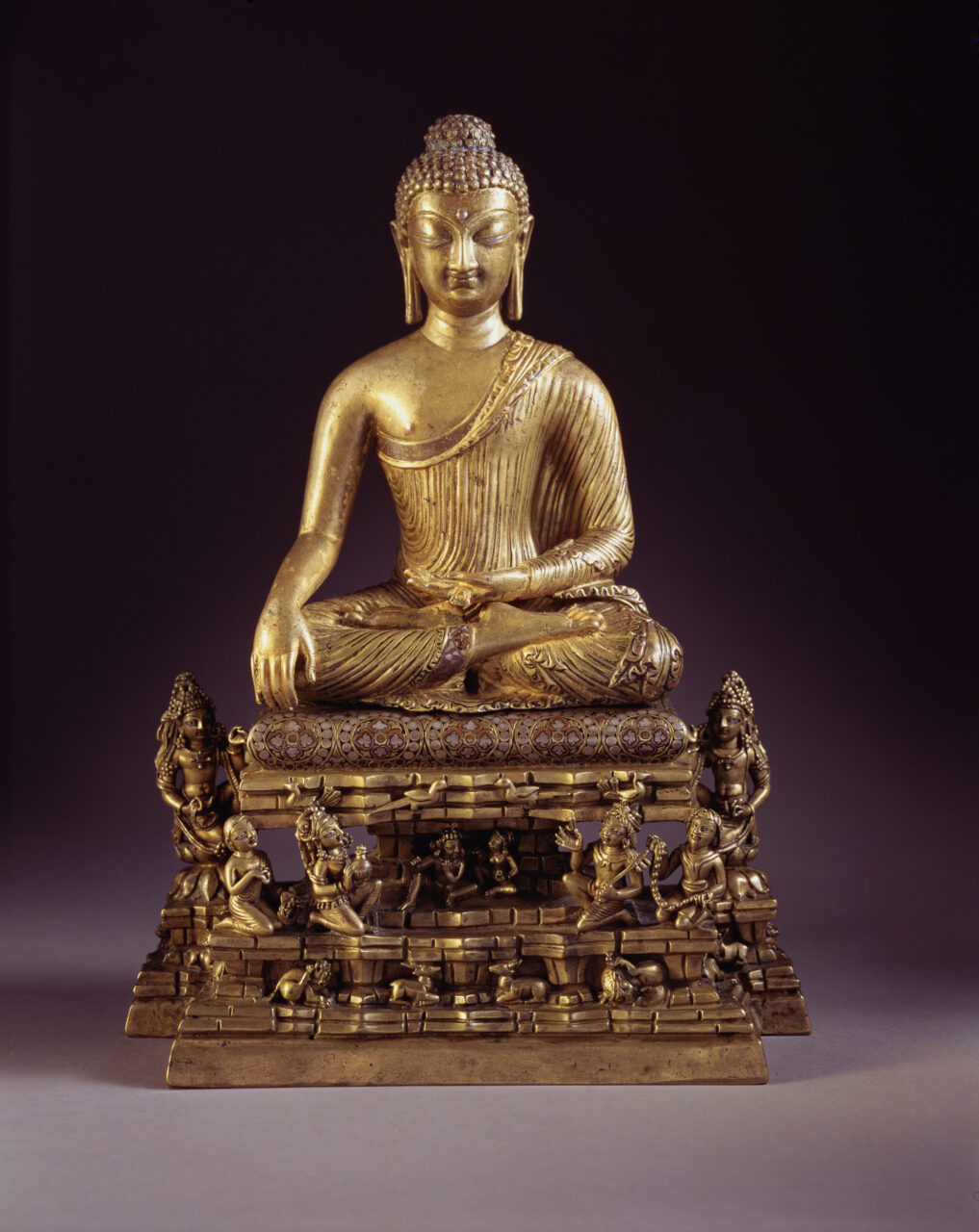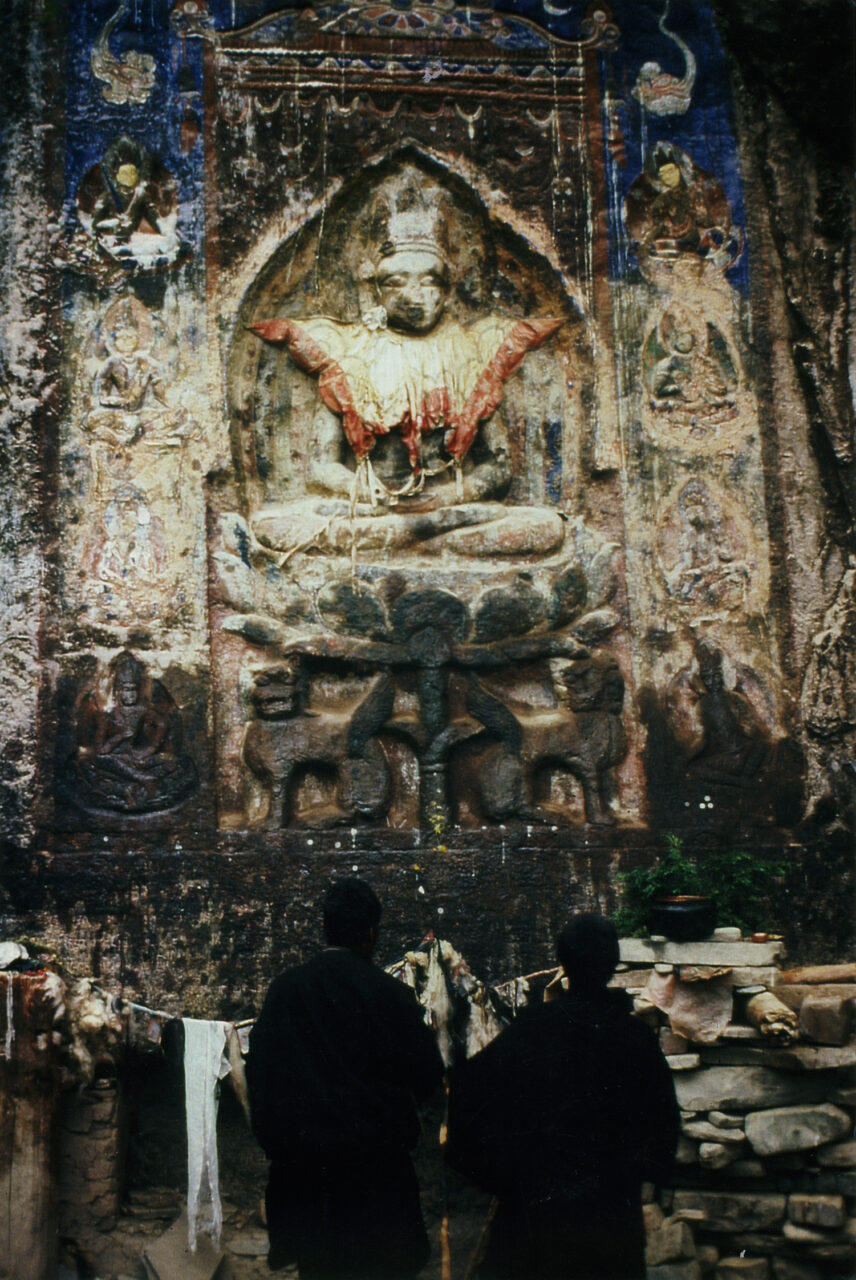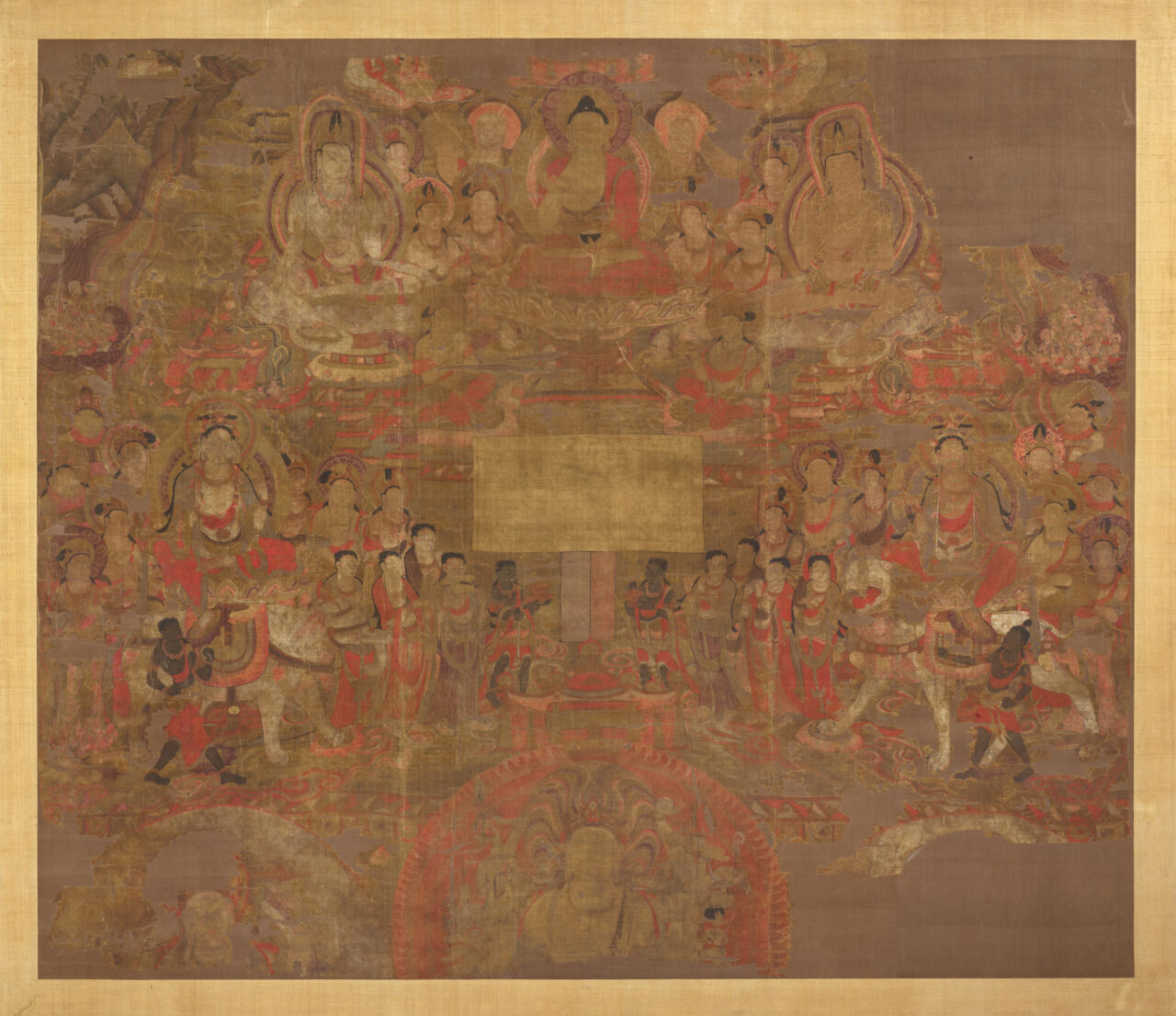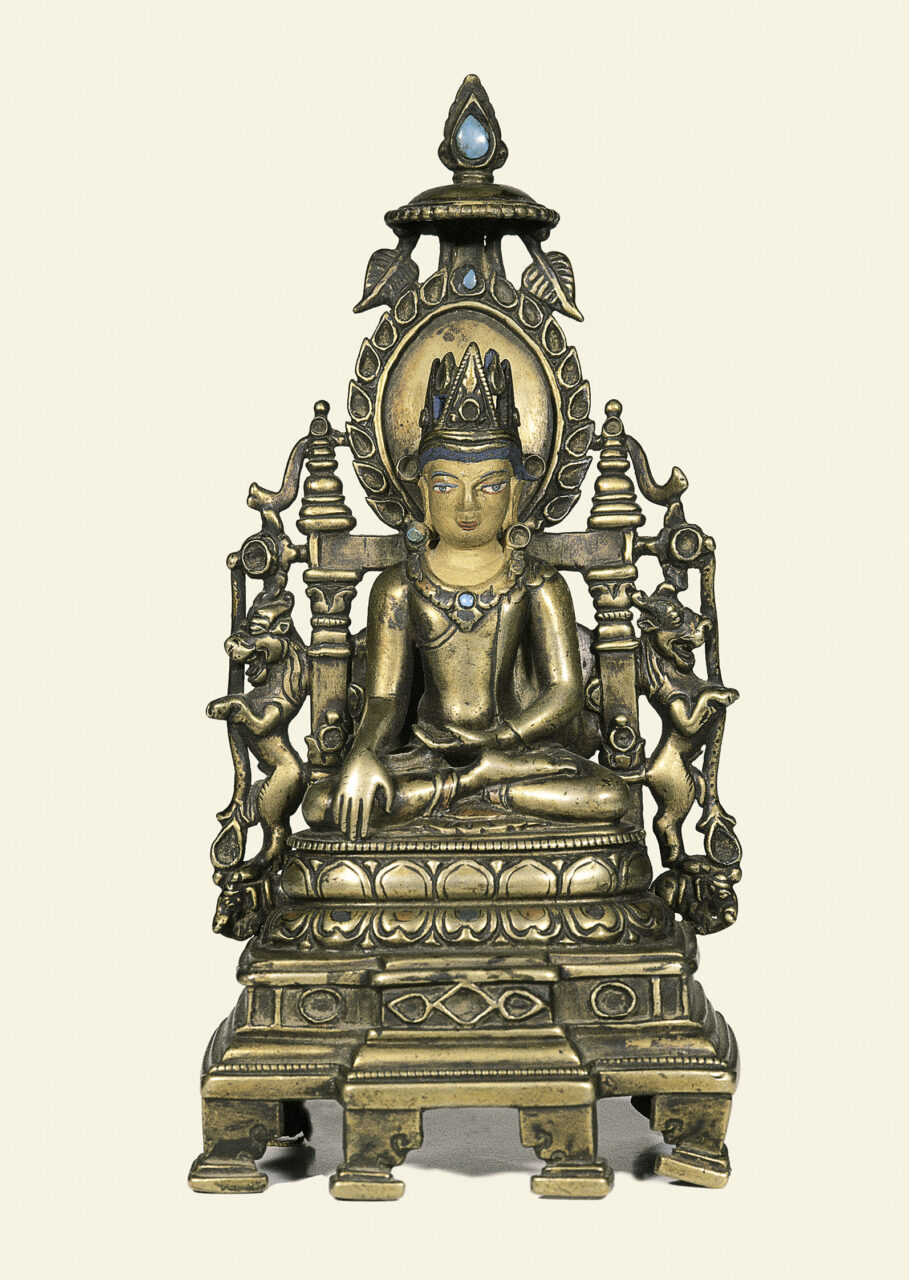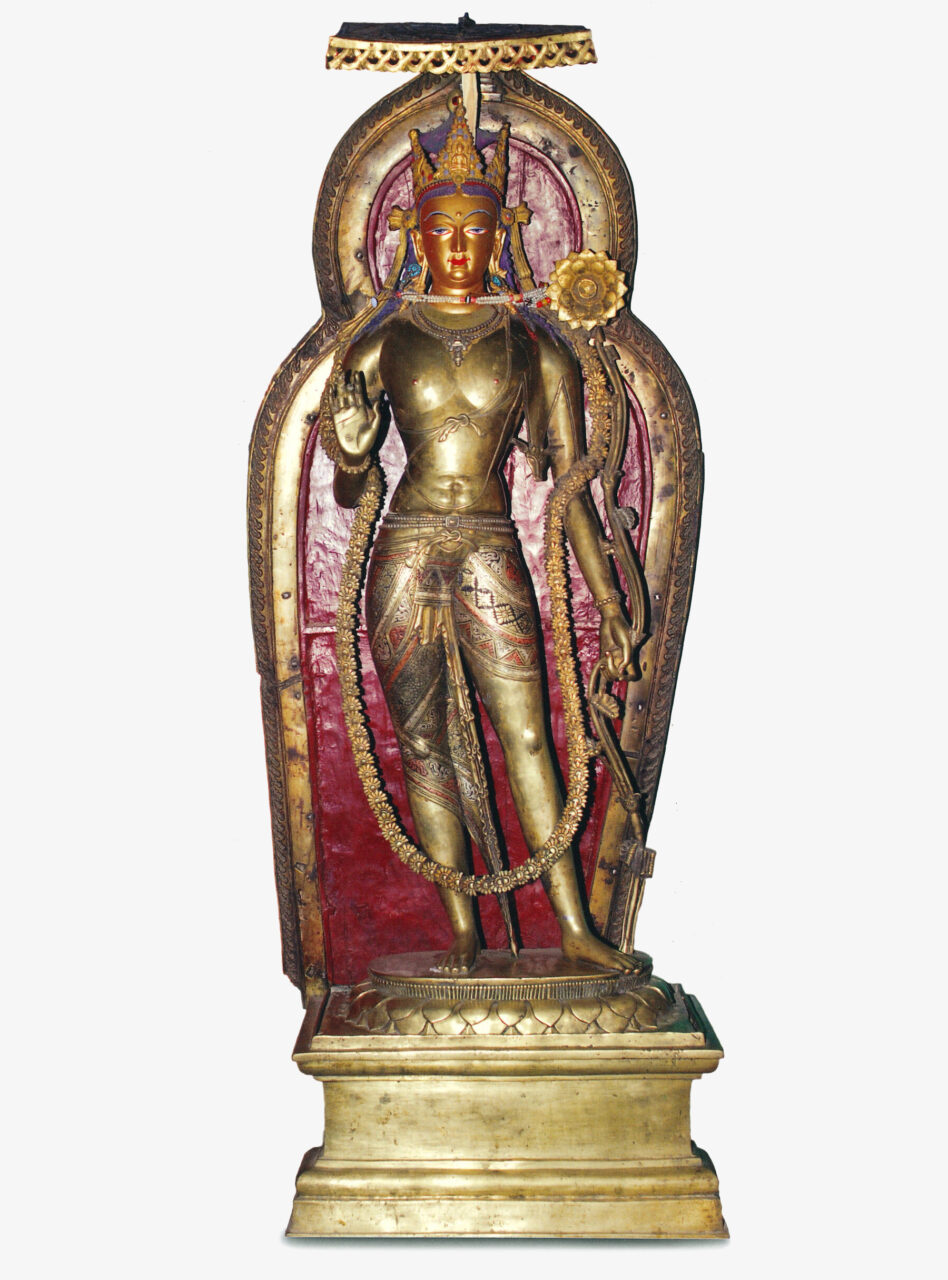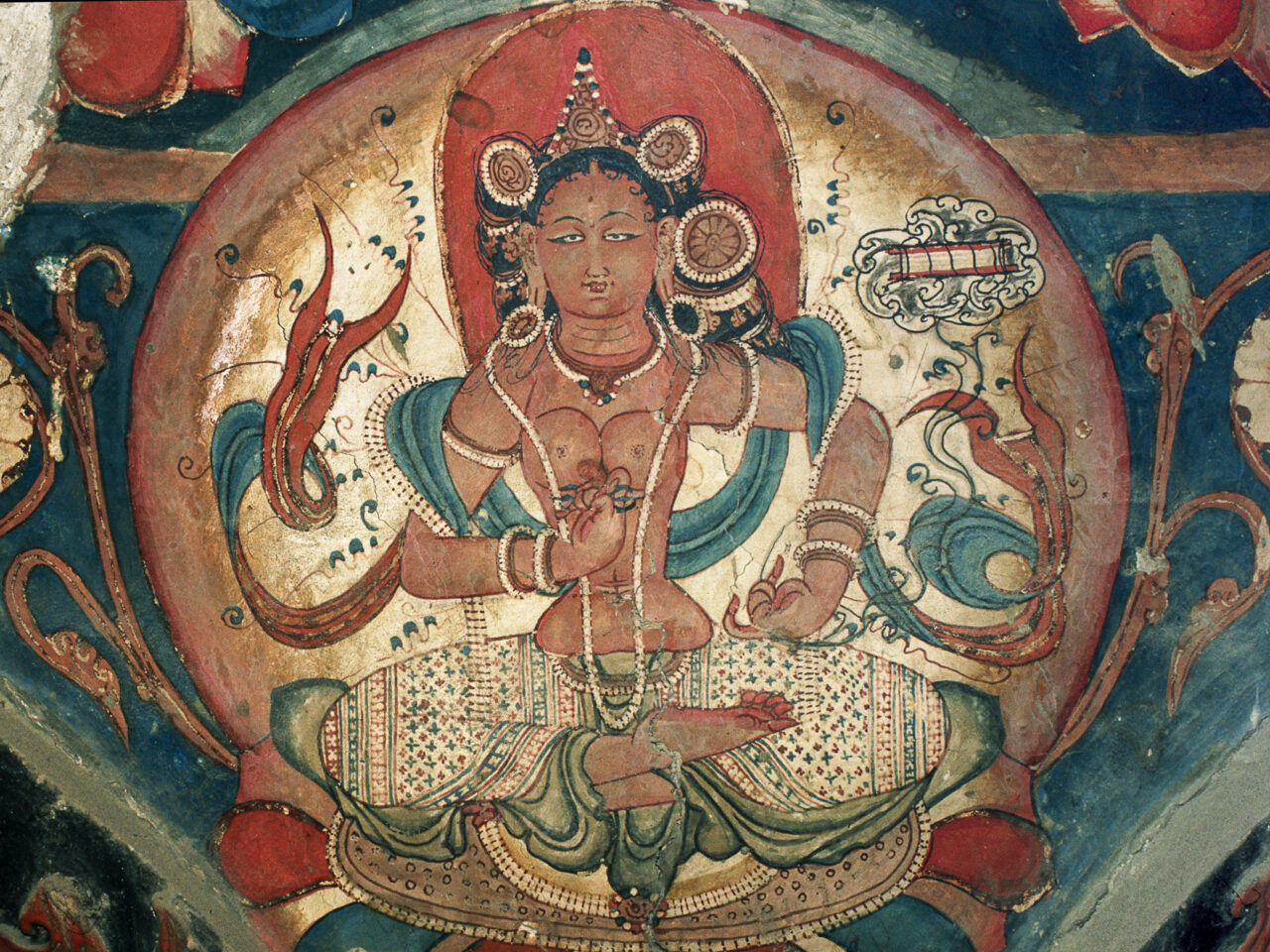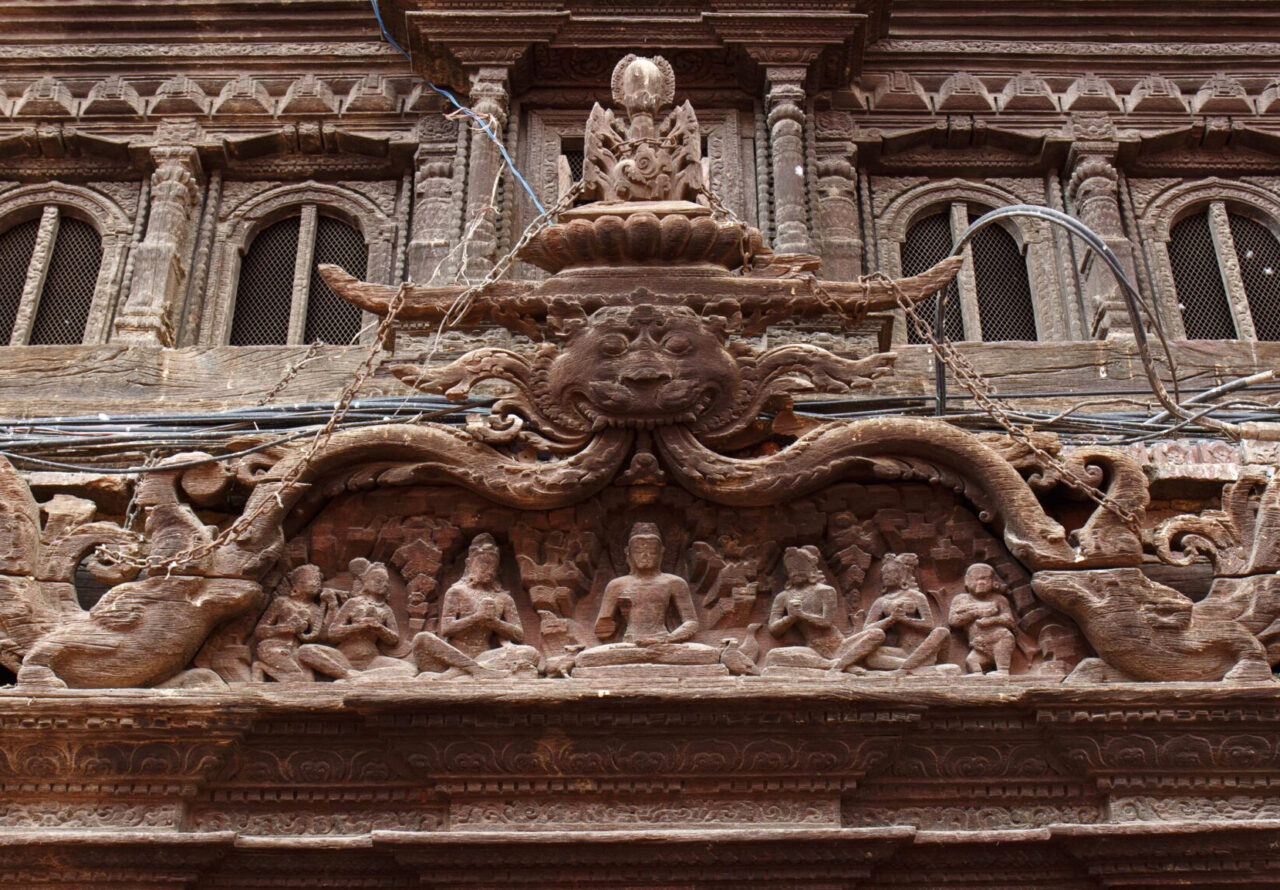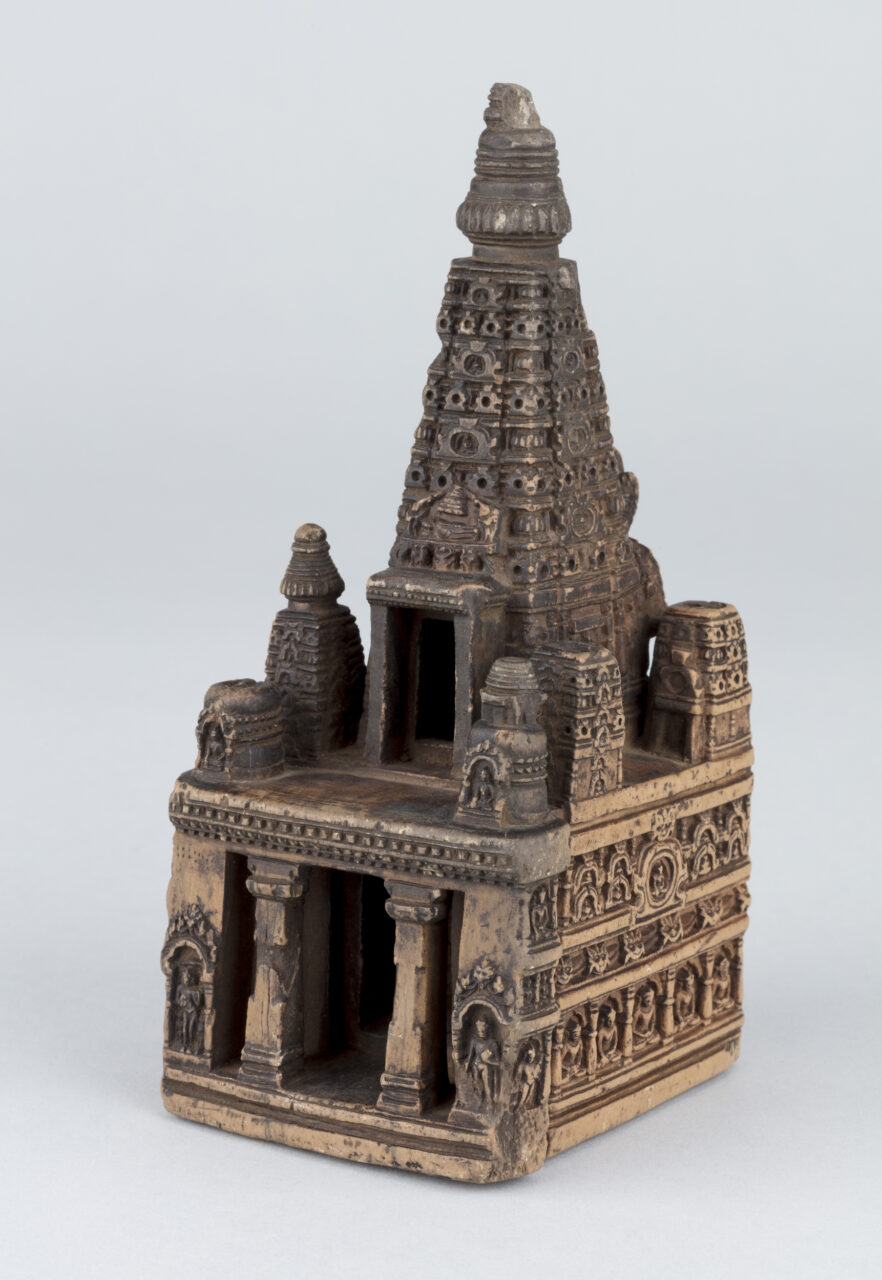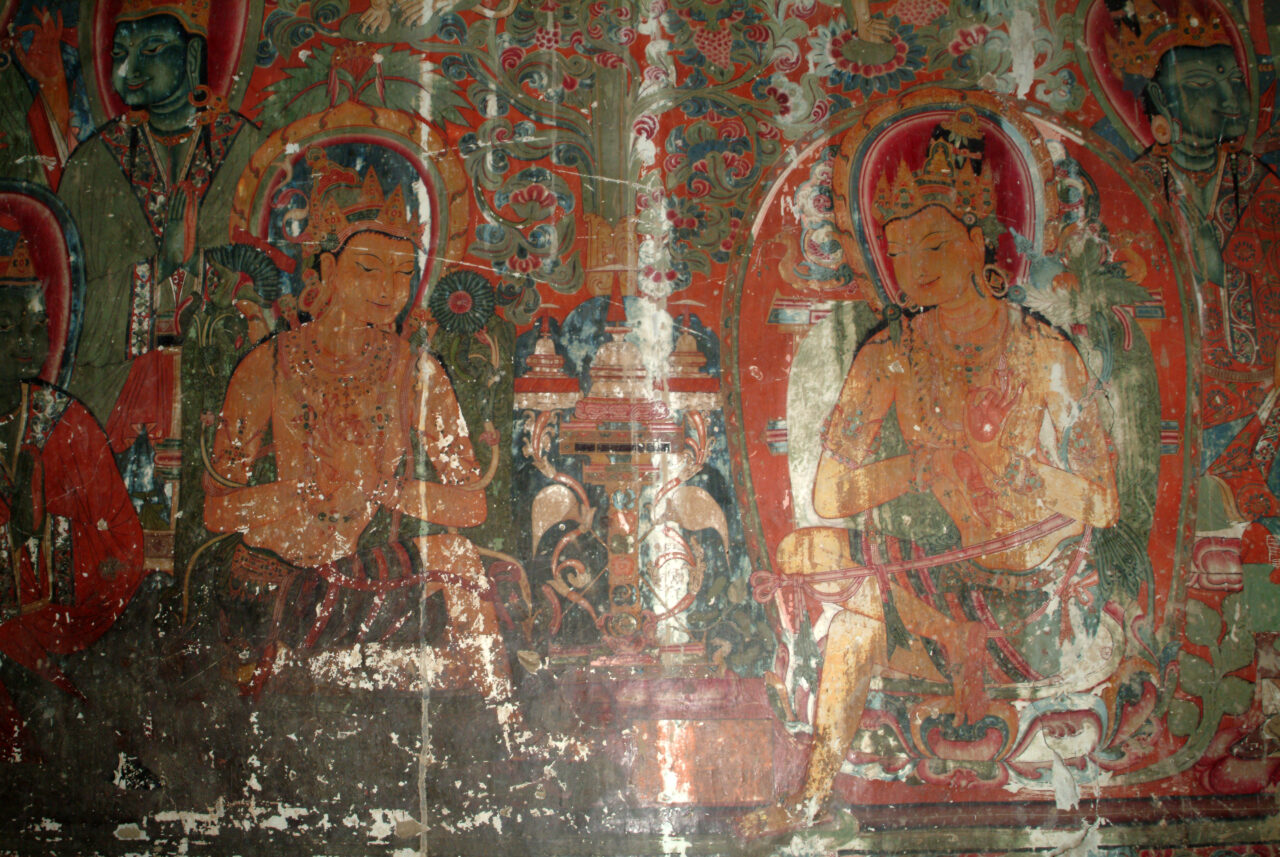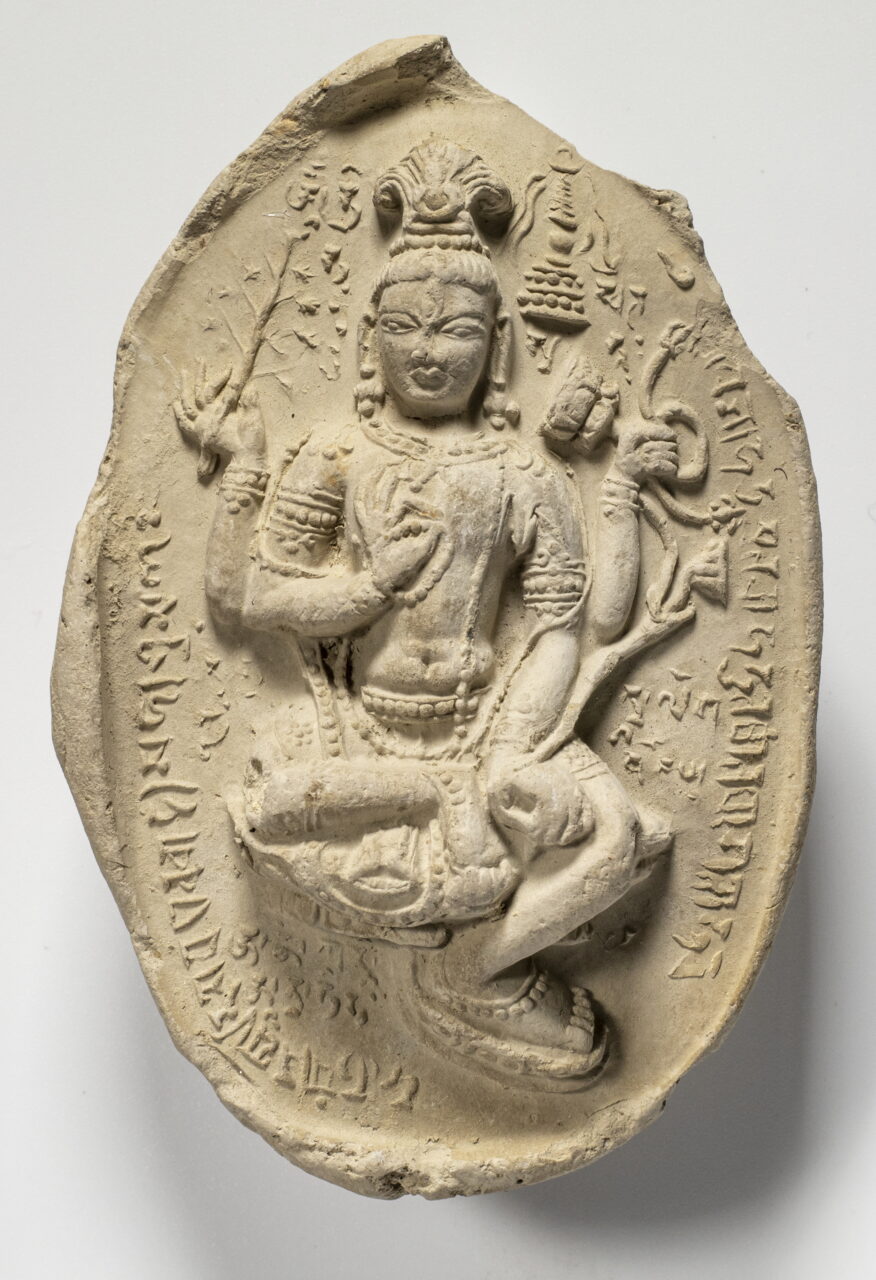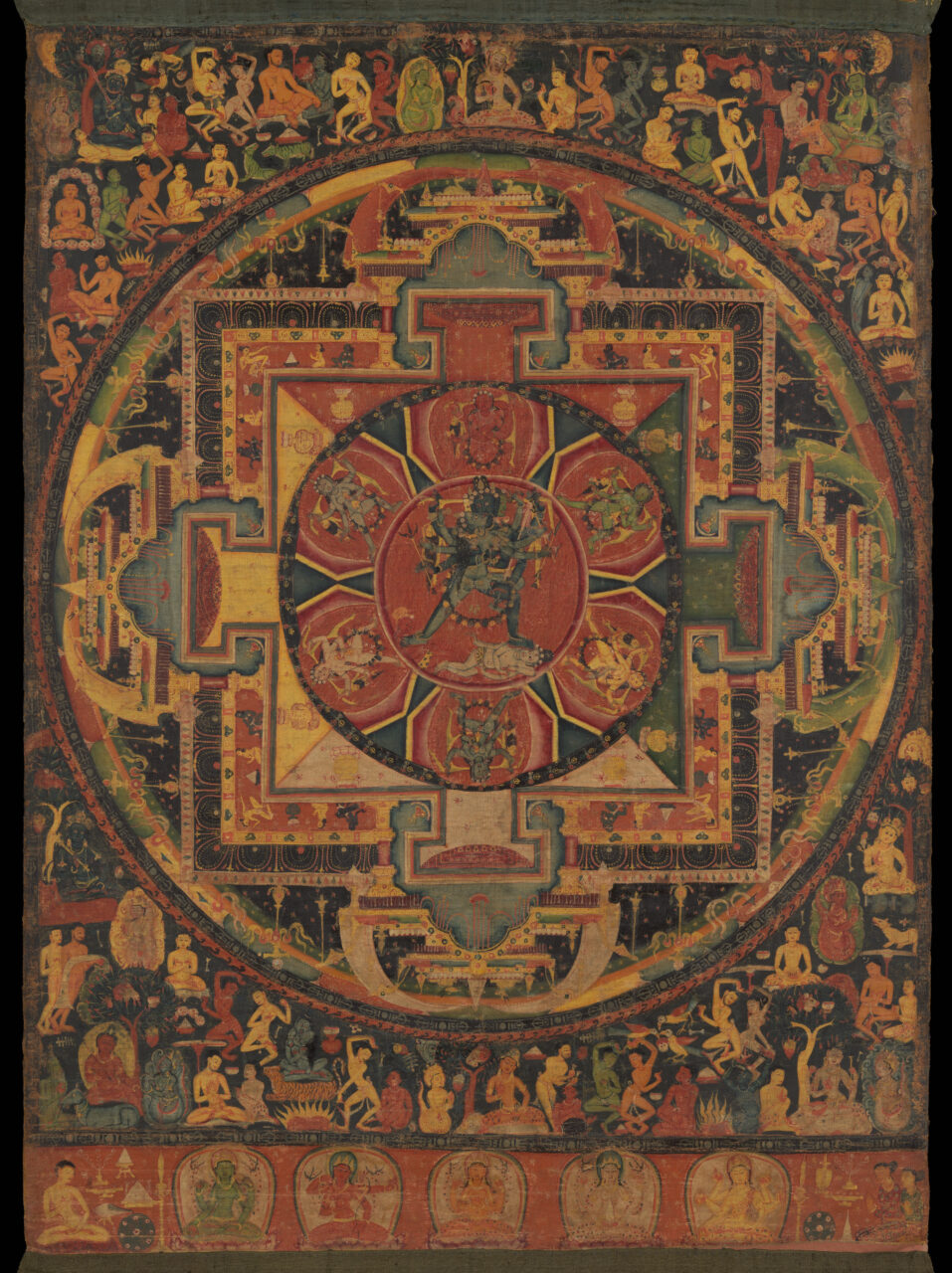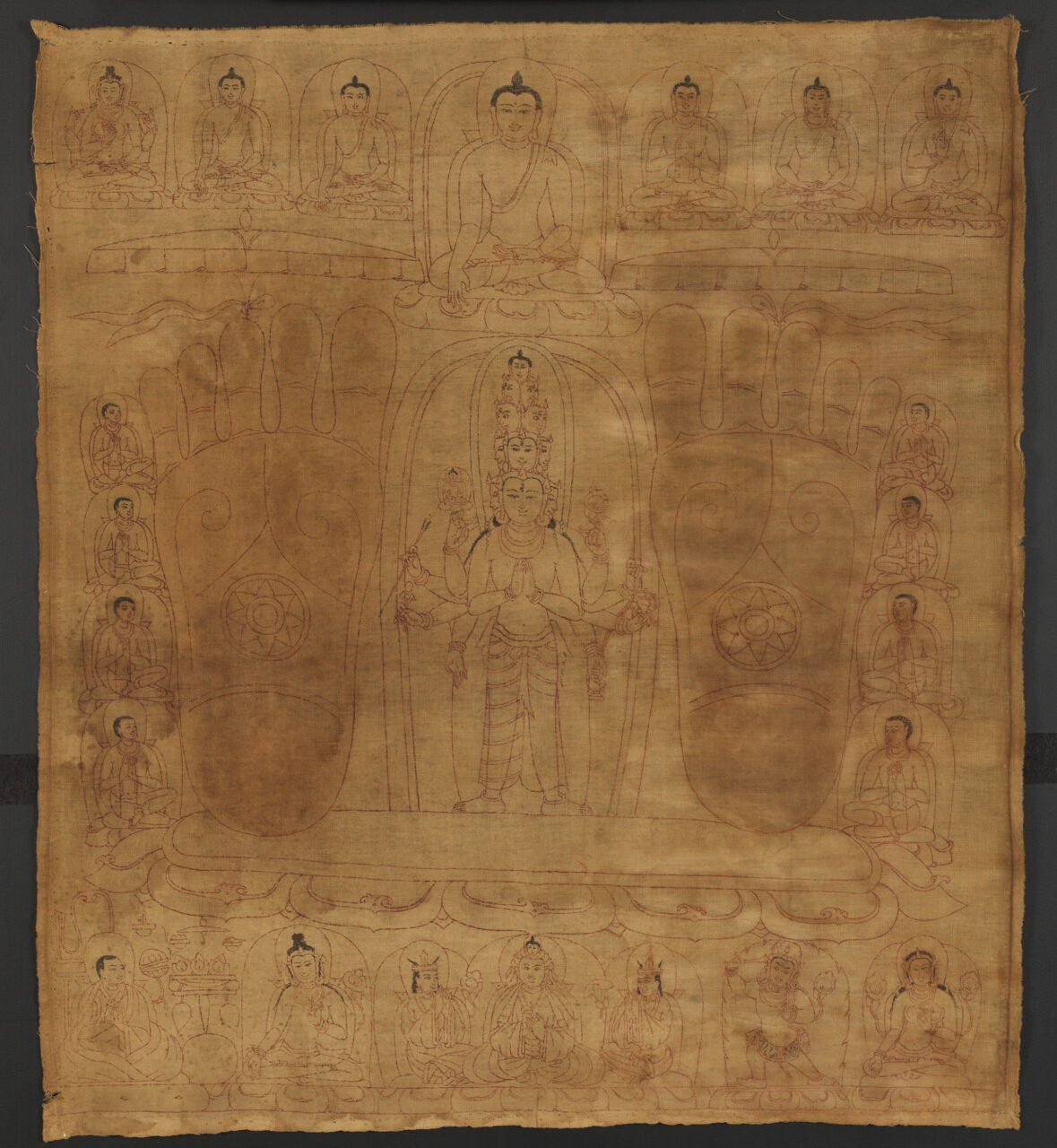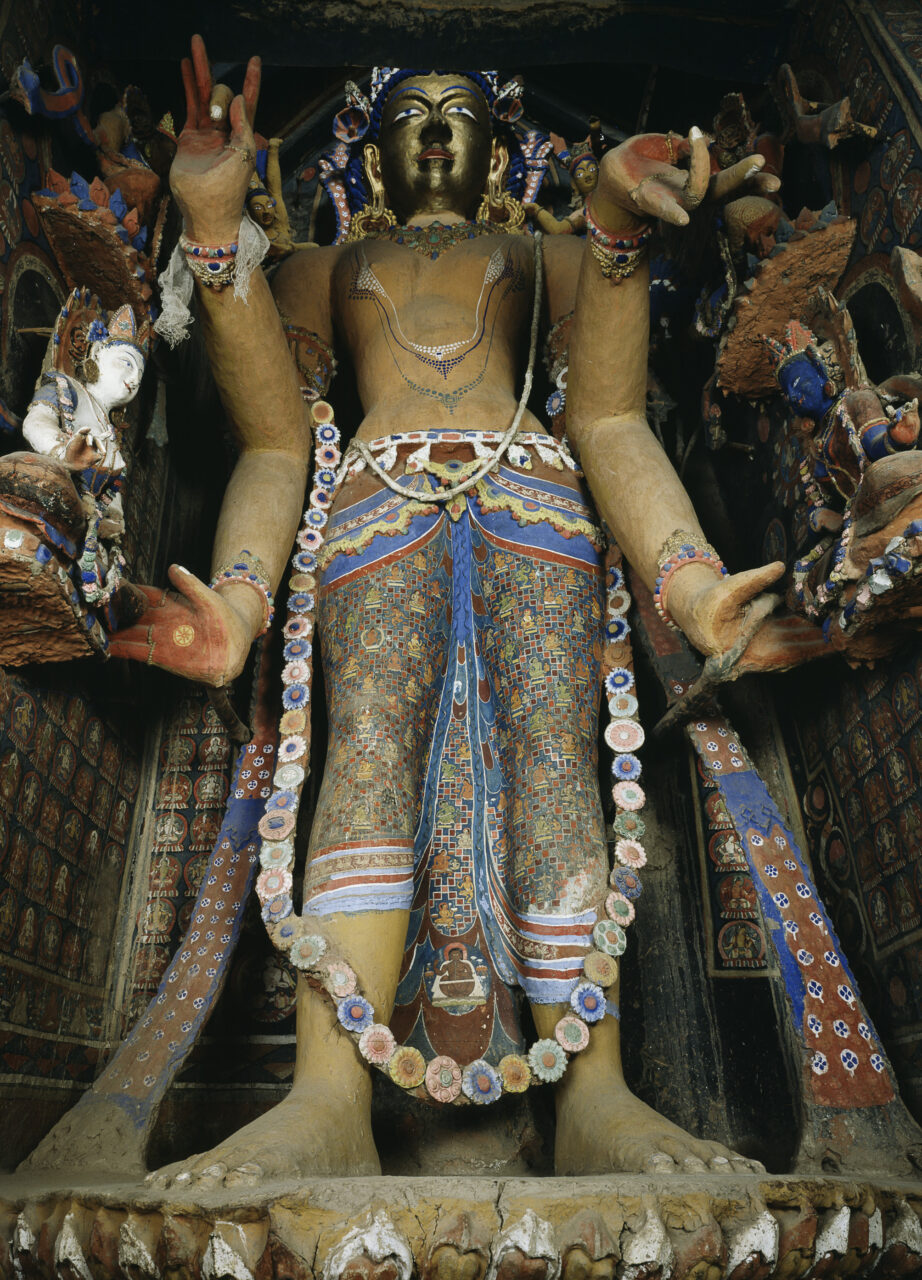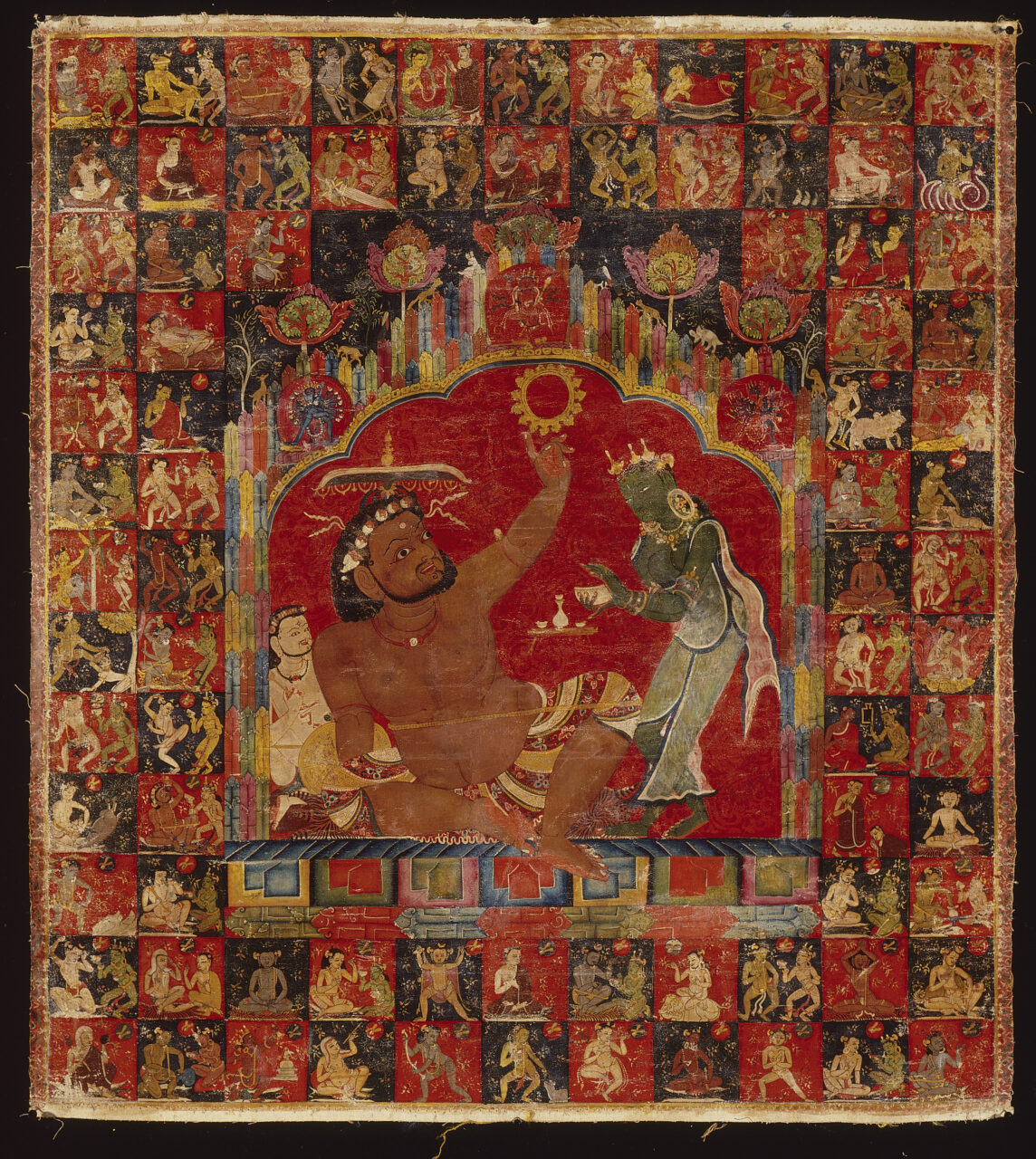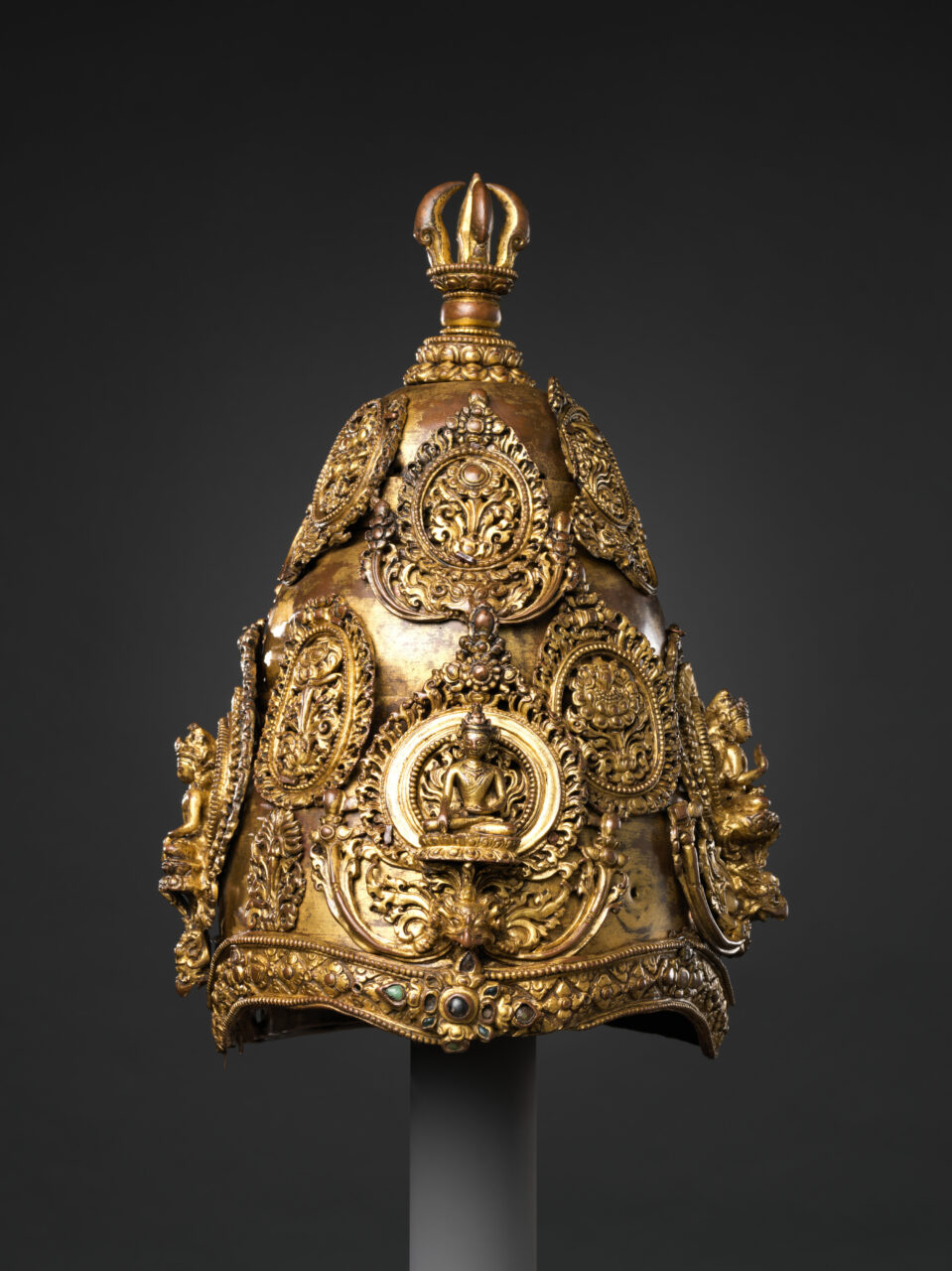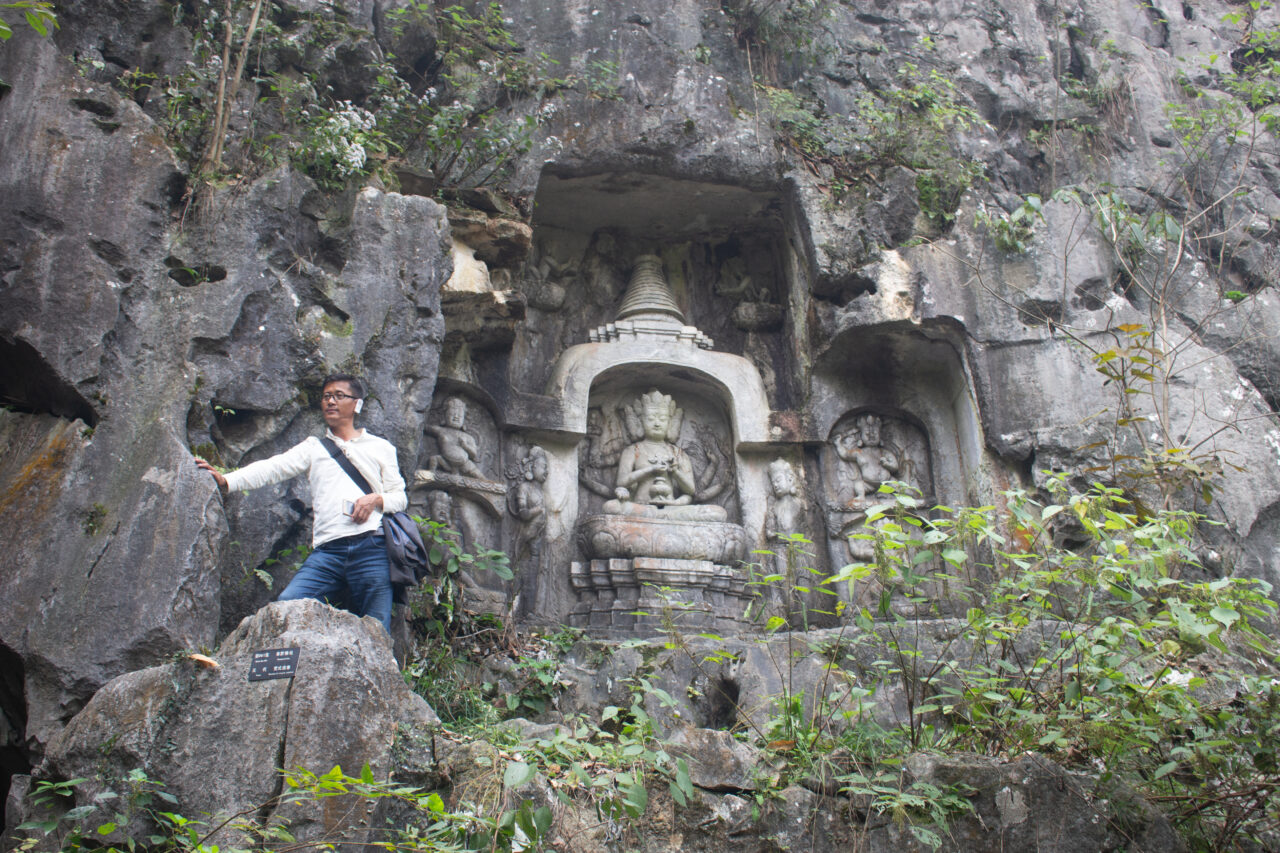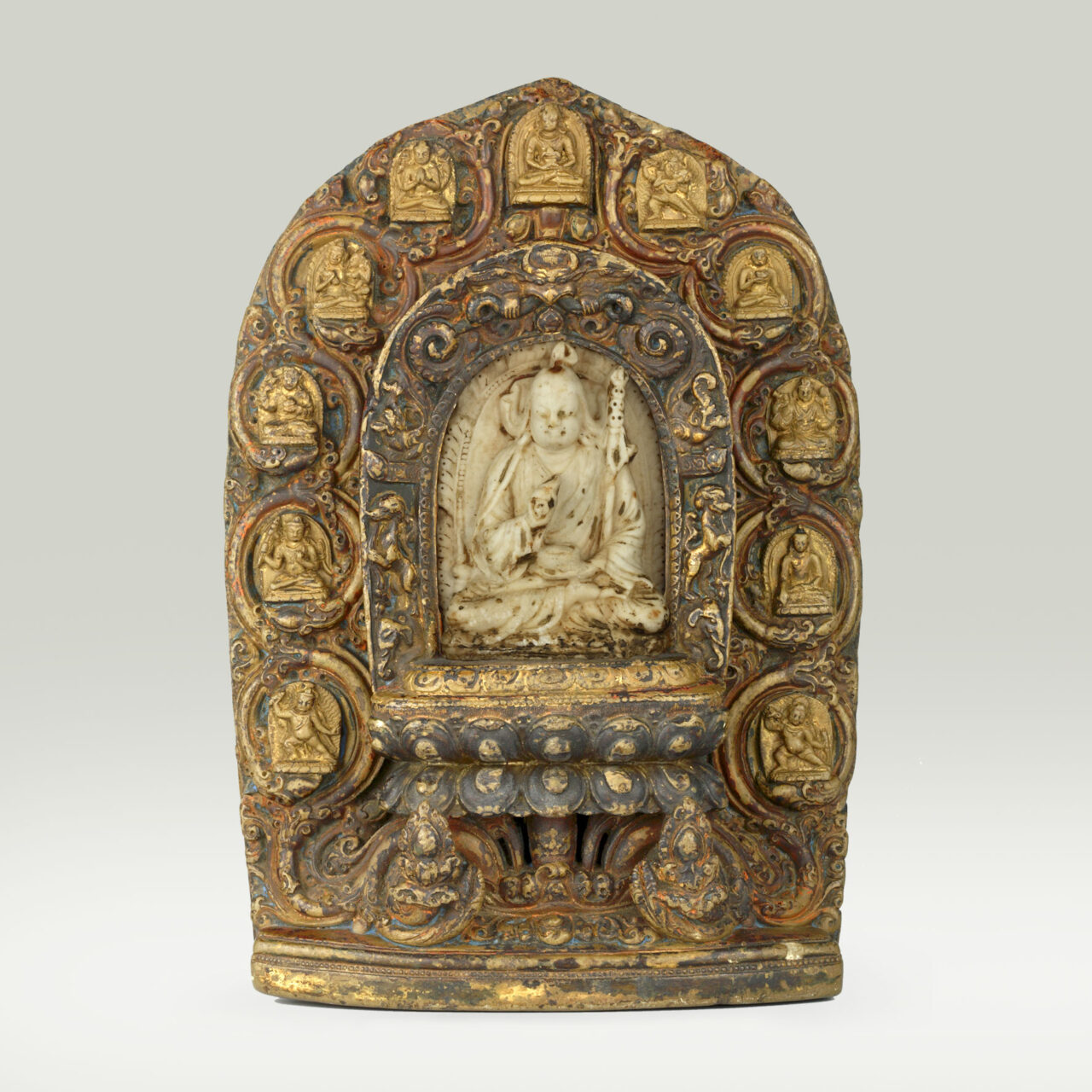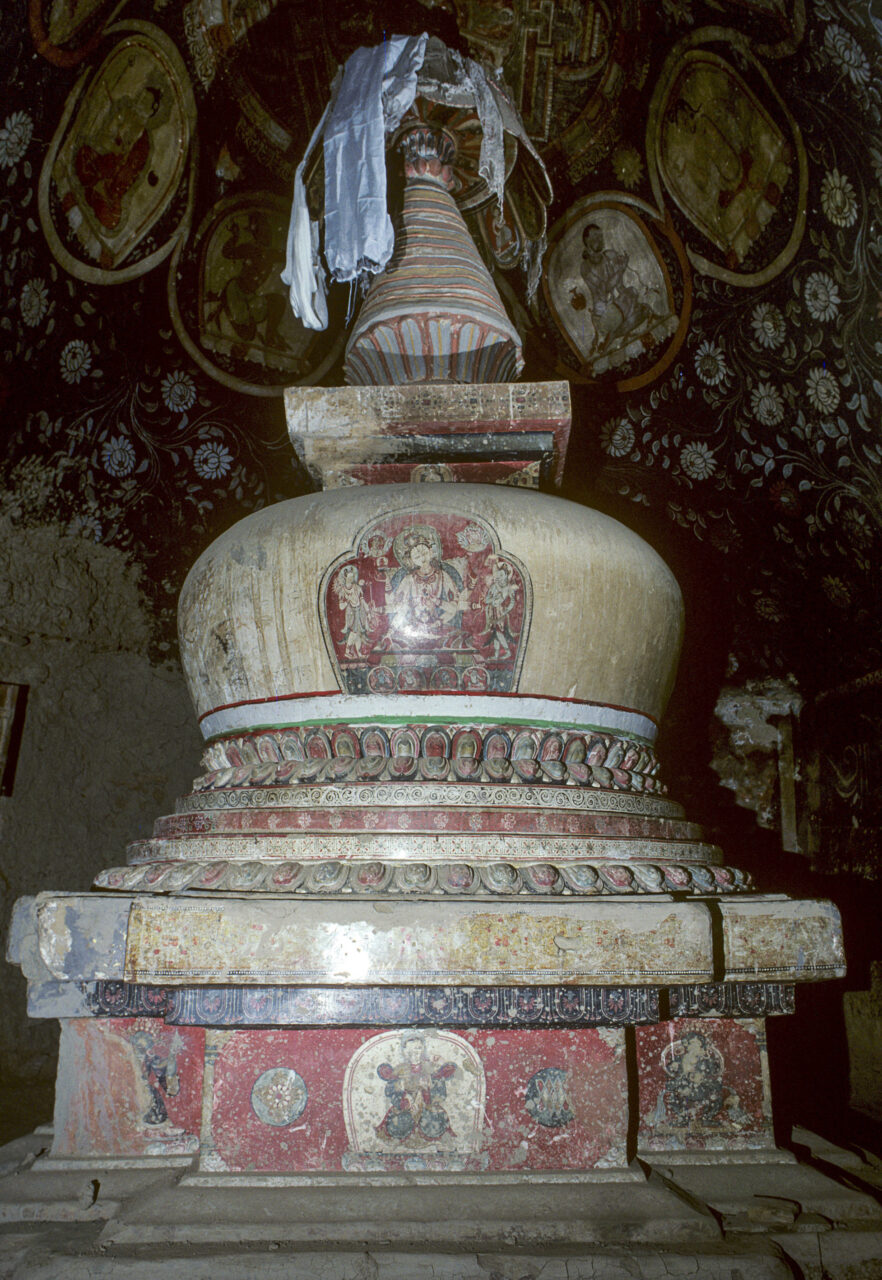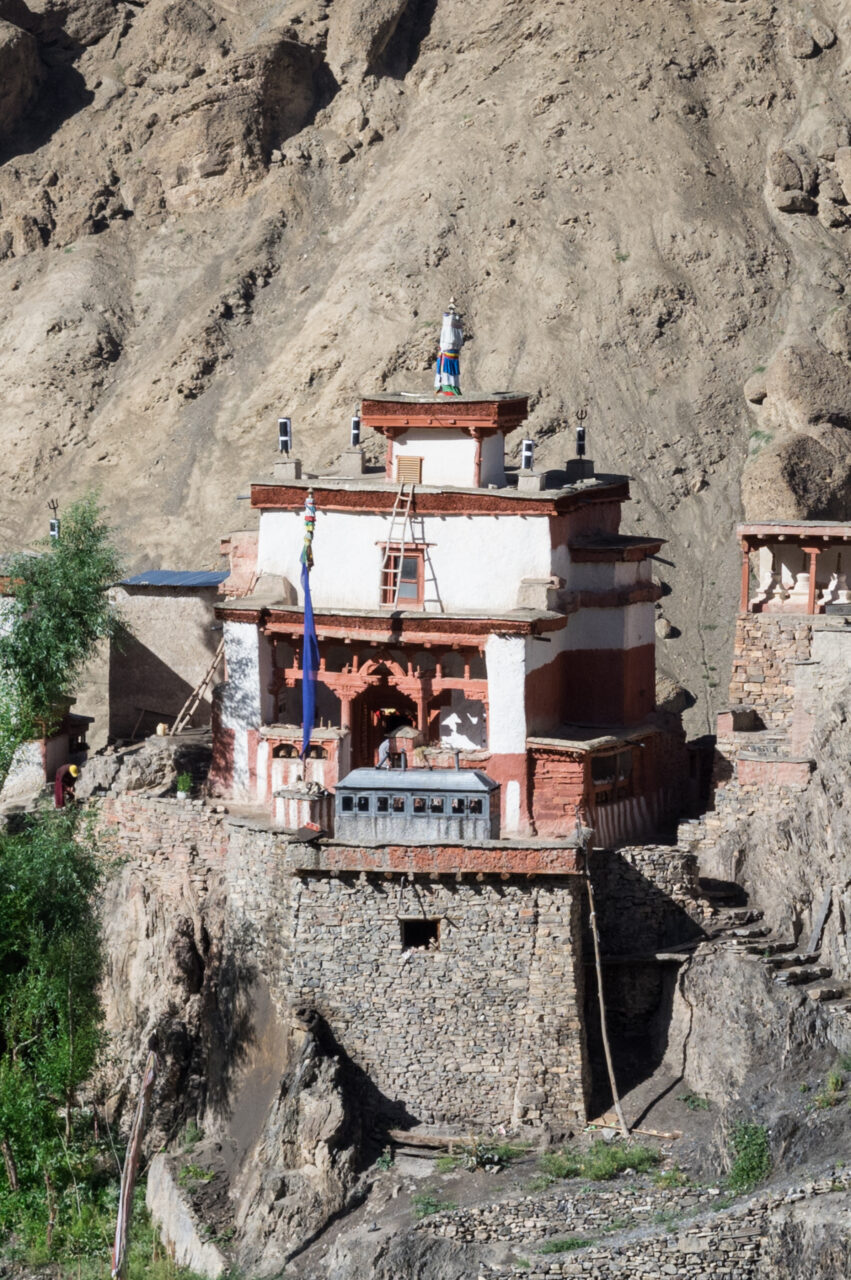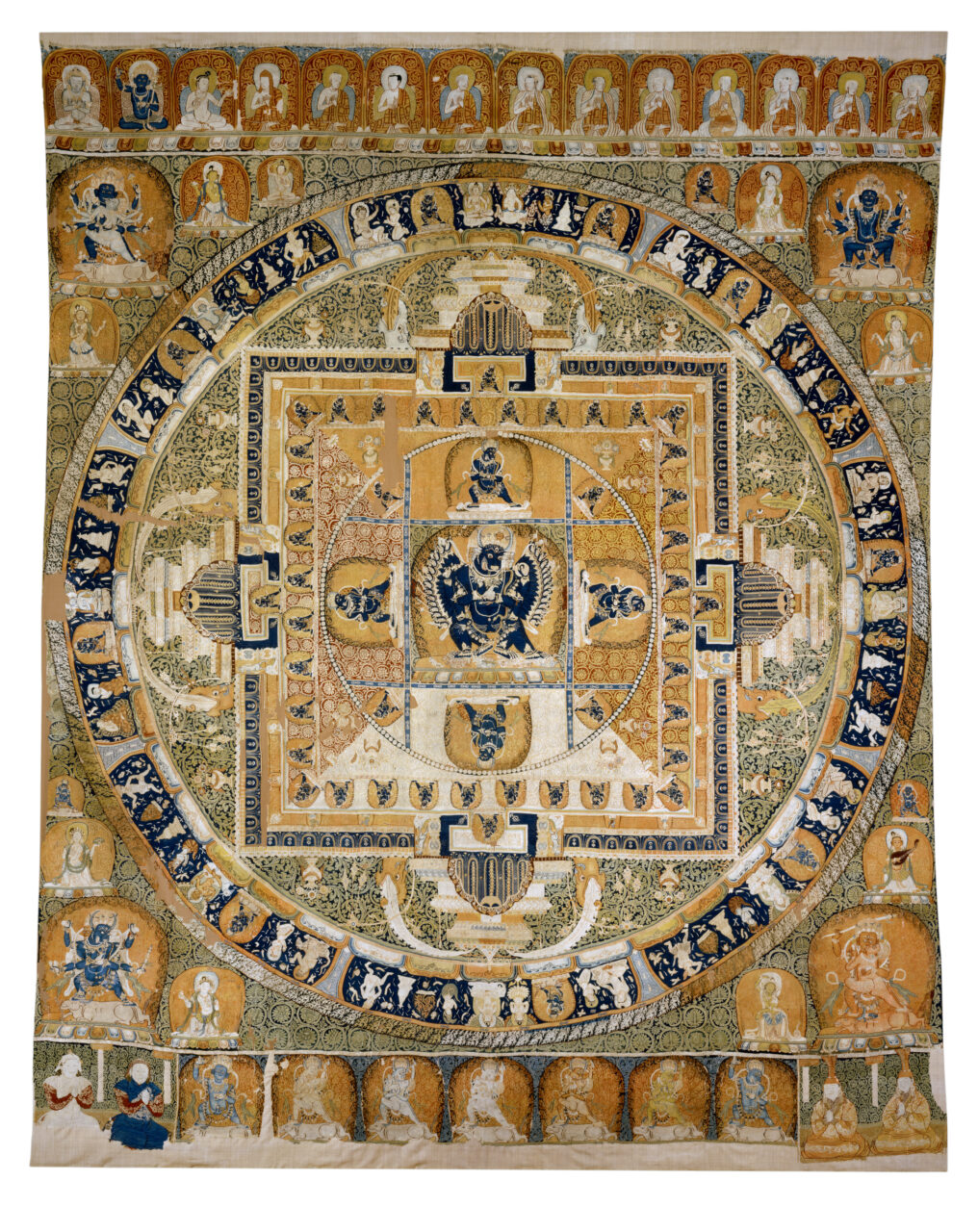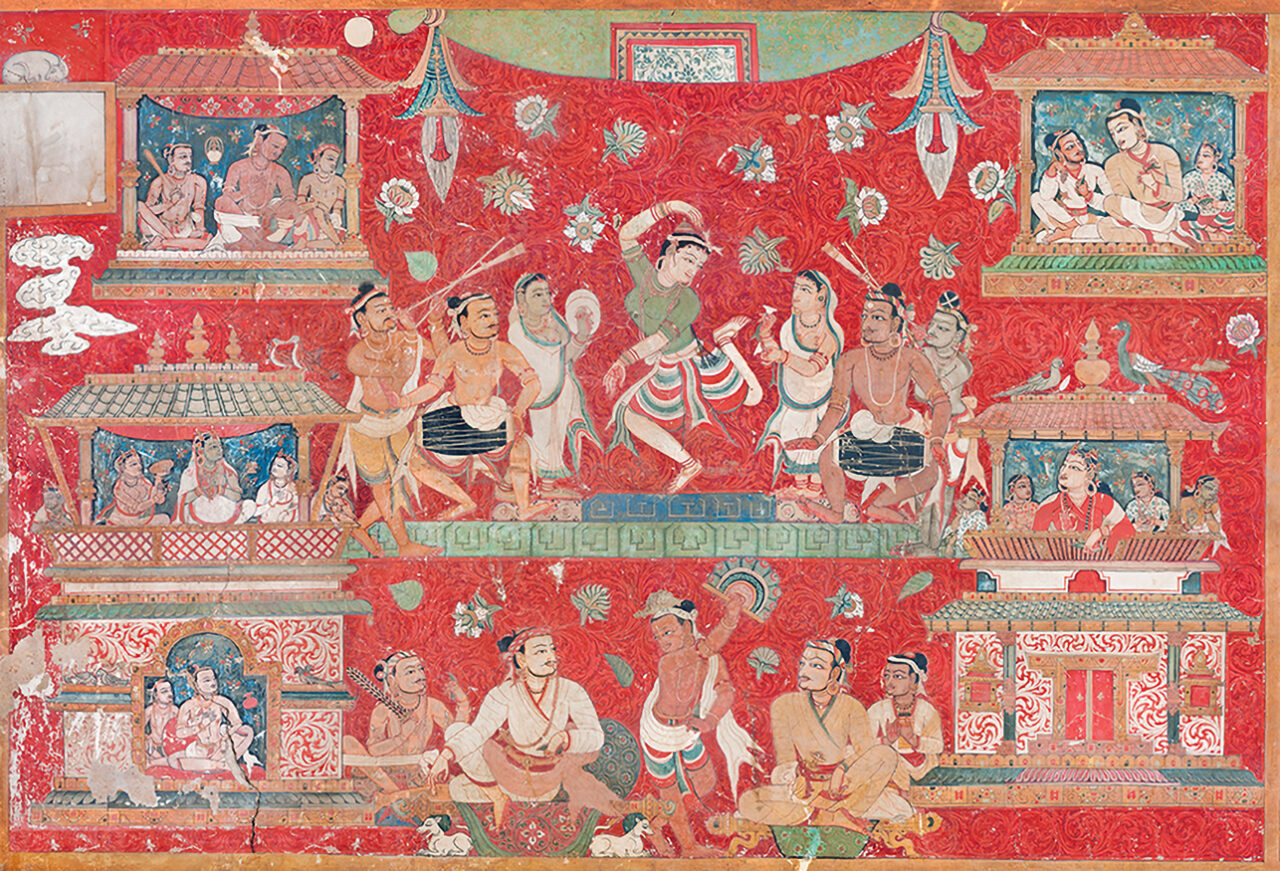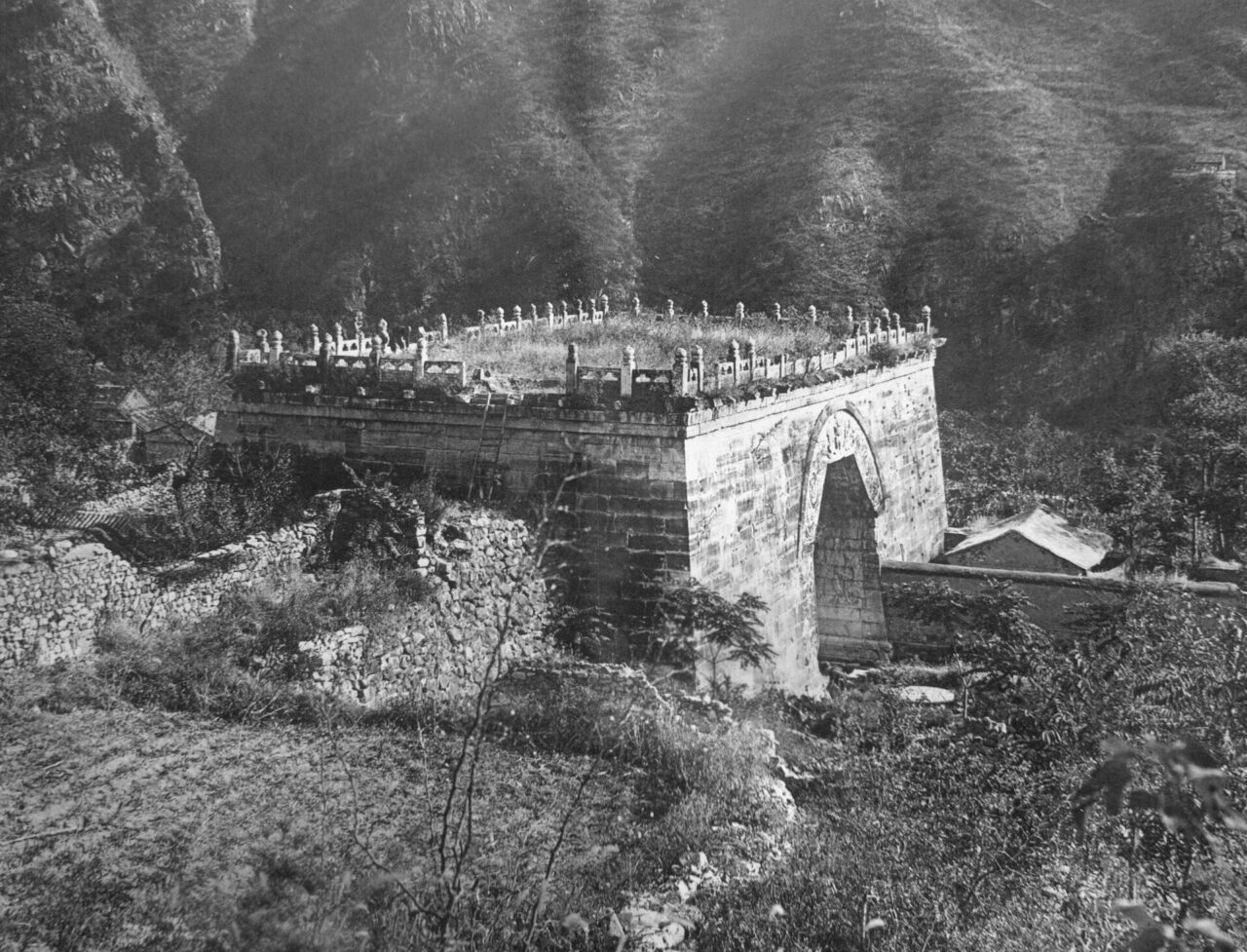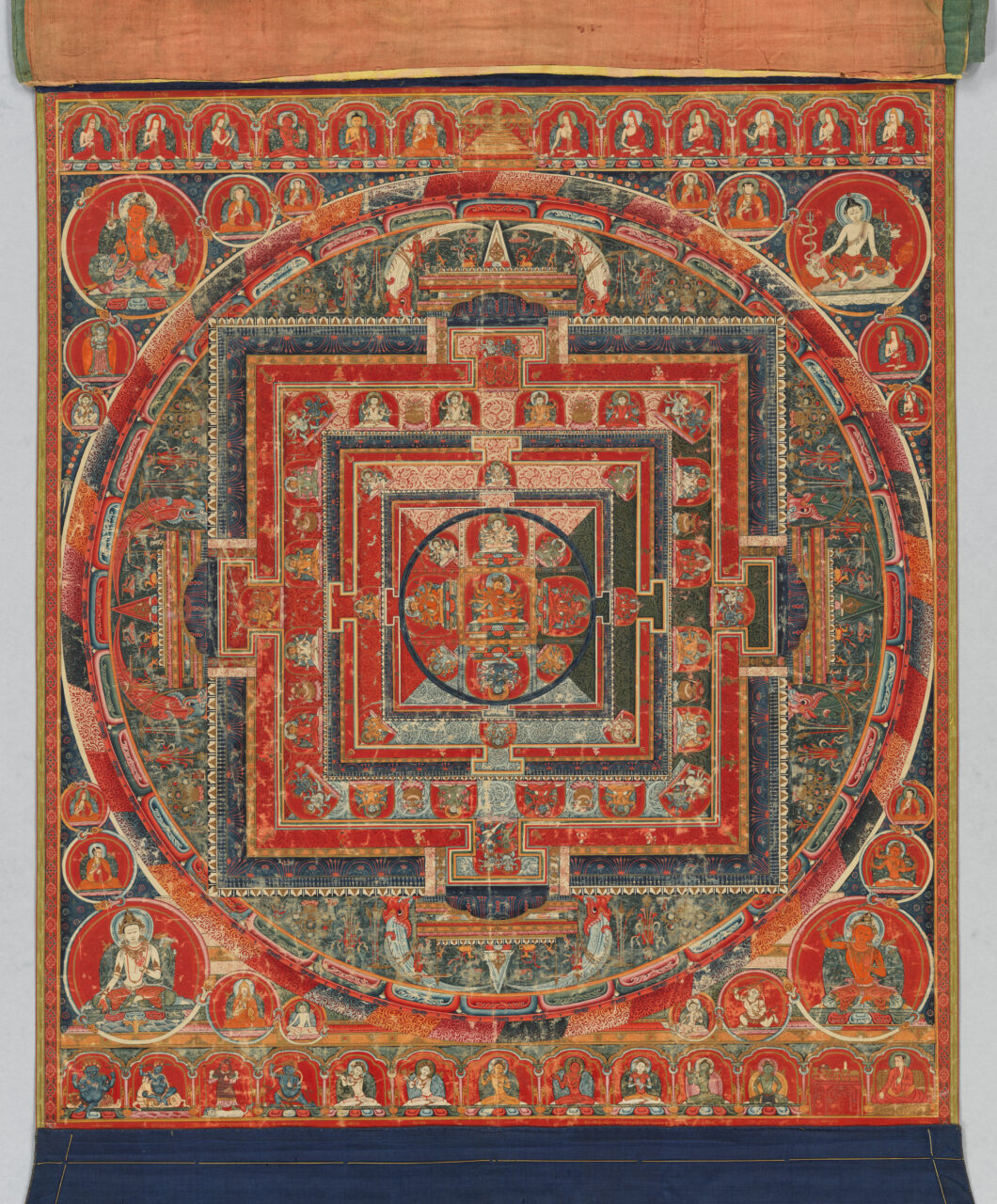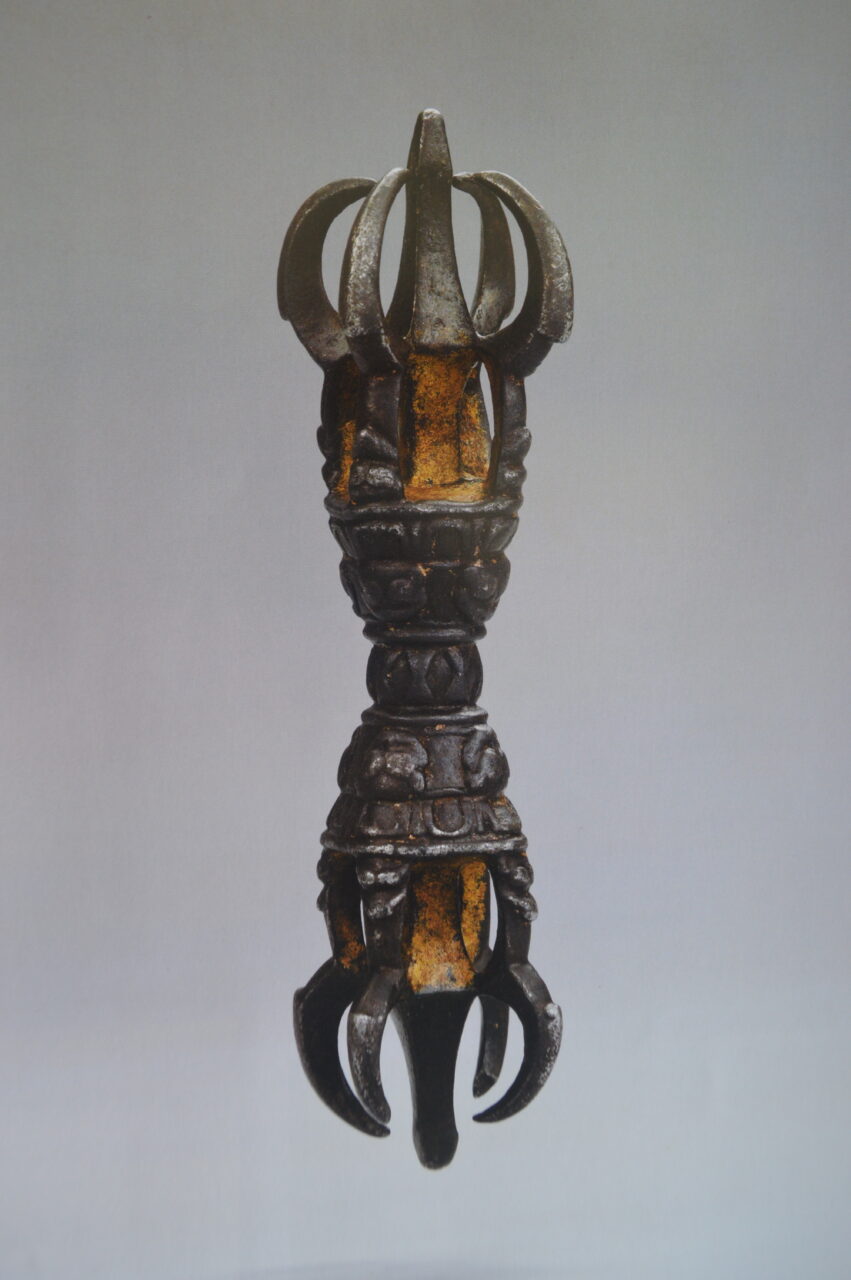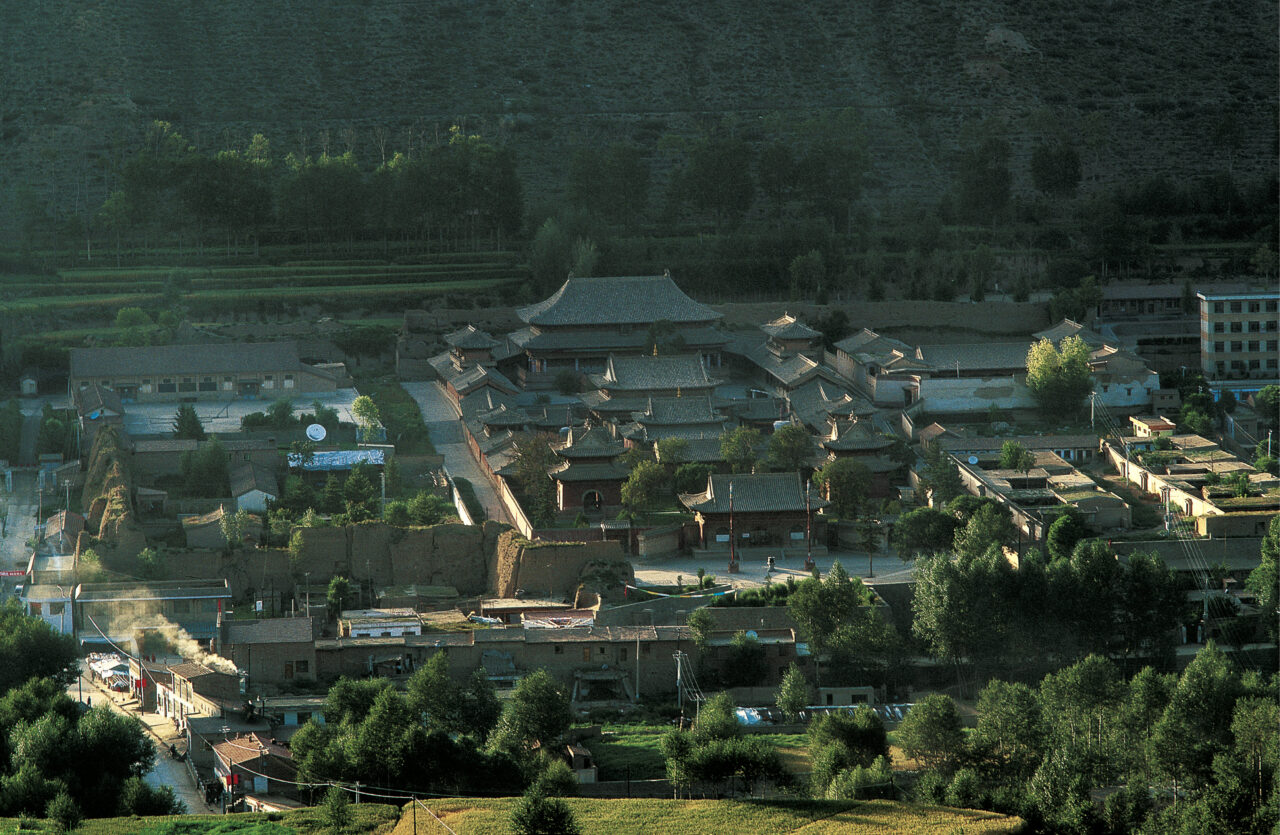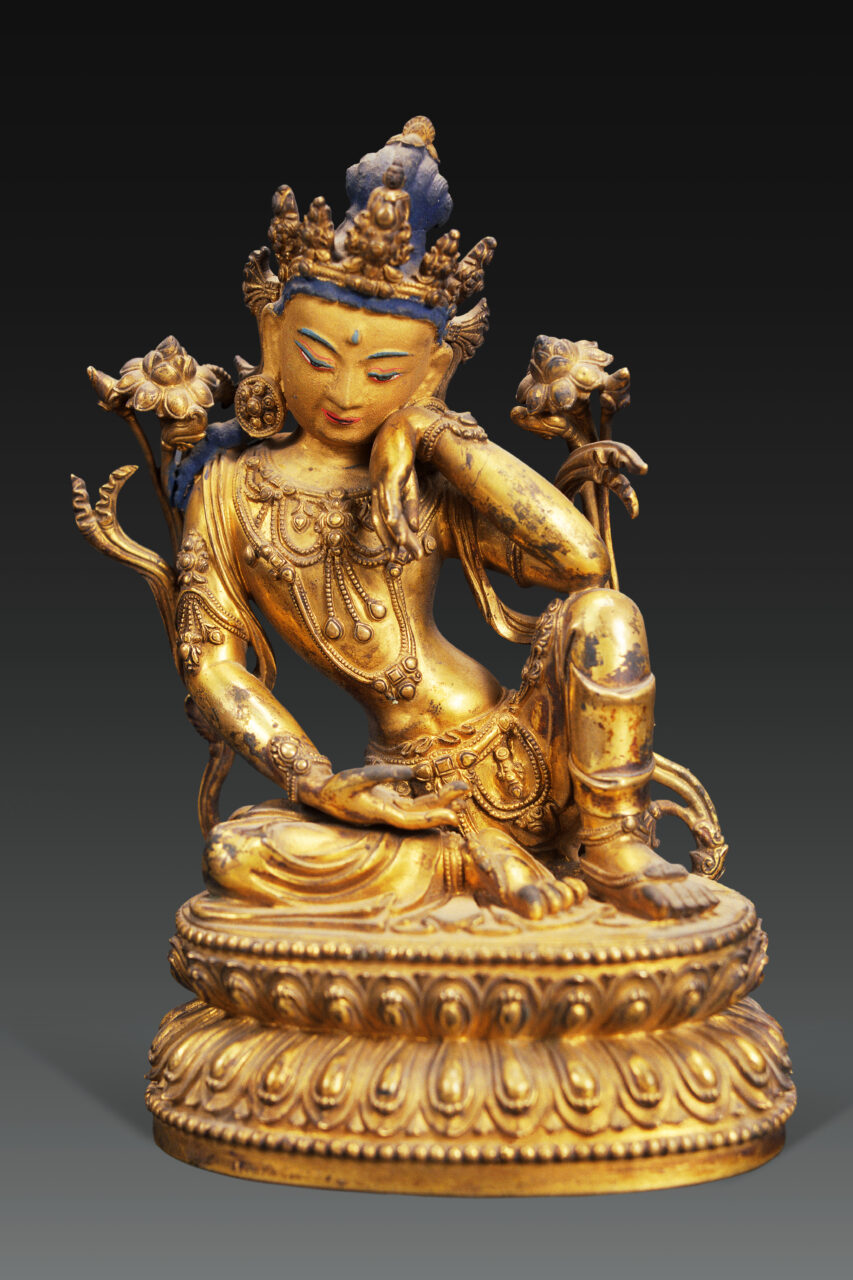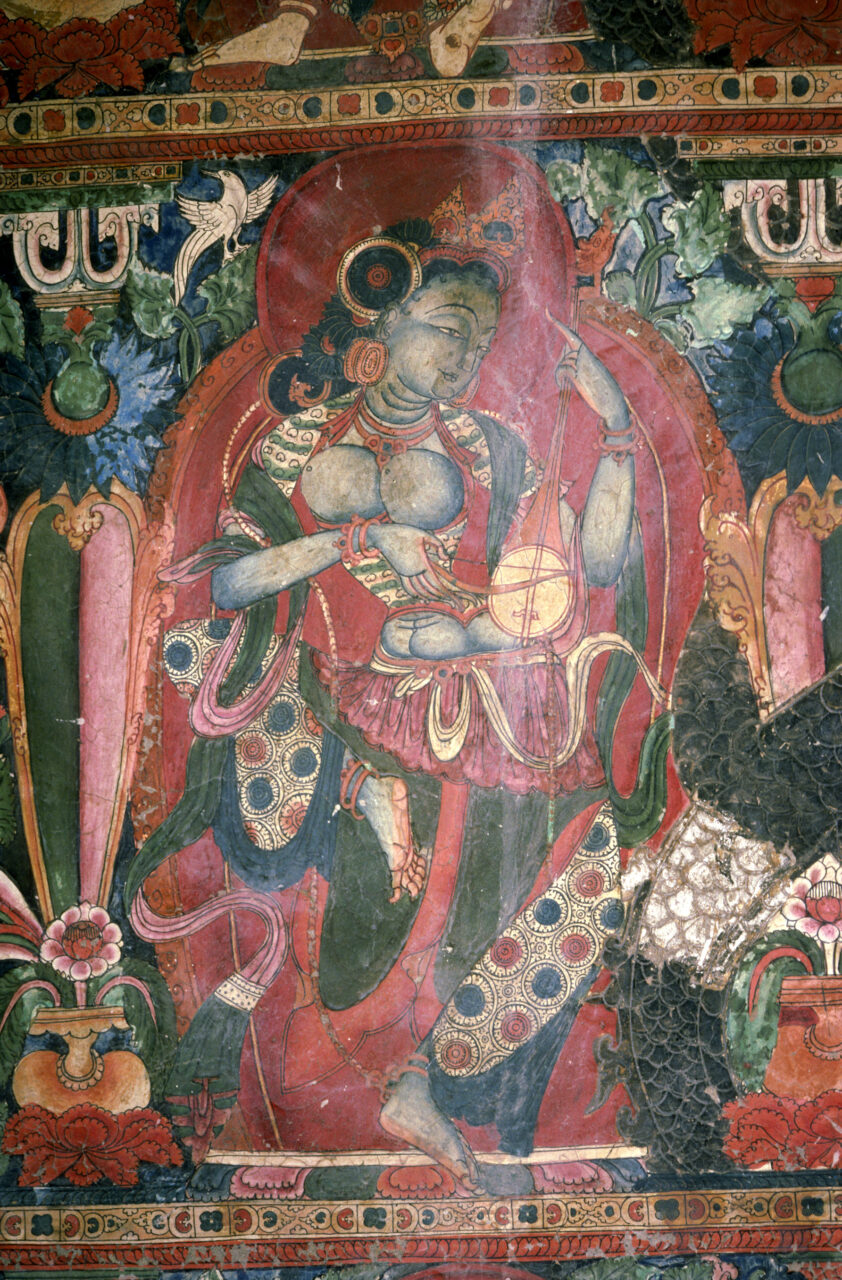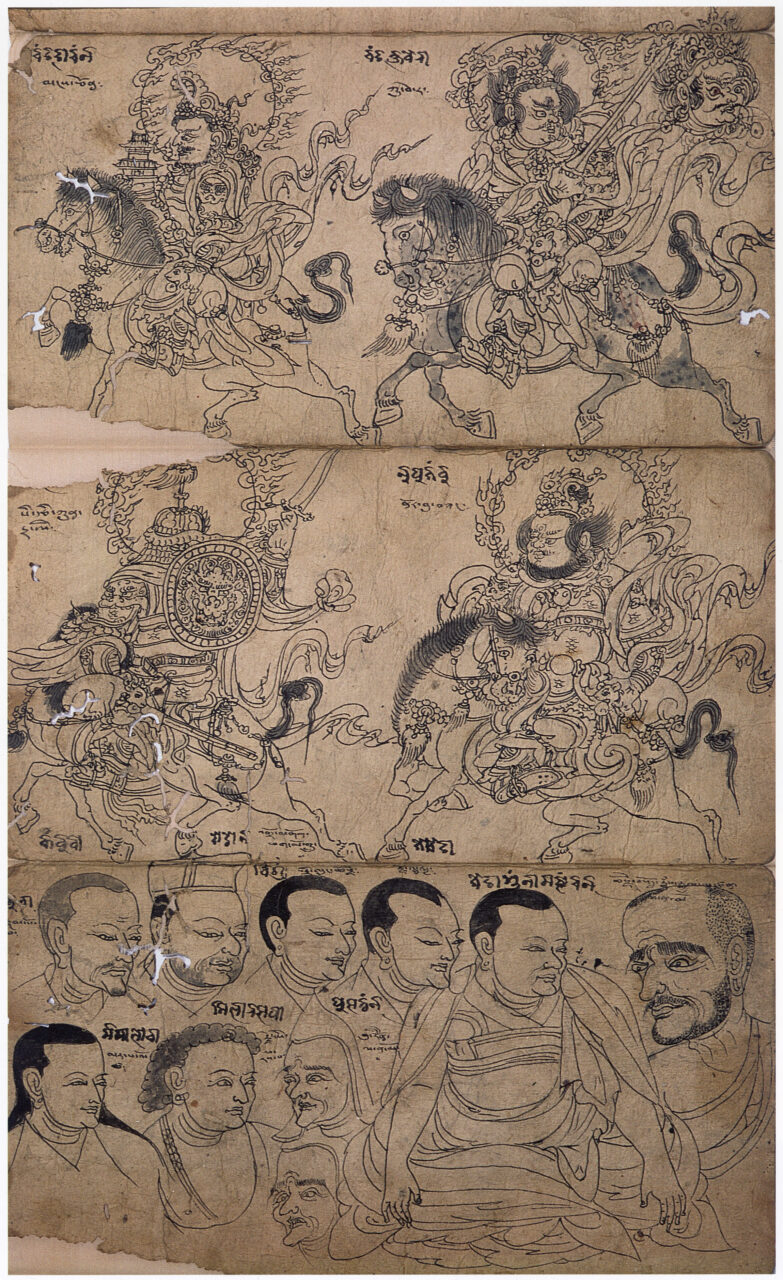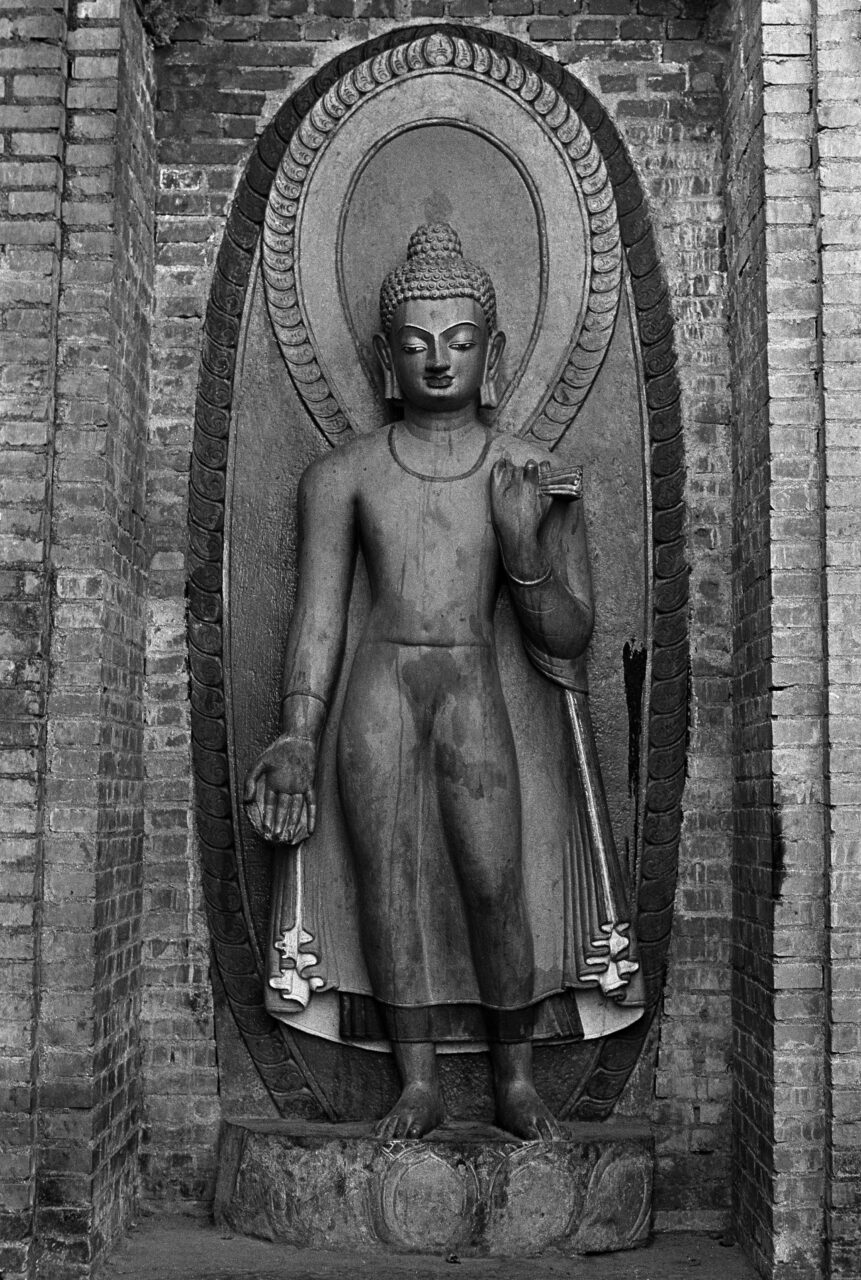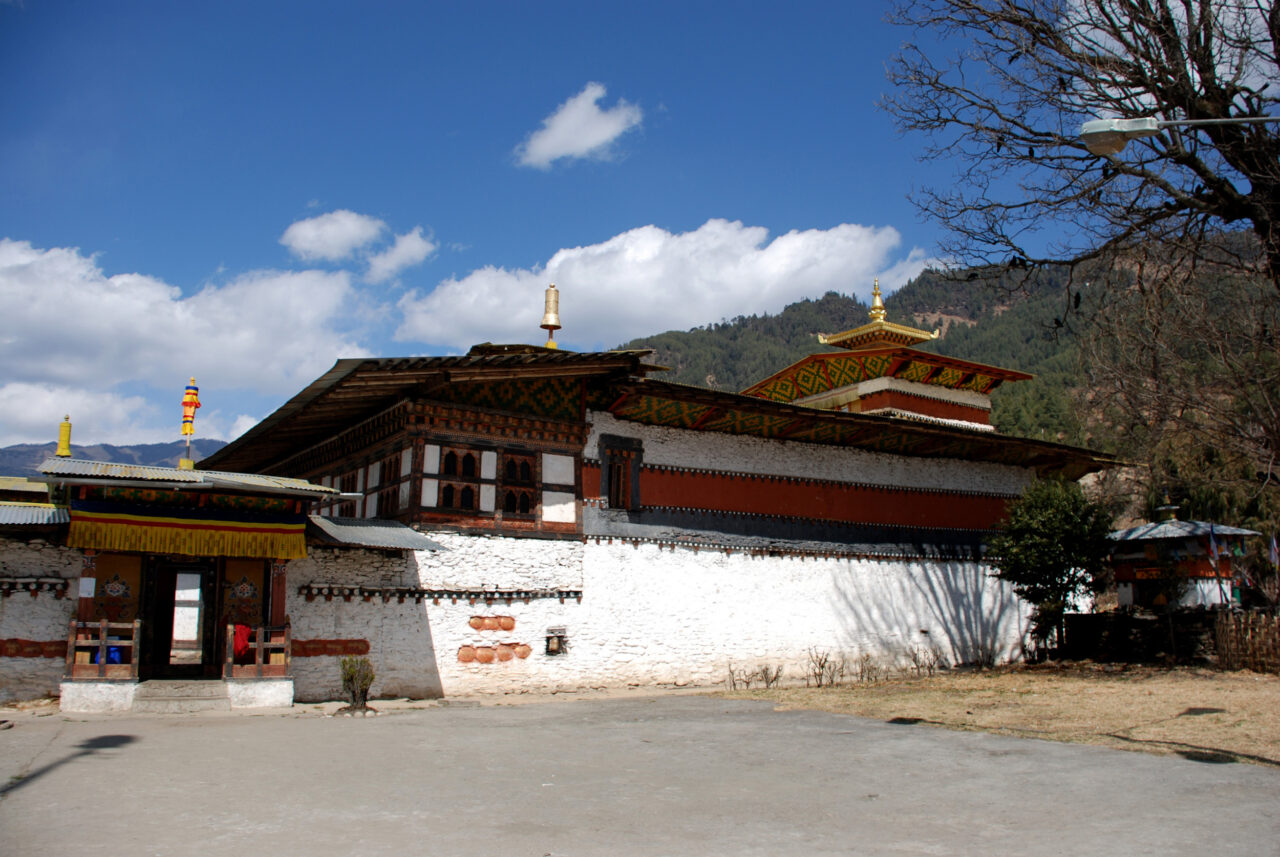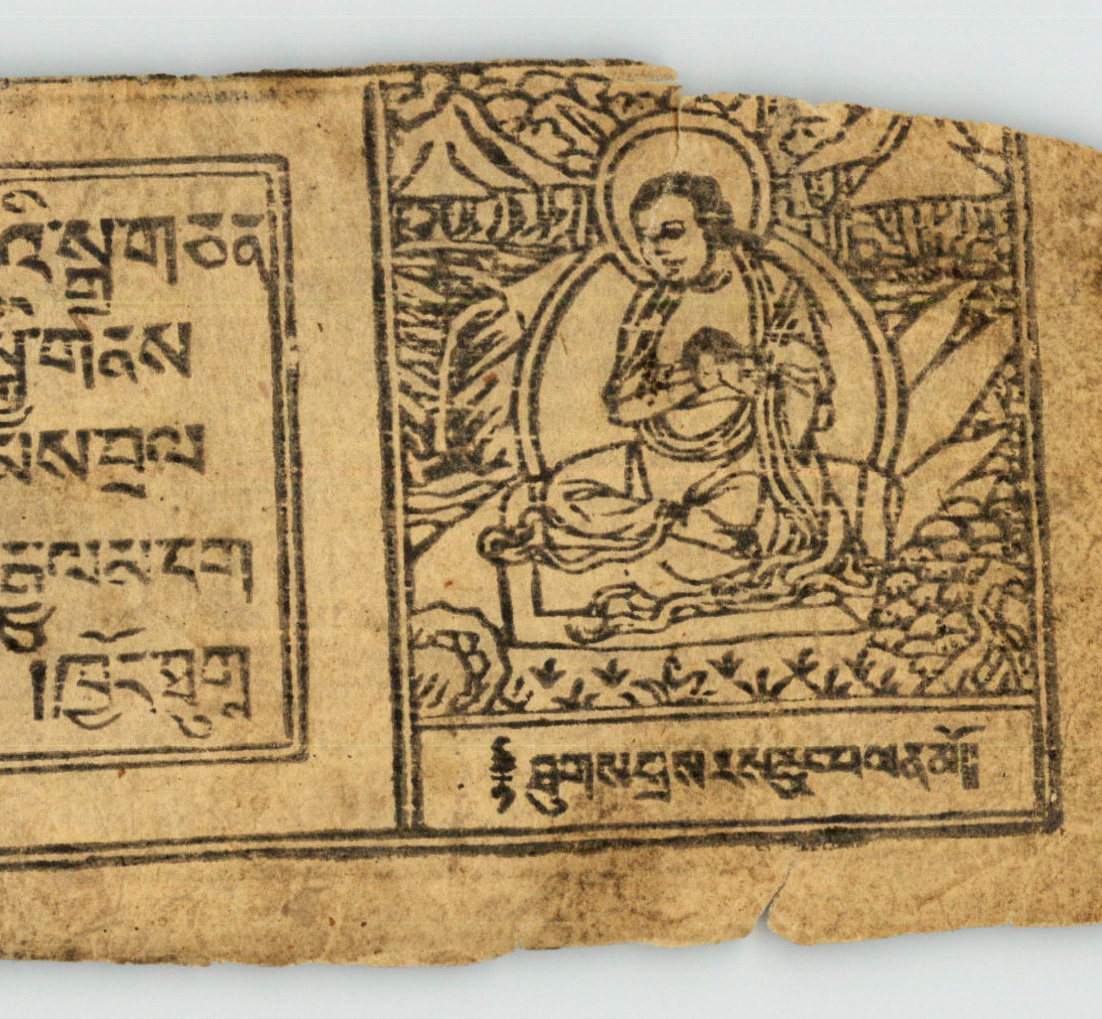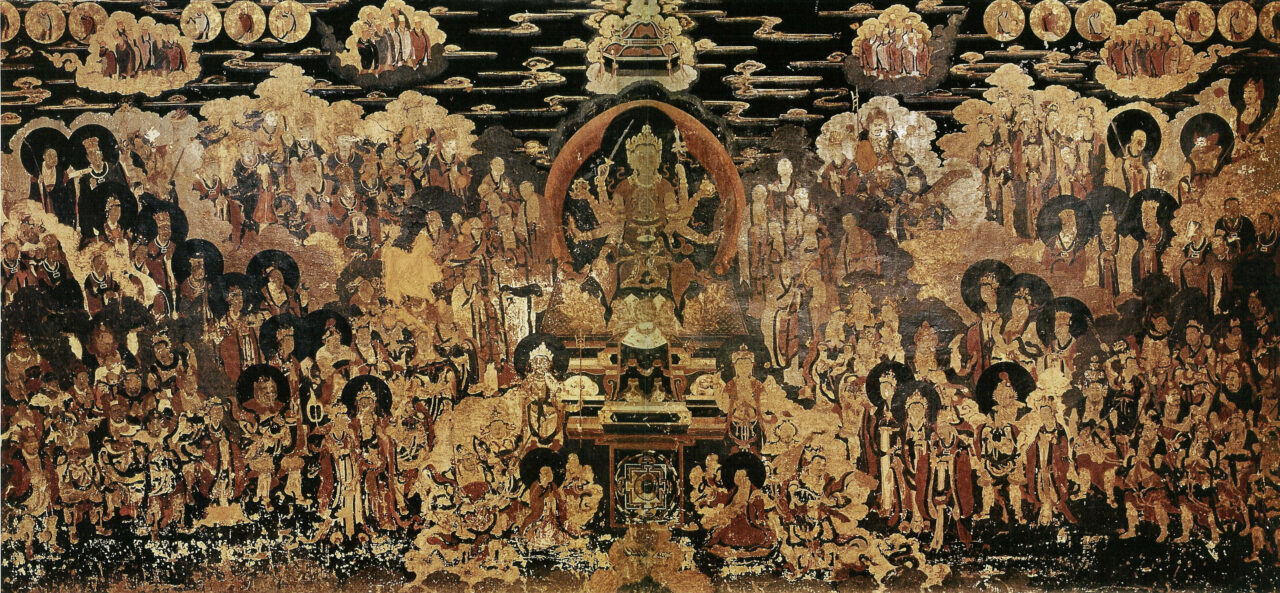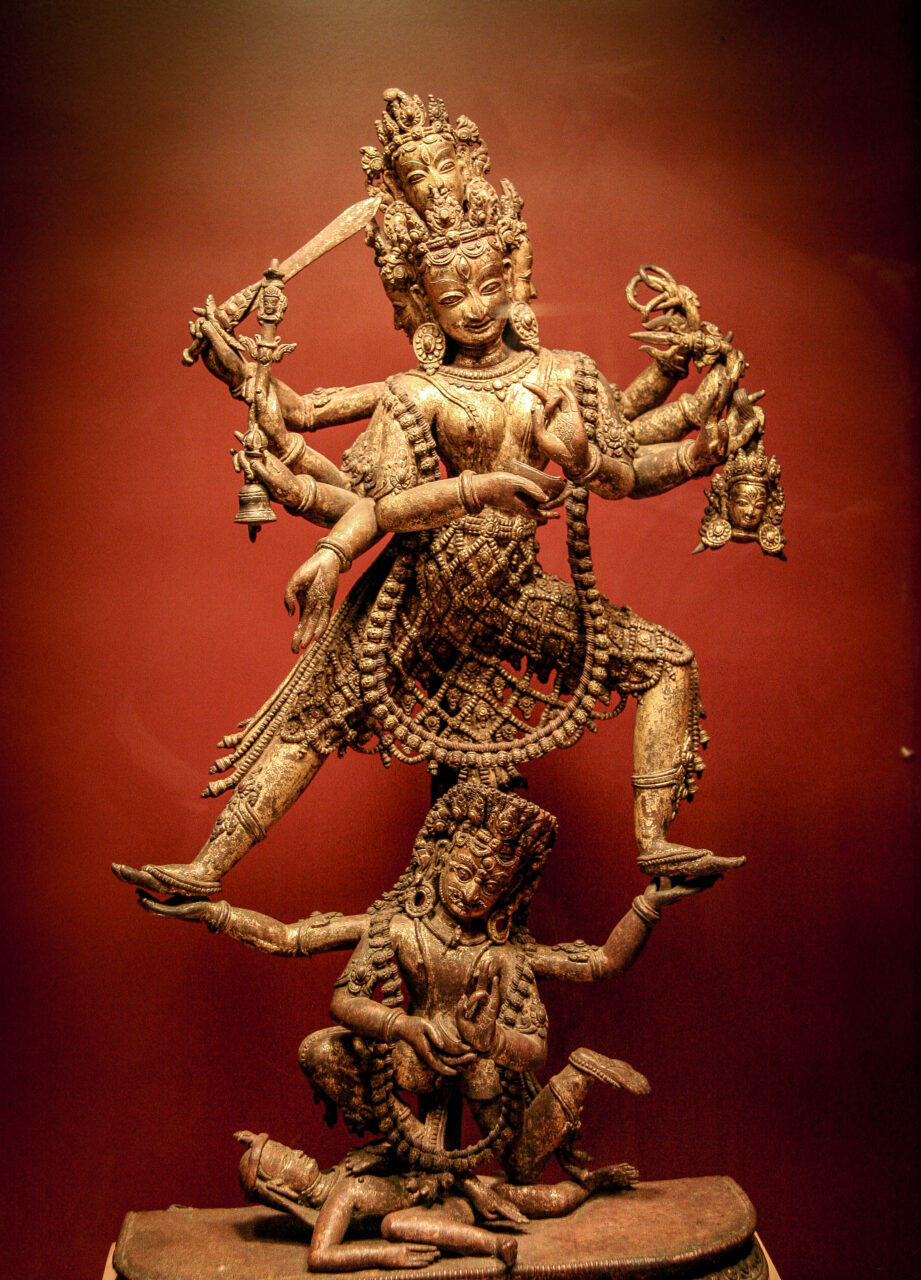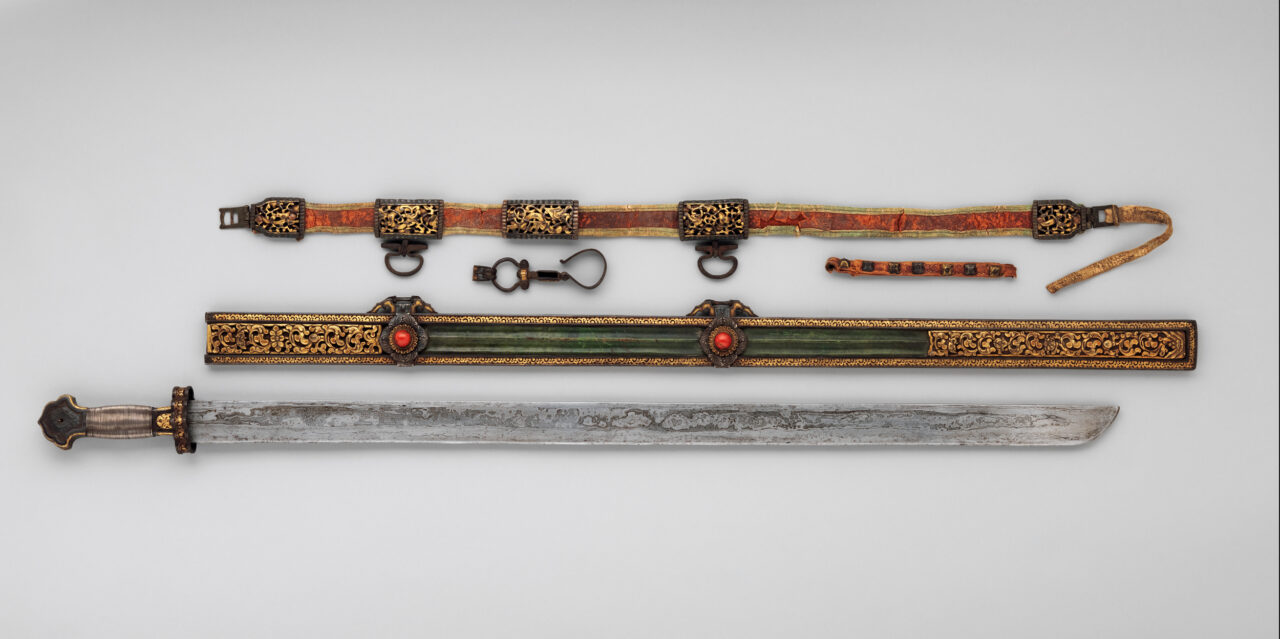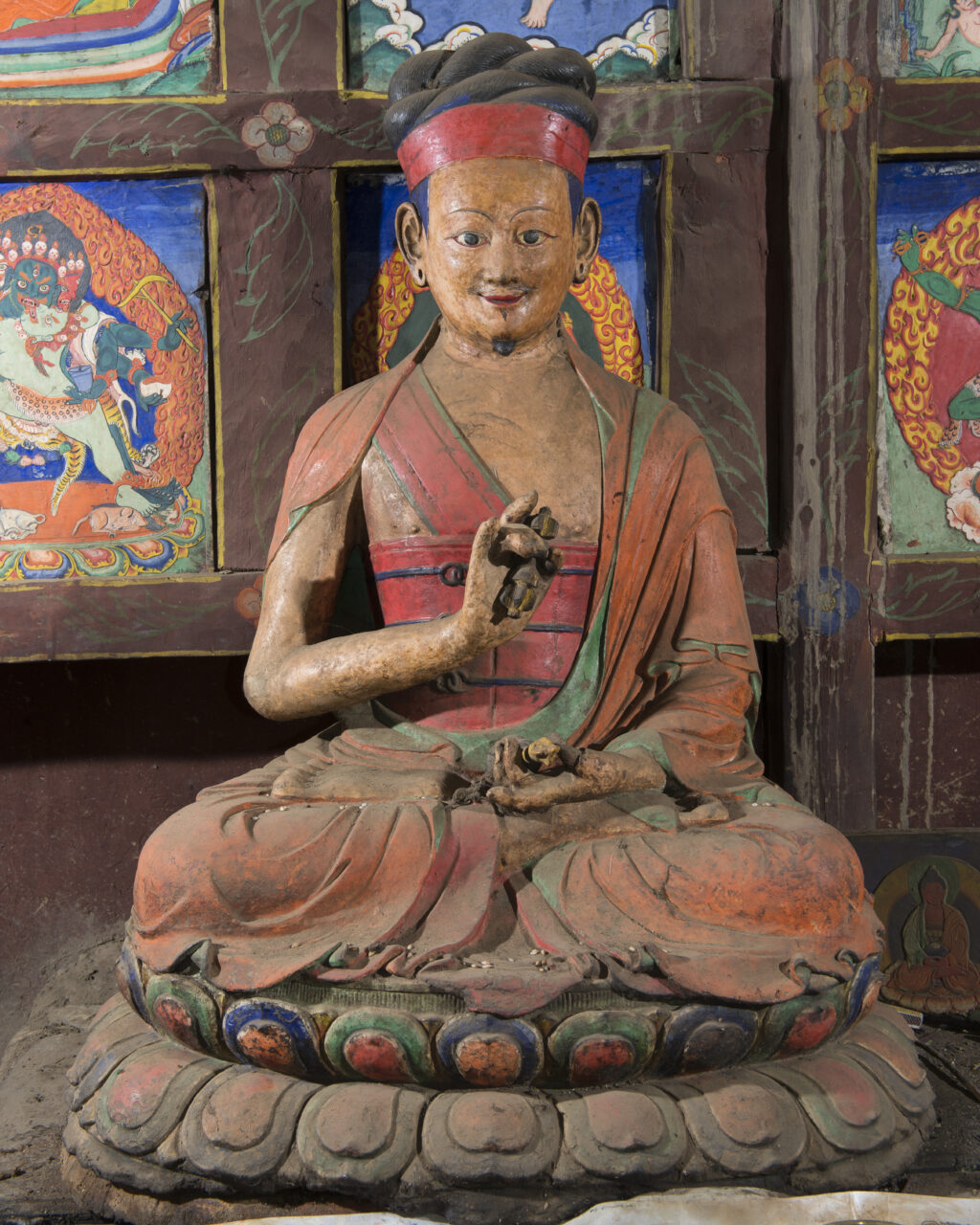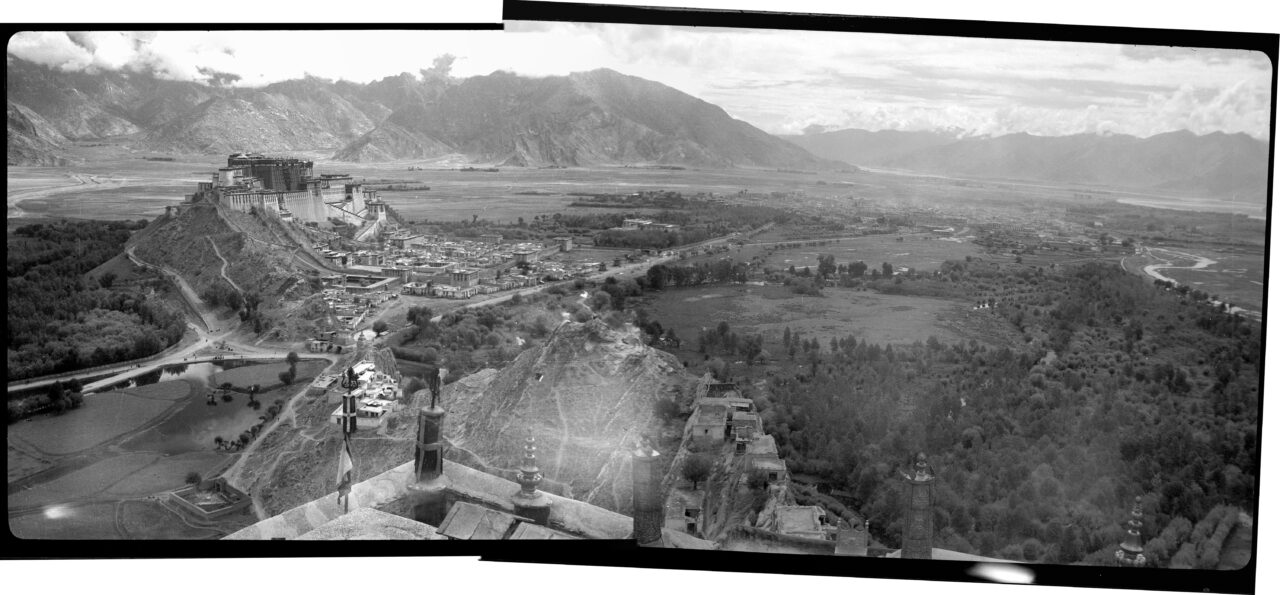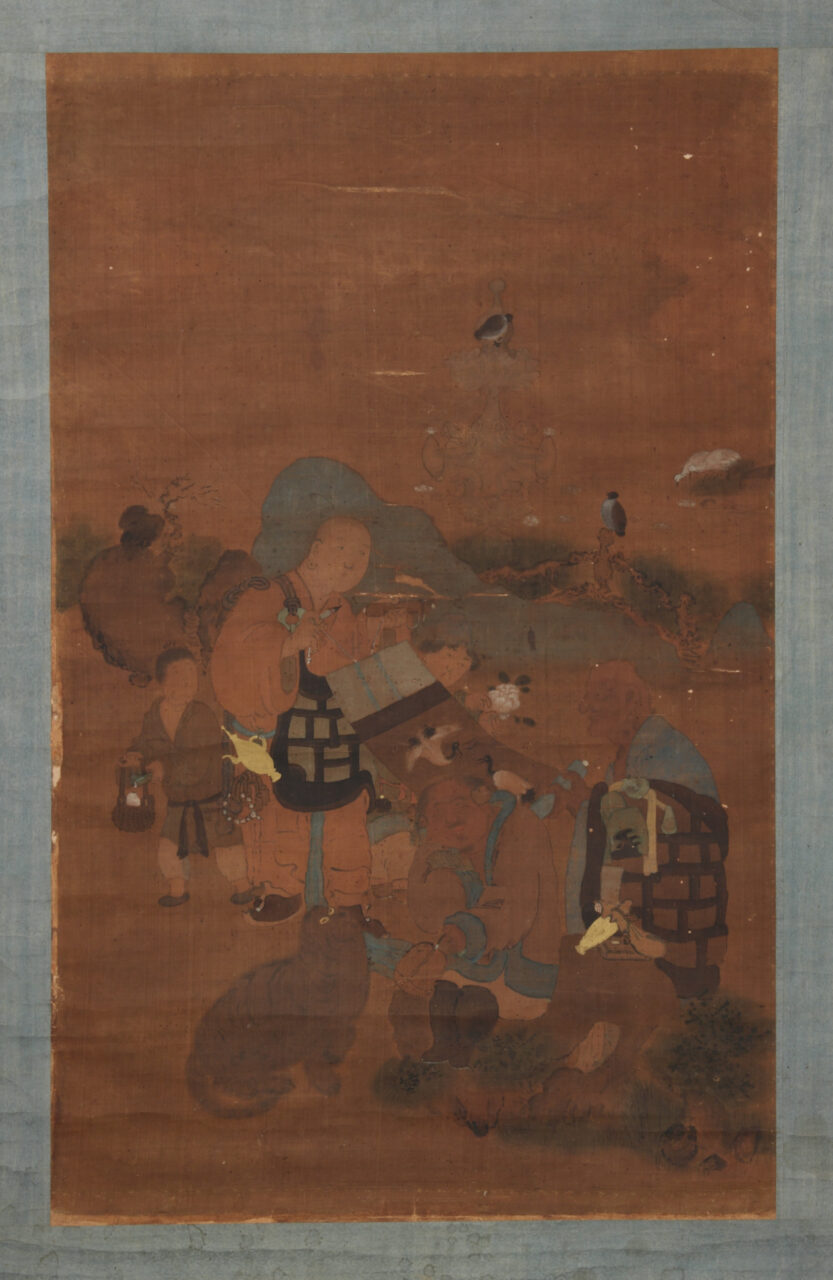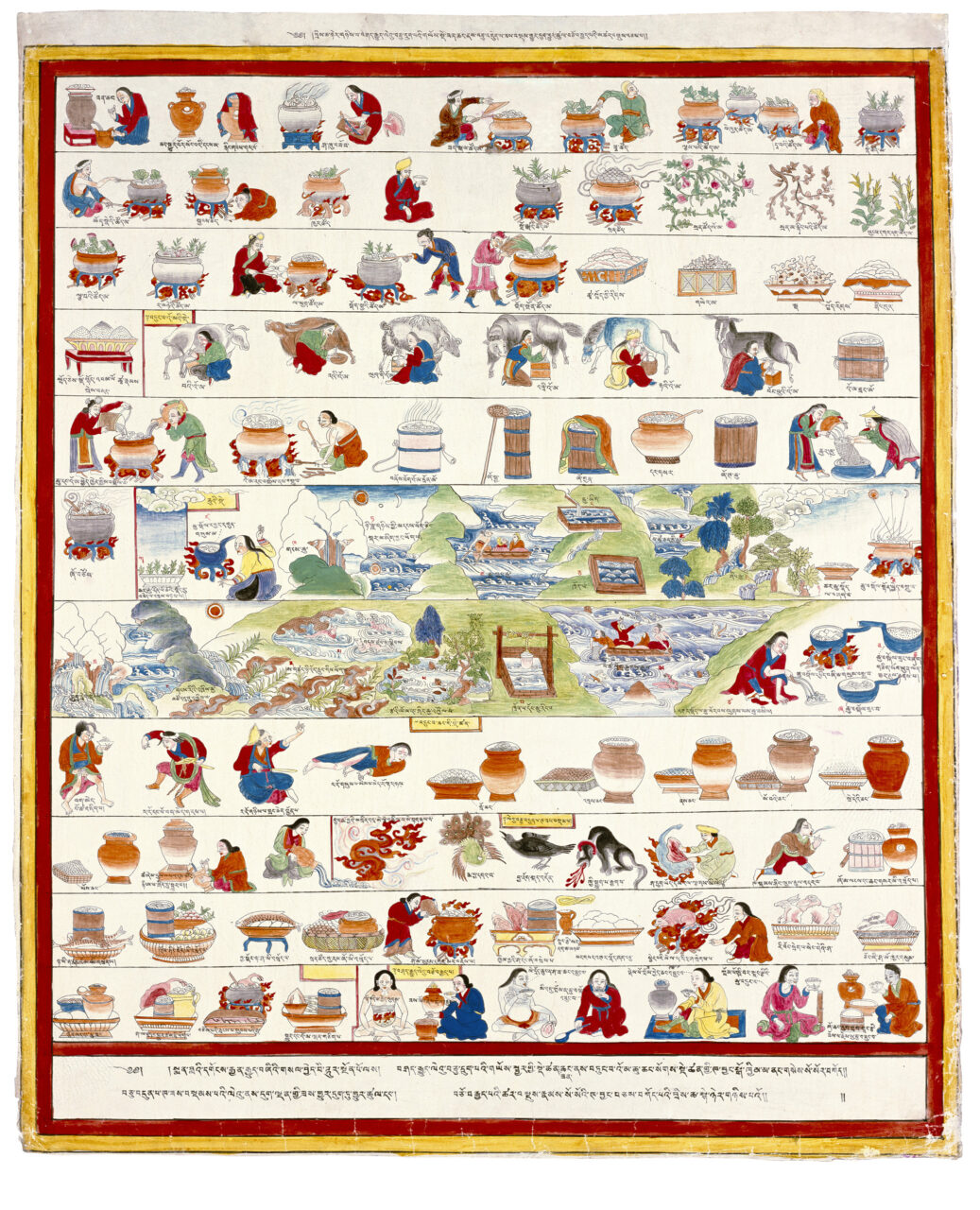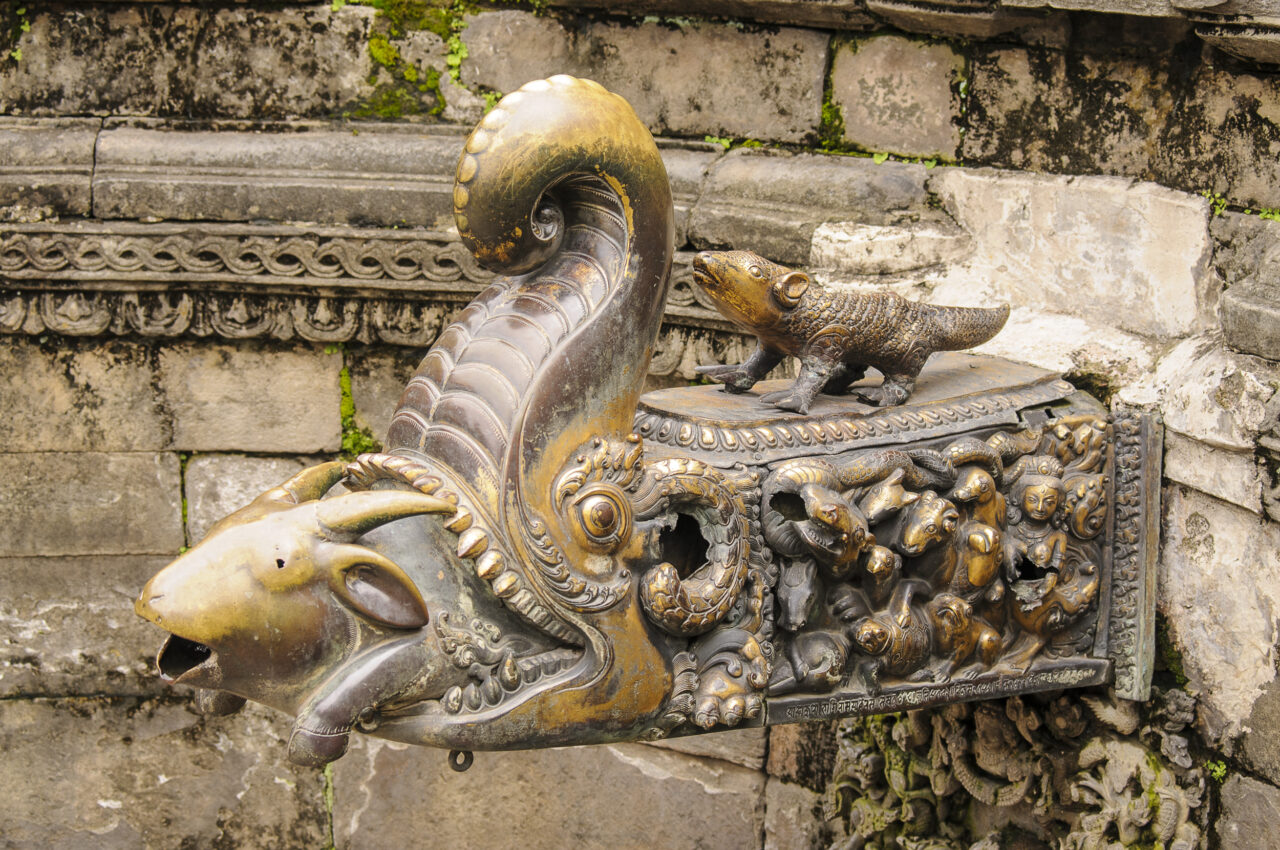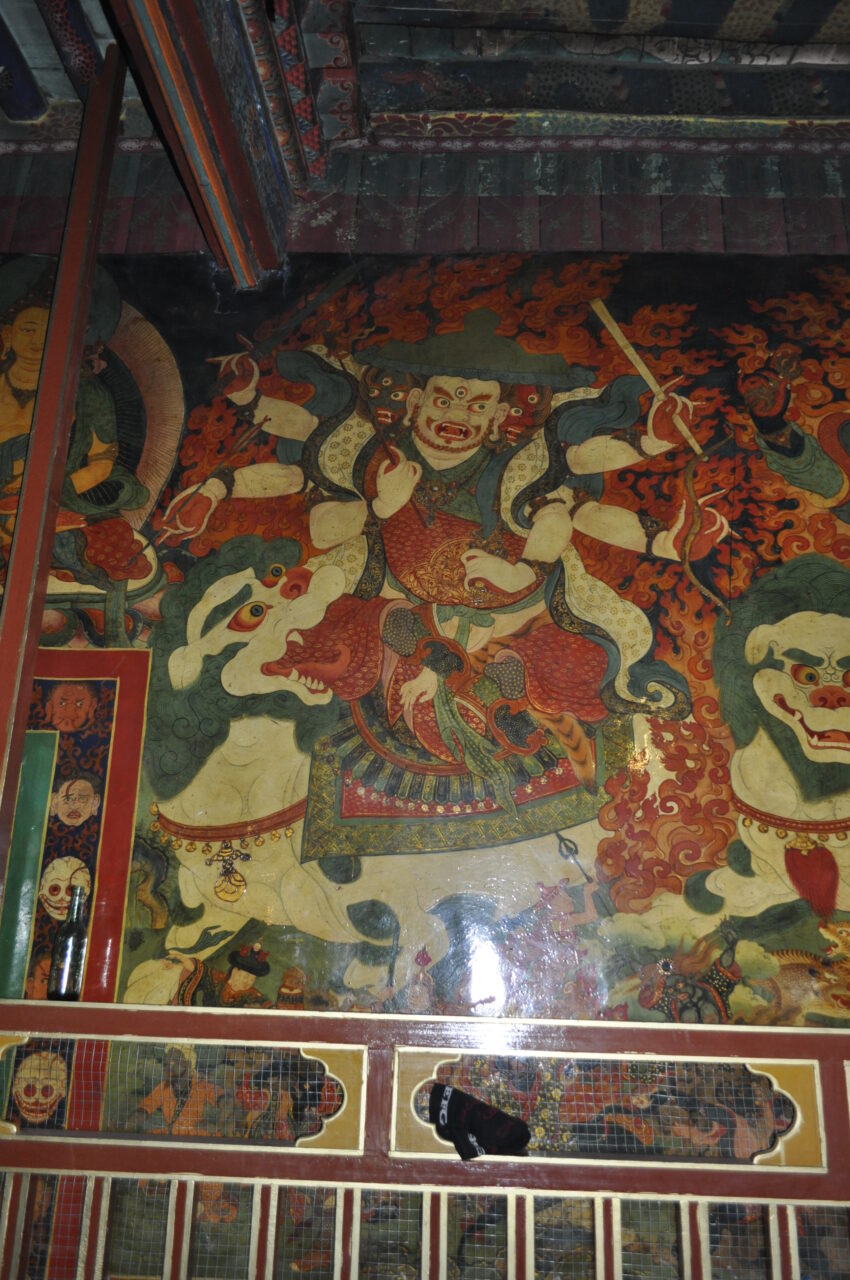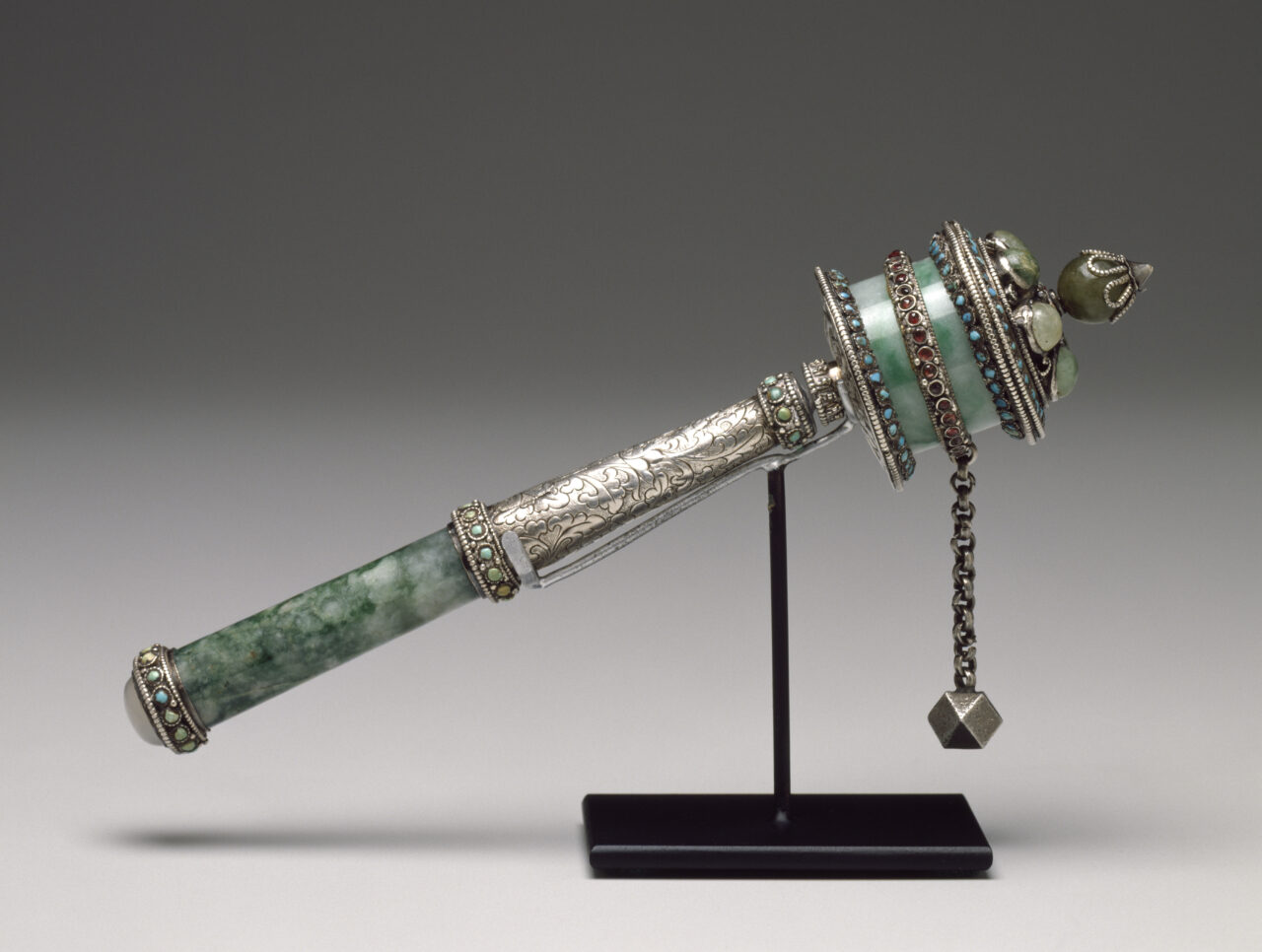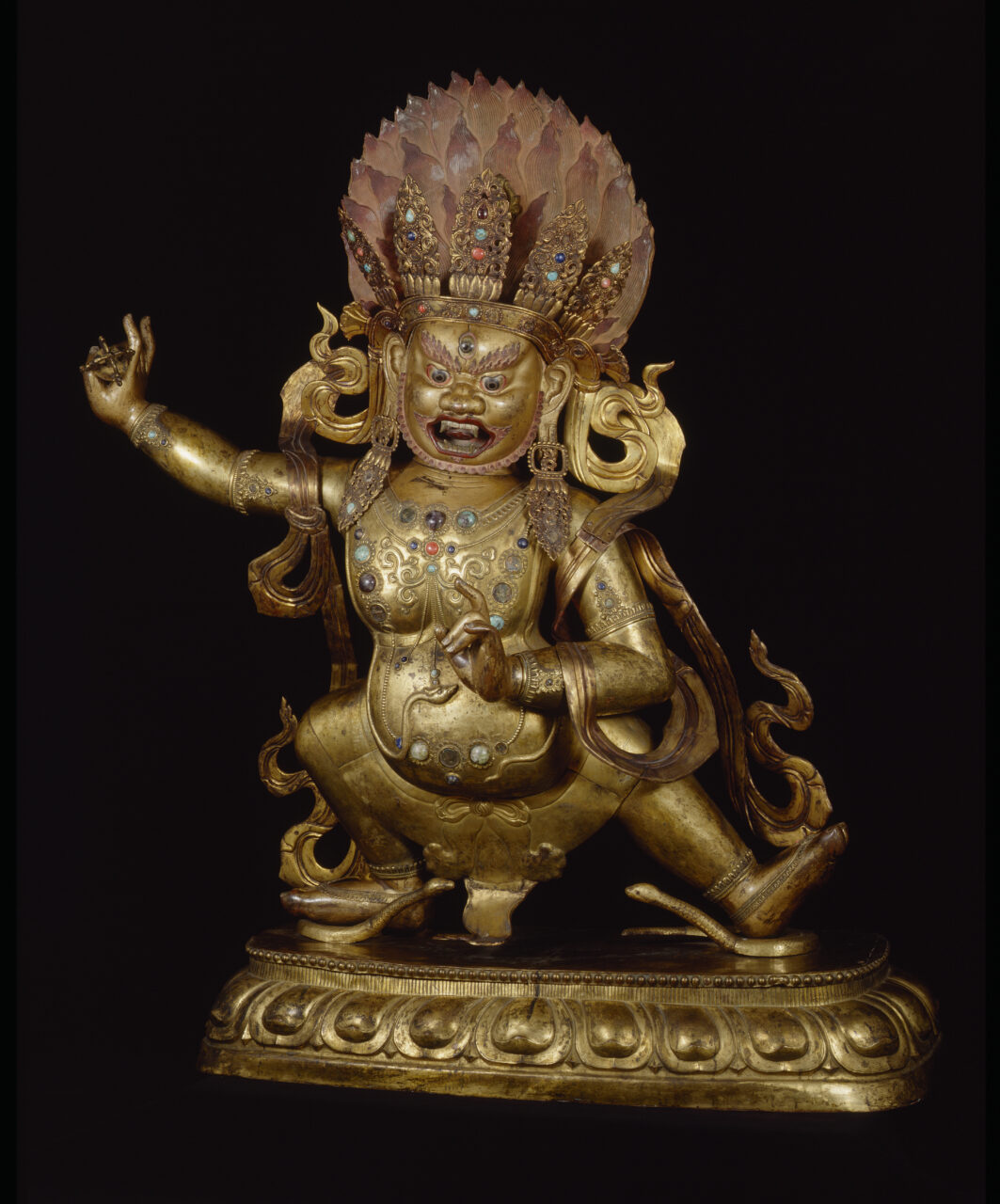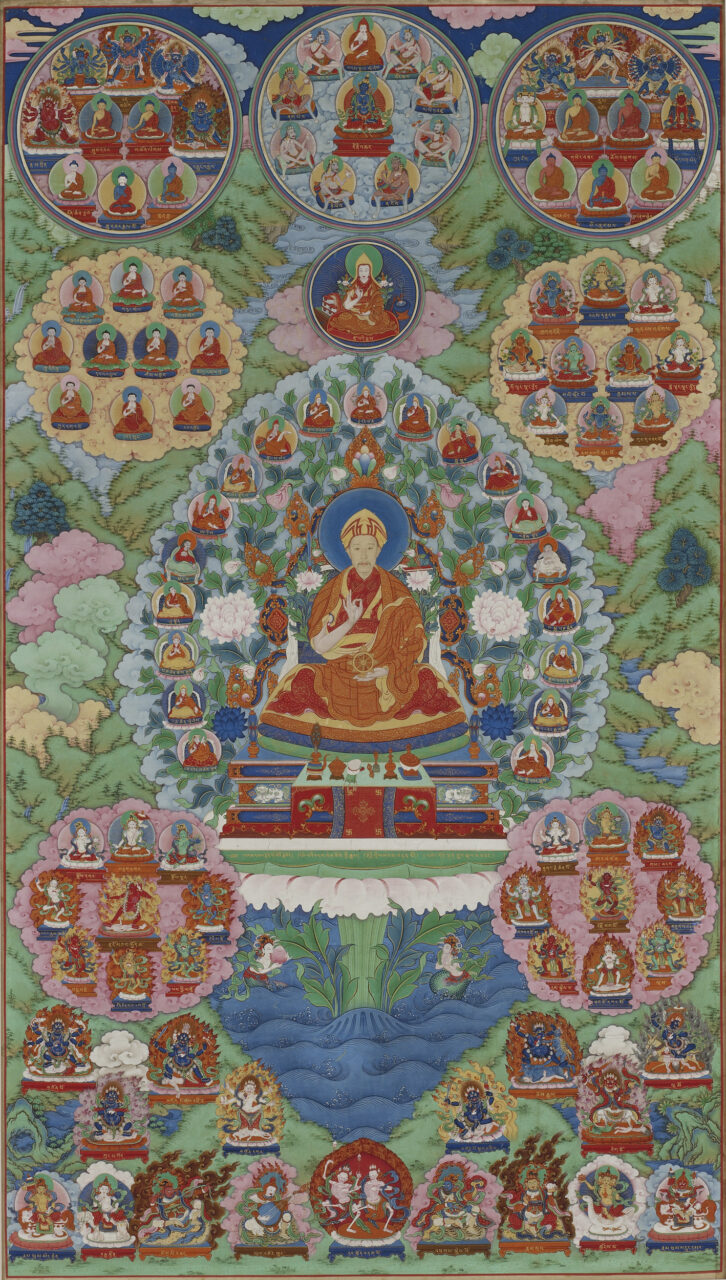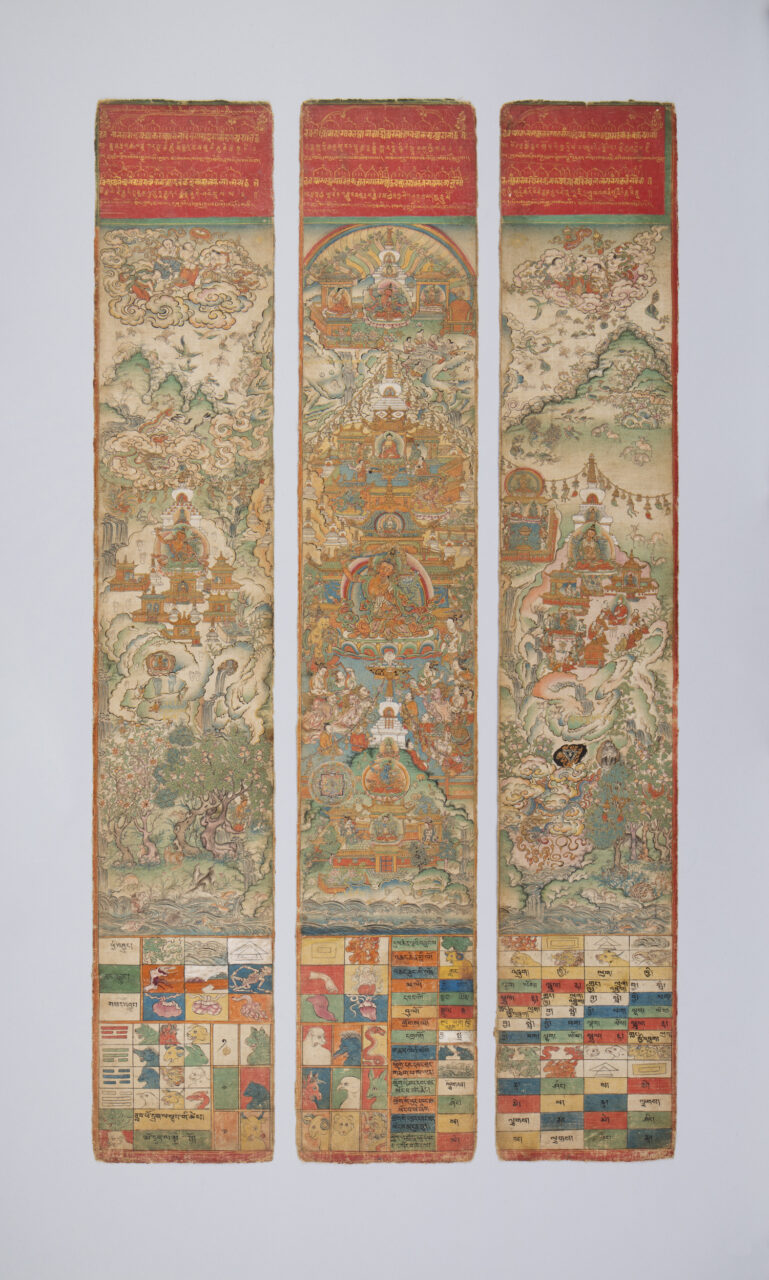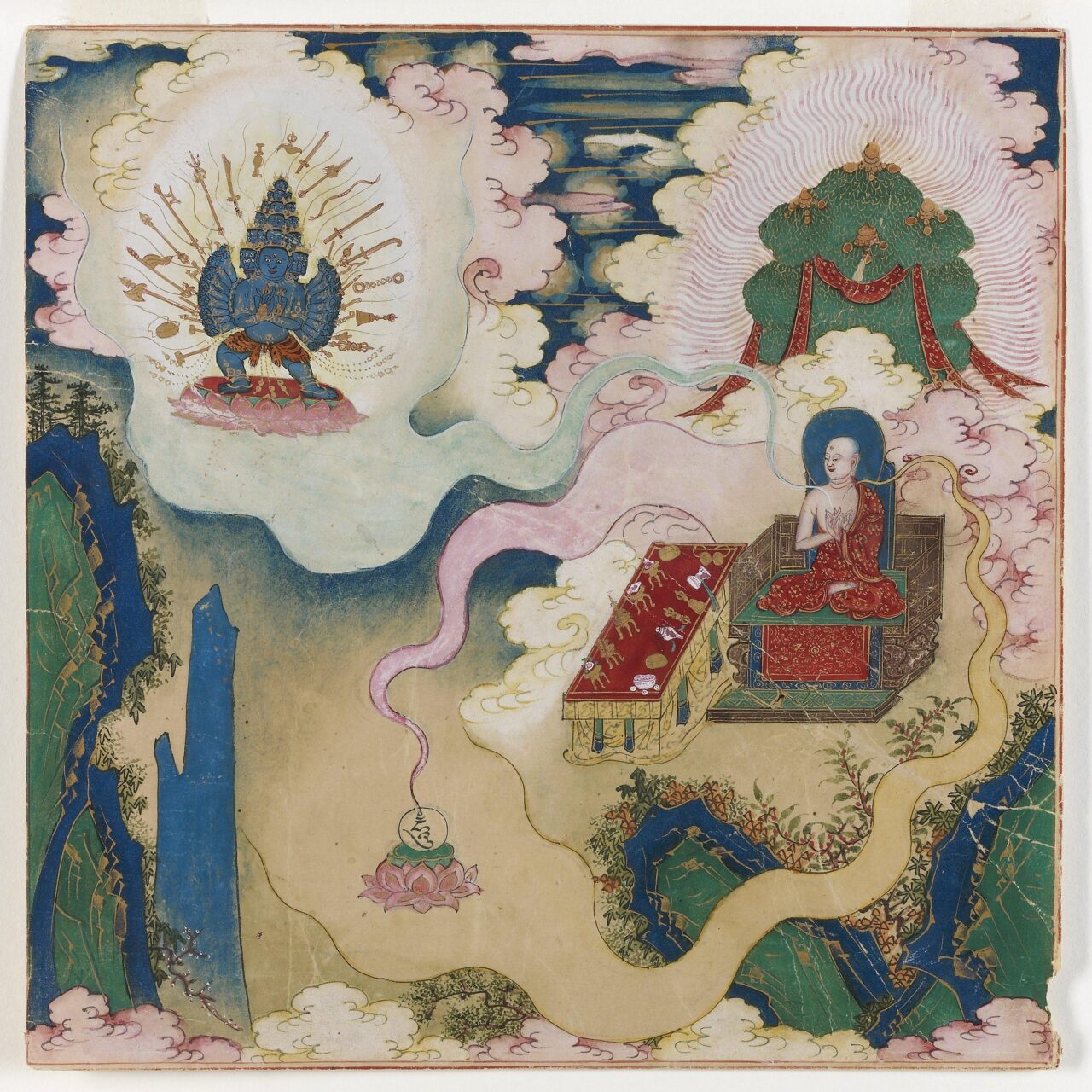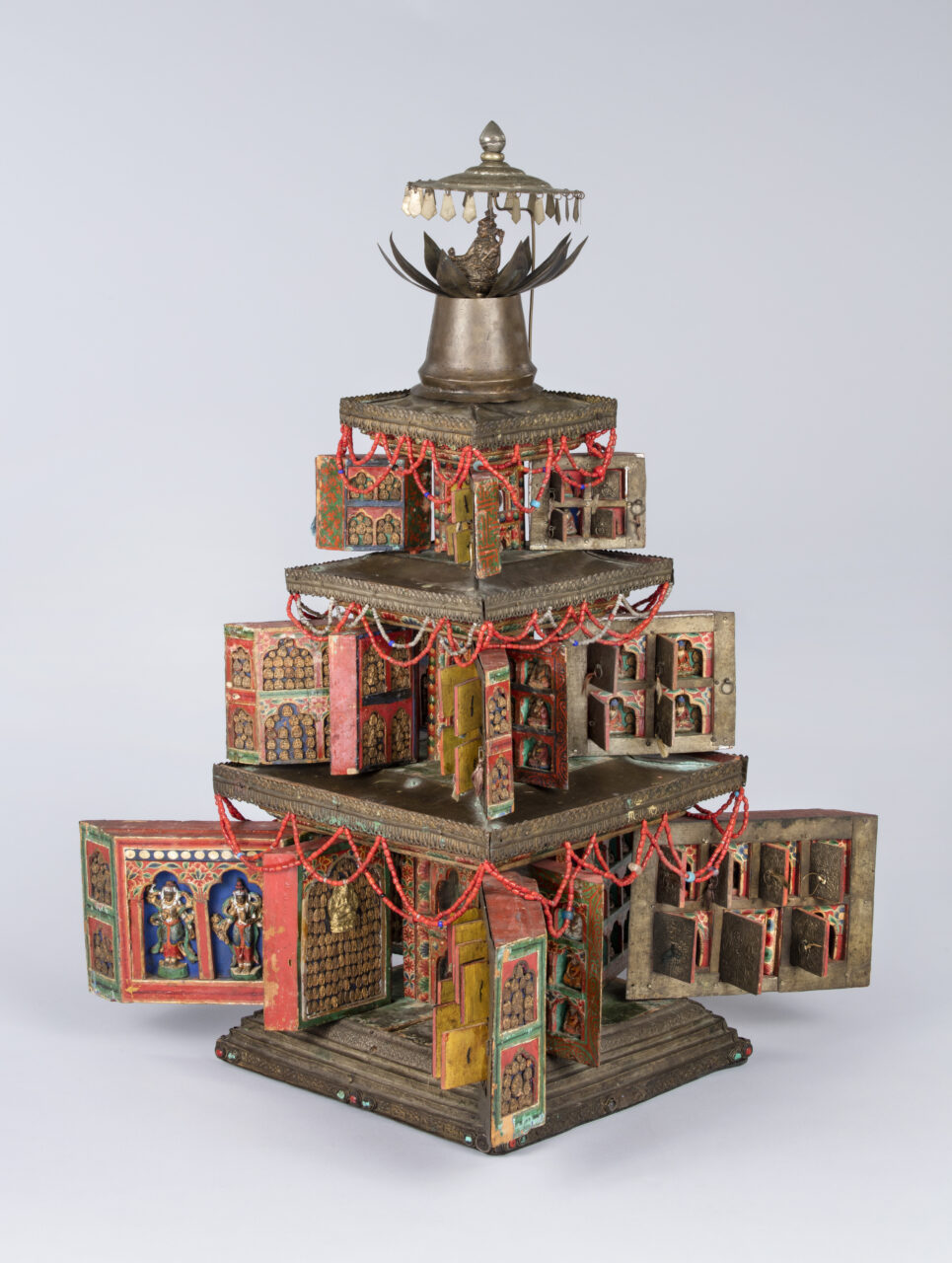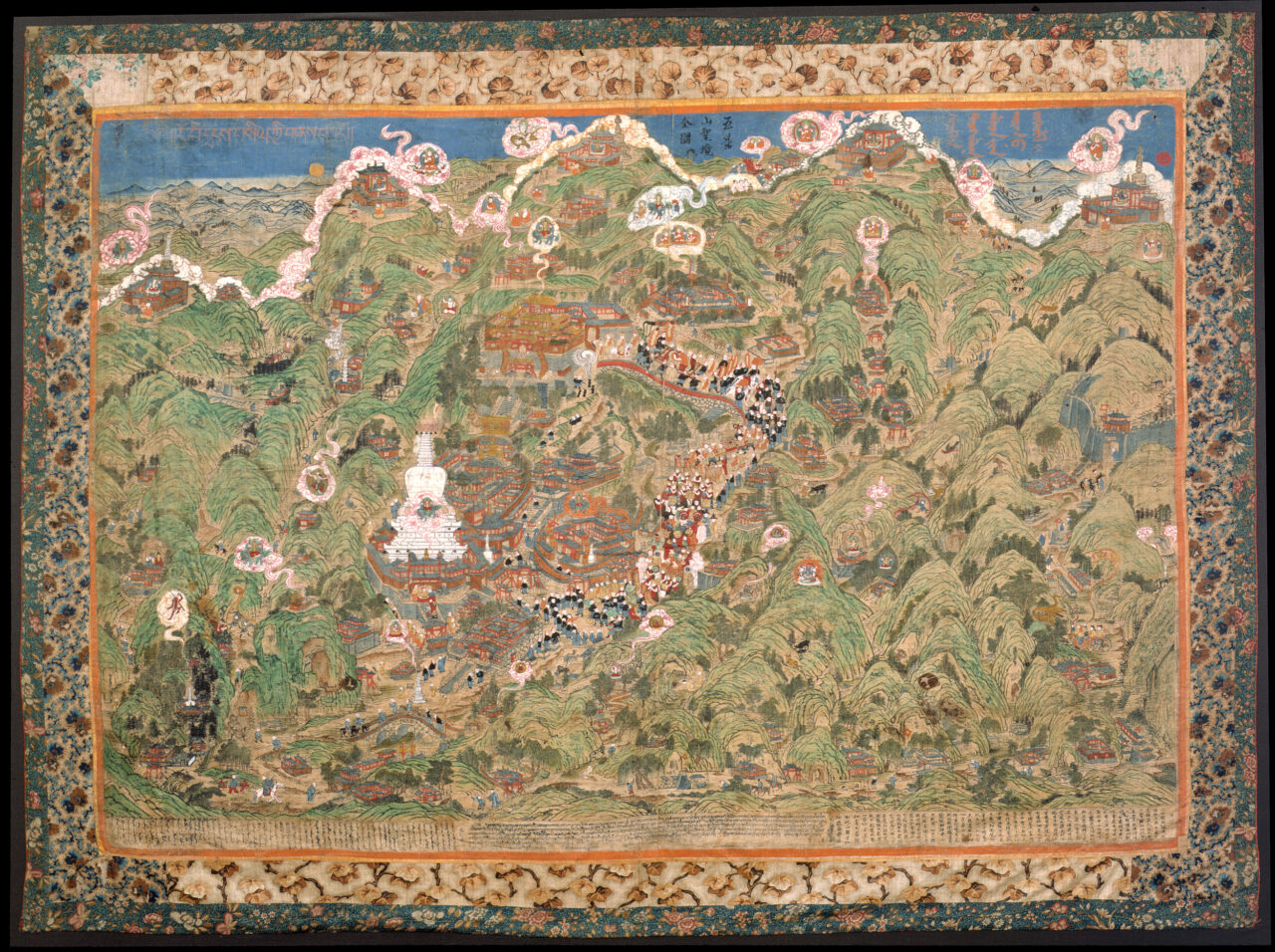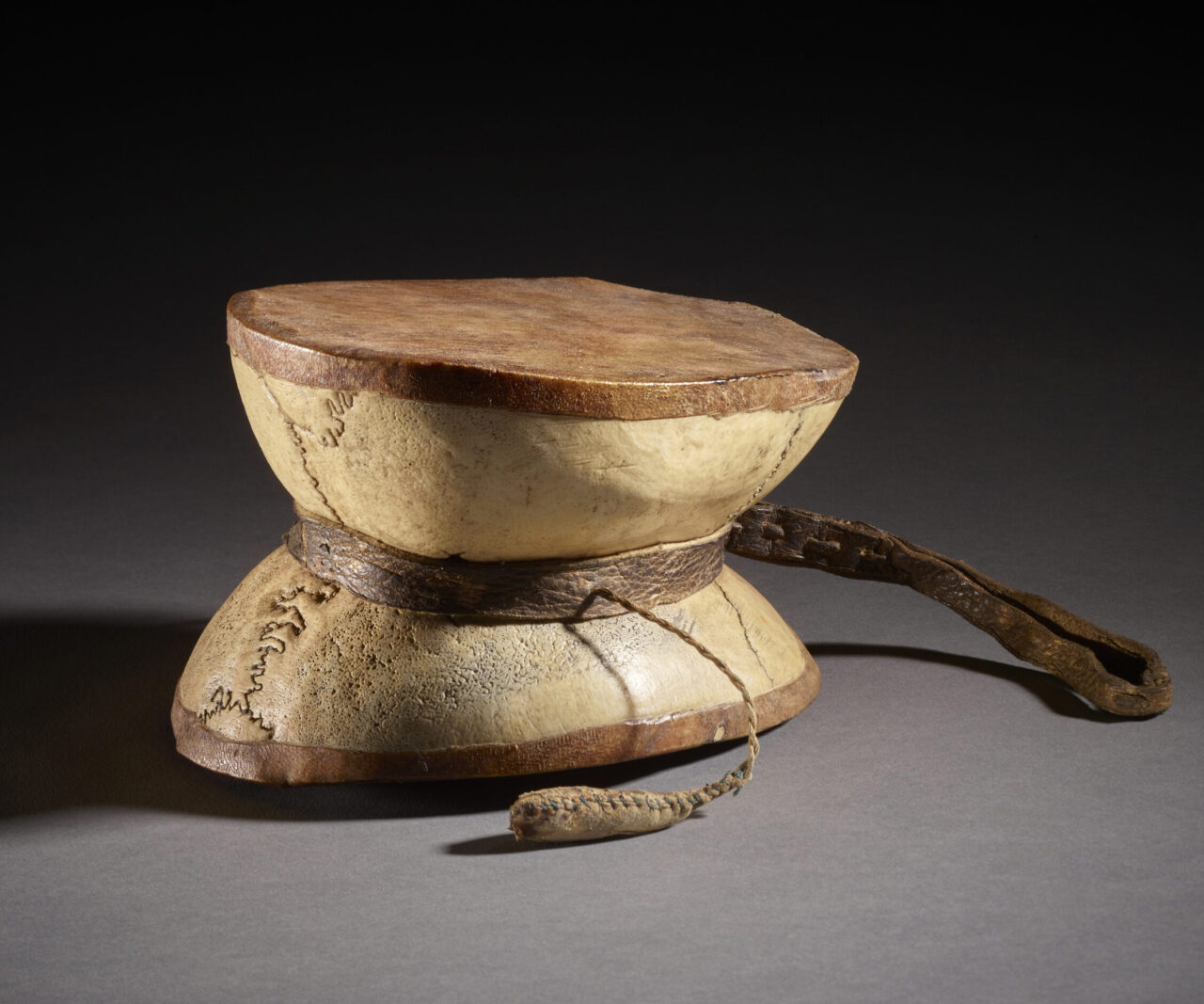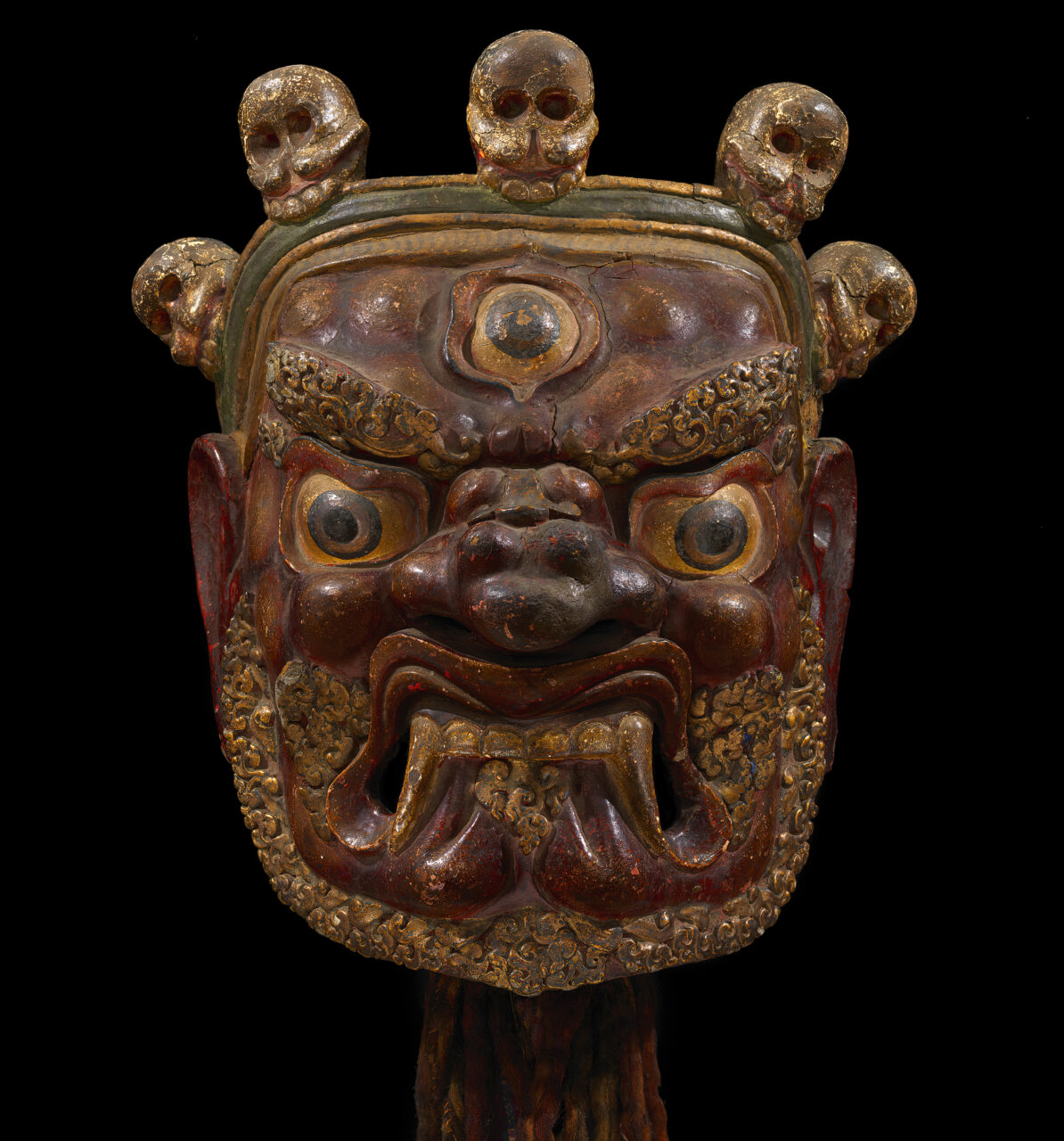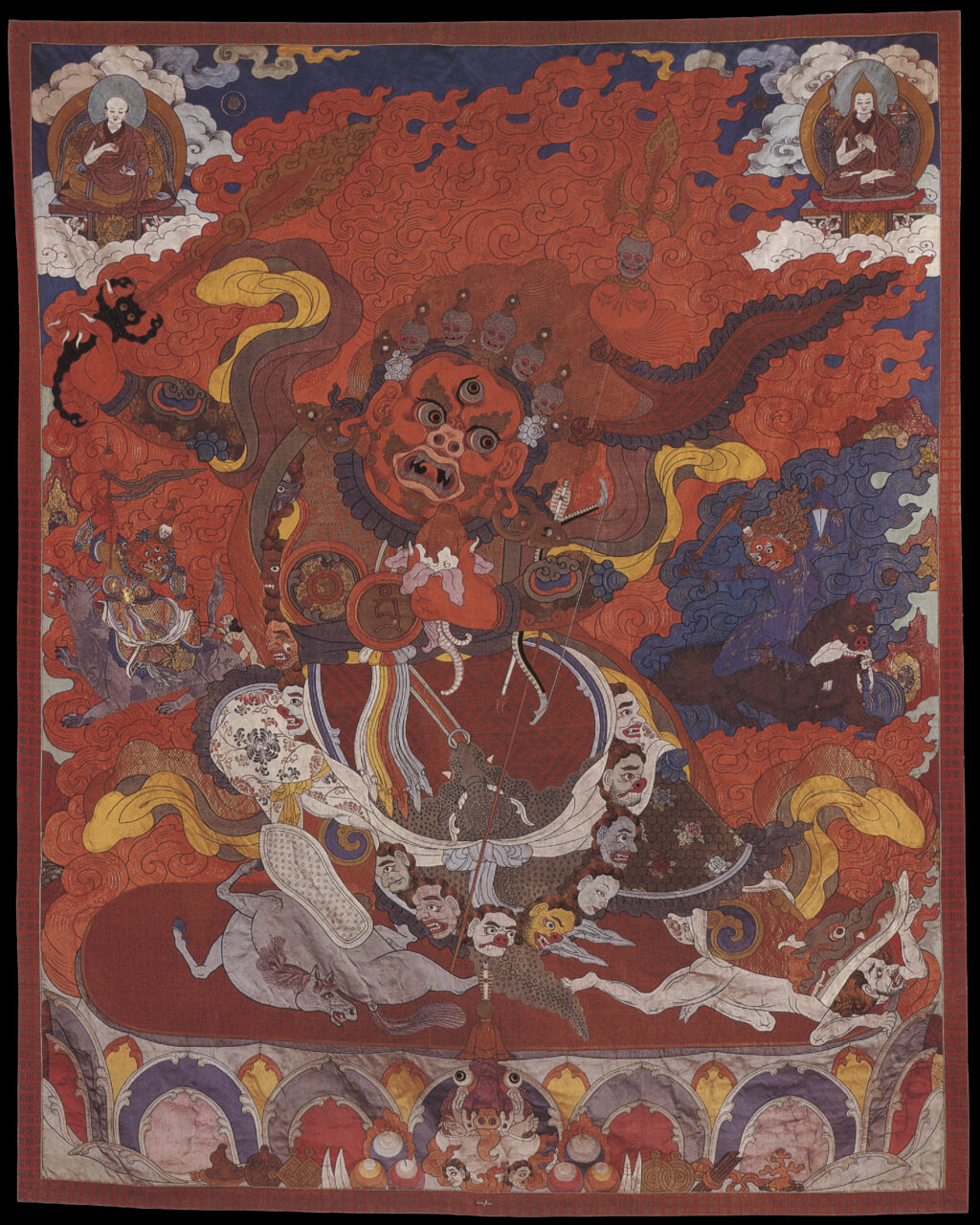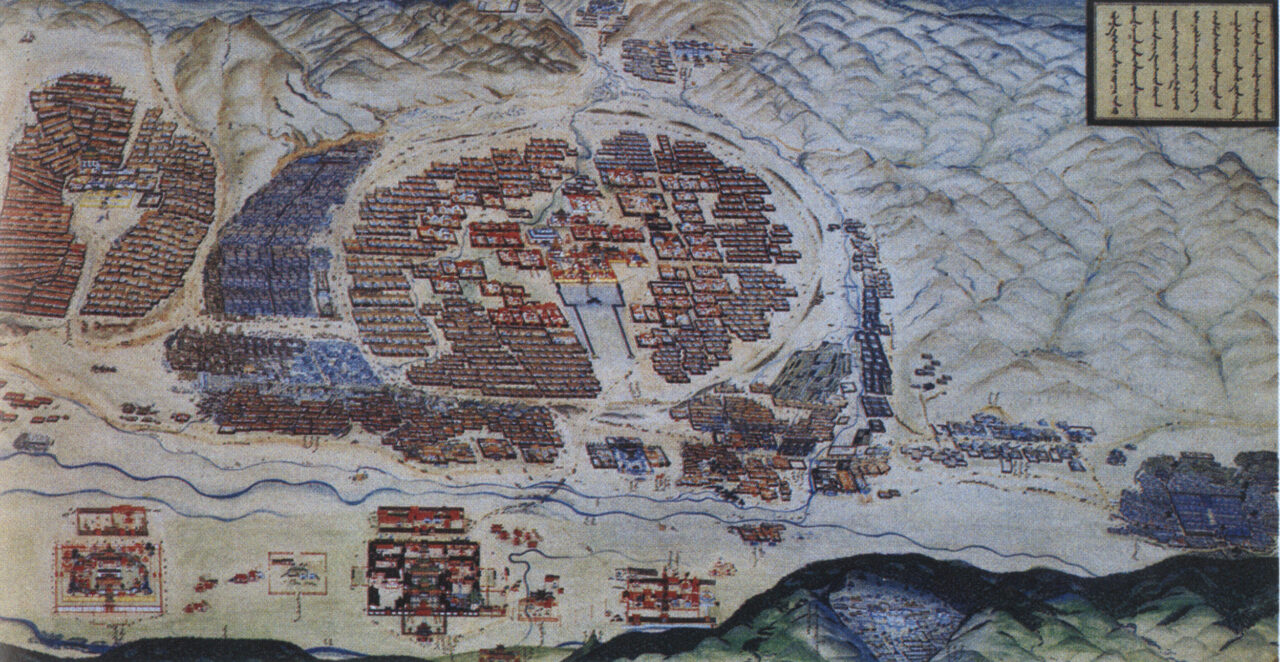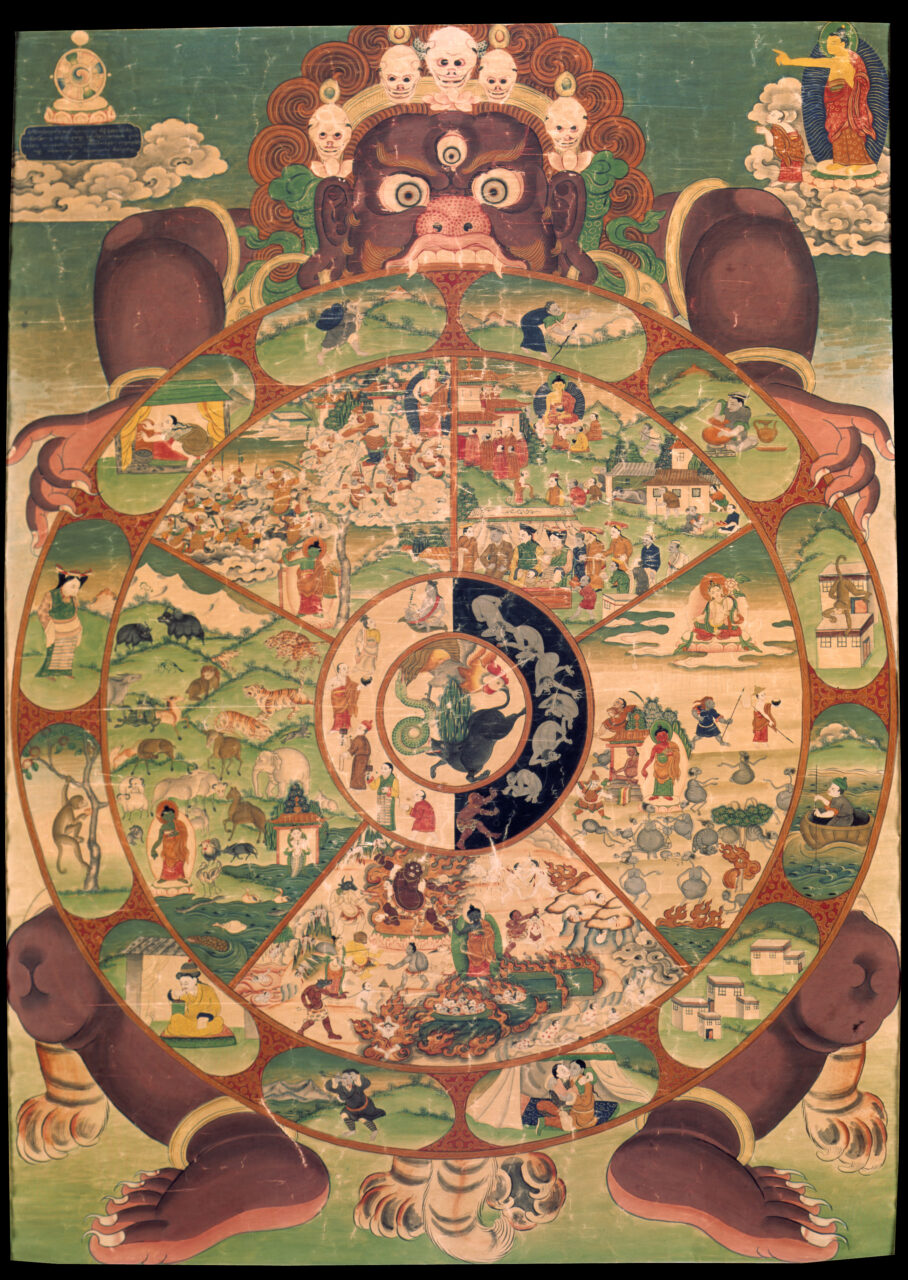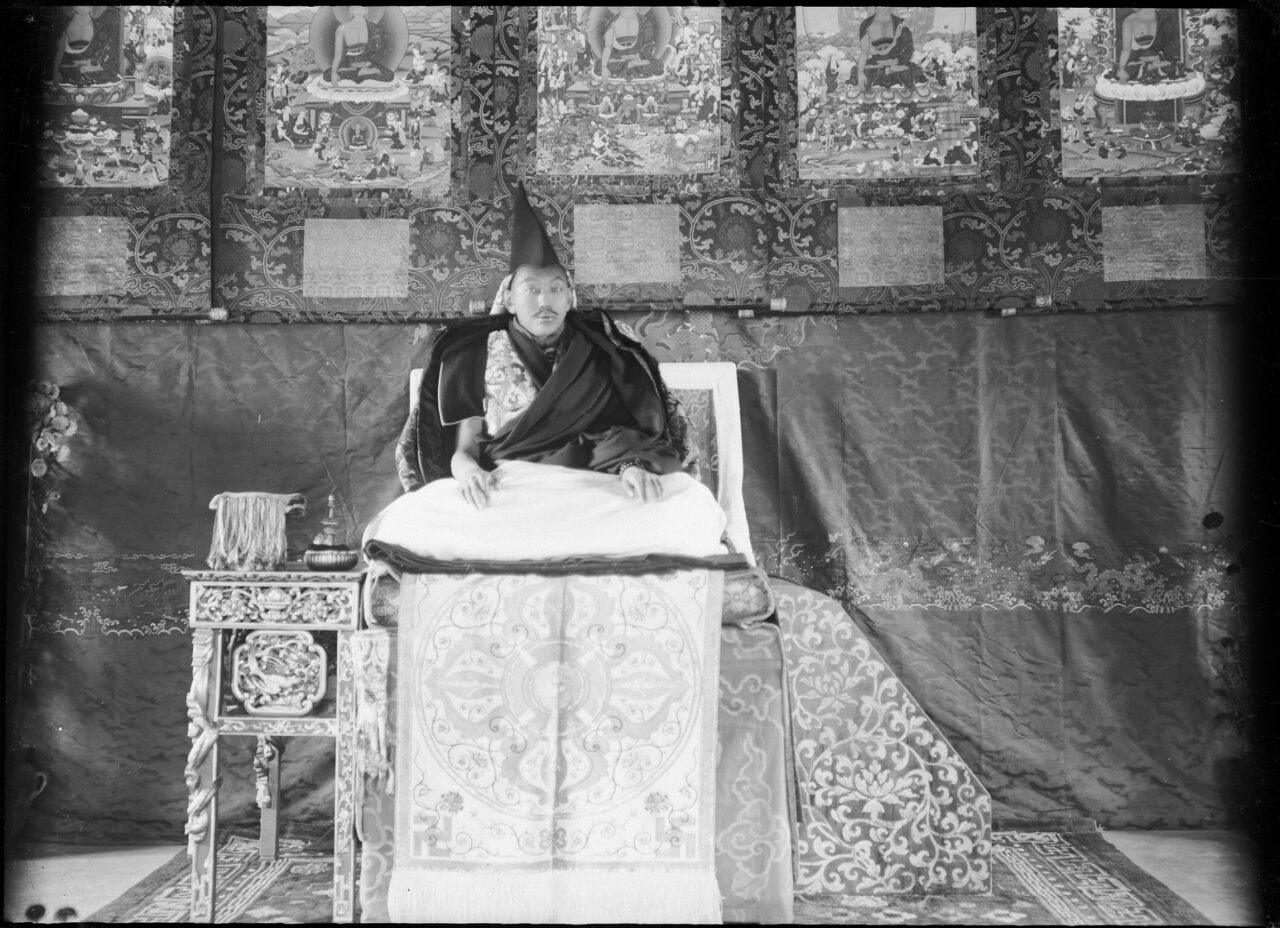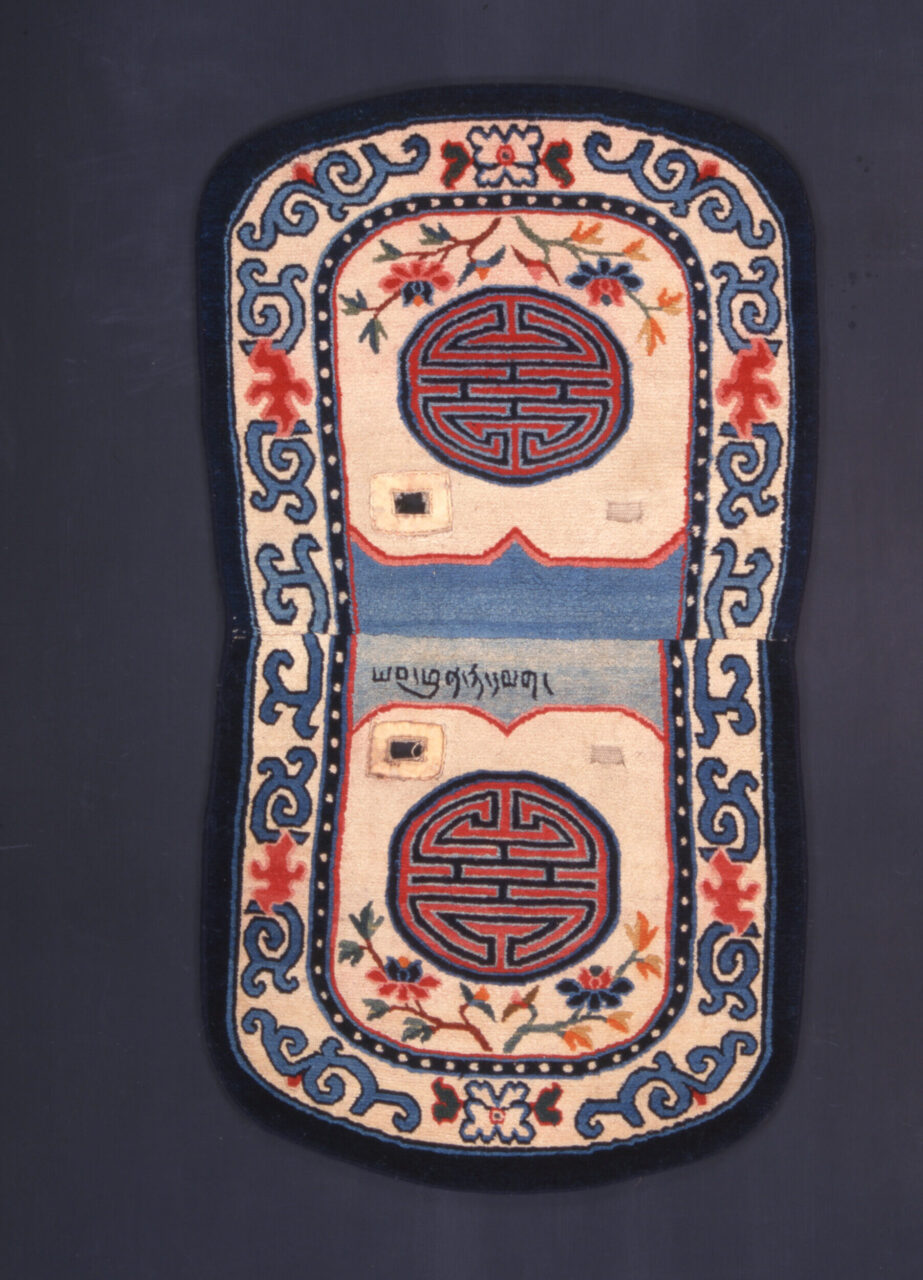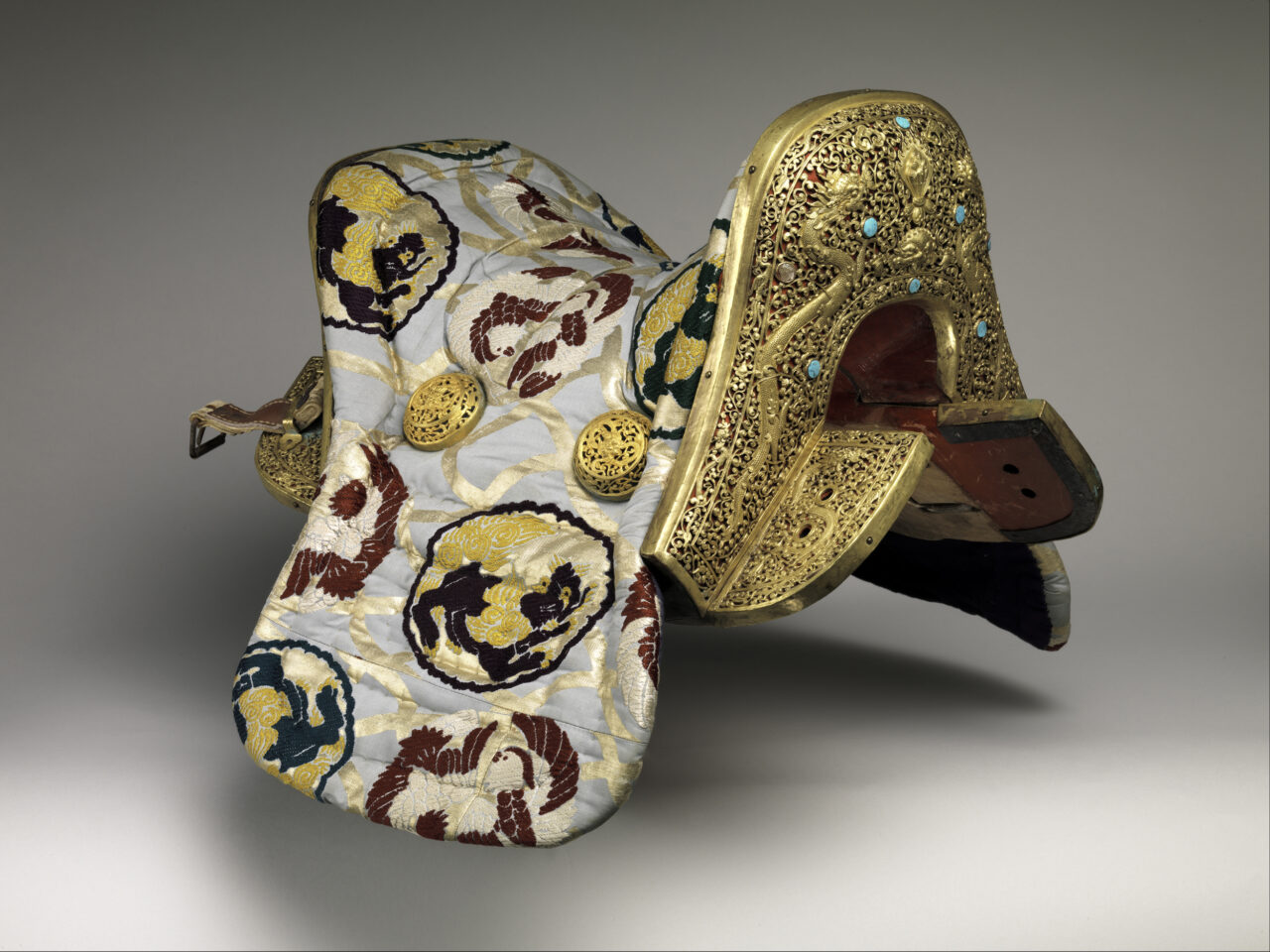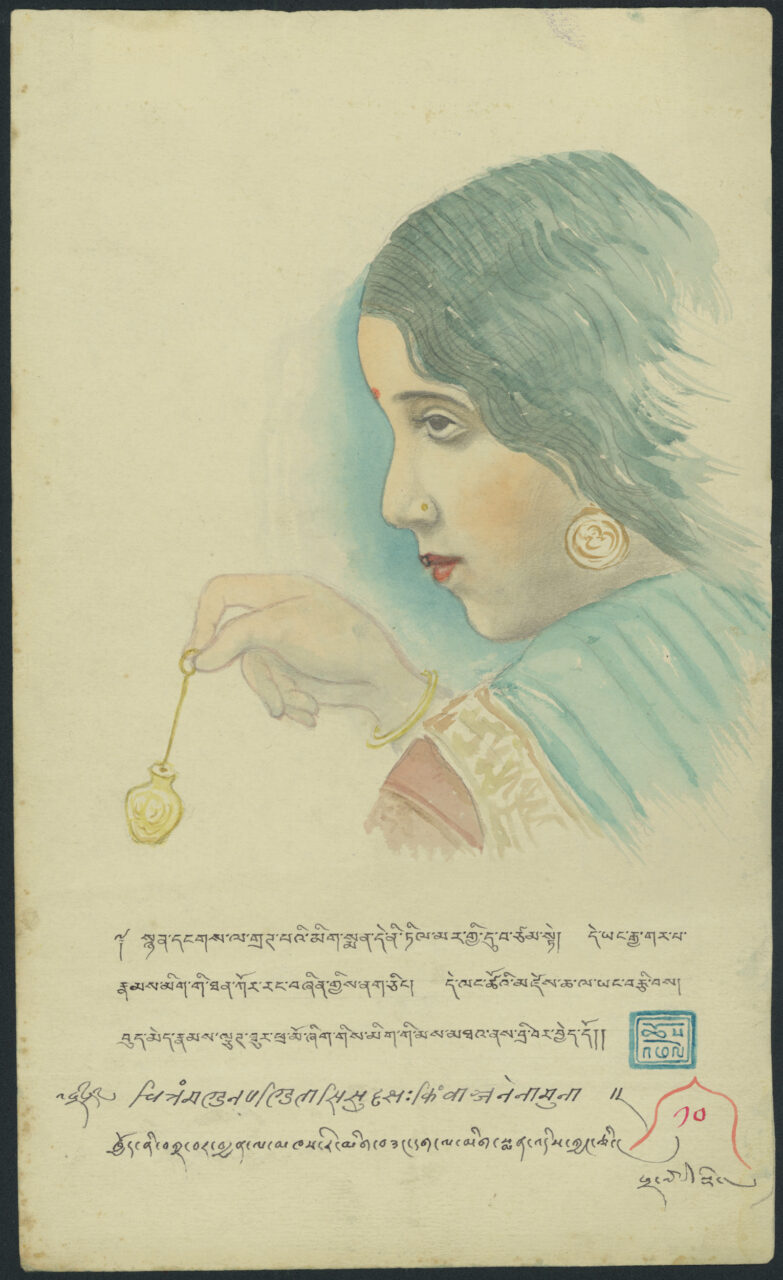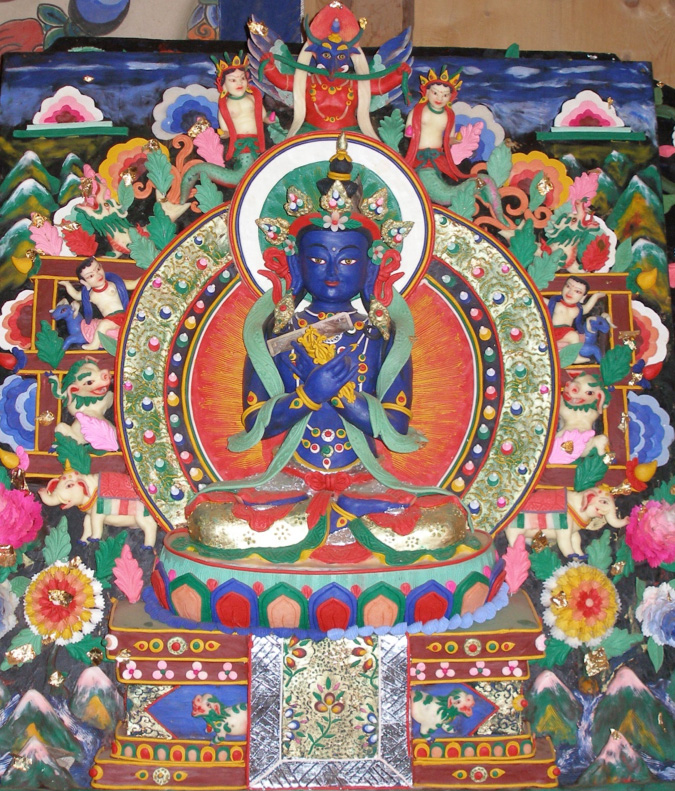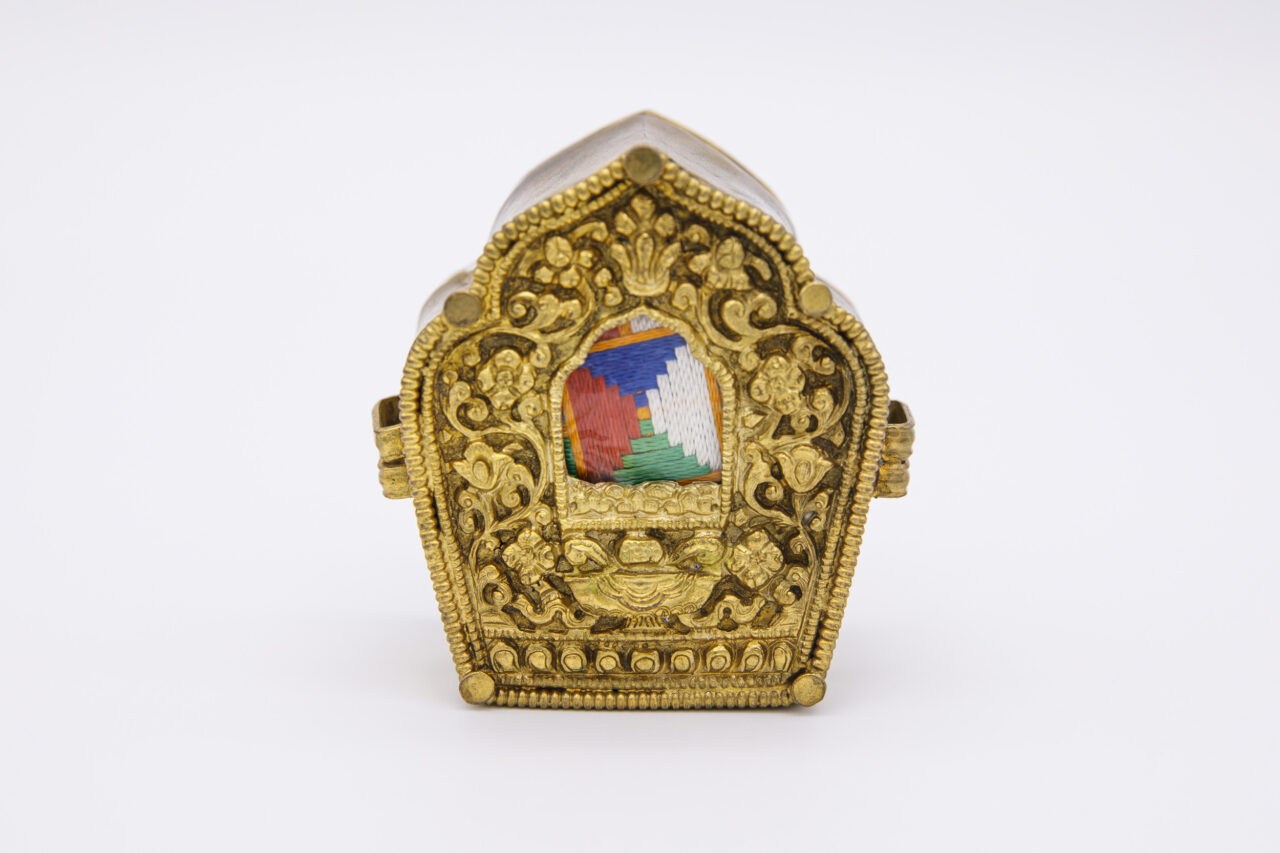Early Himalayan Rock Art
Alchi Petroglyph Field Ladakh, India ; Iron Age (ca. 700–100 BCE)
A Window onto Early Himalayan Artistic and Mortuary Practices
Gold Burial Mask with Engraved Figures Guge, Ngari region, western Tibet ; Protohistoric period (ca. 2nd or 1st century BCE)
The Birth of the Buddha
Mayadevi Giving Birth to Siddhartha Nepal ; Varman or Licchavi period, 4th–5th century
Shrines as the Focal Point of Buddhist Communities
The Svayambhu Chaitya of Kathmandu Kathmandu, Nepal ; founded ca. 5th century or earlier
Residence of the Early Tibetan Kings and Sacred Shrine
Yumbu Lagang Castle Yarlung Valley, U region, central Tibet (present-day TAR, China) ; founded ca. 6th century
Seasonal Travels of the Valley God
Bunga Dya (Bunga Lokeshvara, Karunamaya, Rato Macchendranath) Nepal ; from the 7th century on
Tibet’s Most Sacred Temple
Jokhang Temple, Lhasa Lhasa, U region, central Tibet (present-day TAR, China) ; ca. 620–640
The Most Famous Religious Object in Tibet
Jowo Shakyamuni of the Rasa Trulnang Tsuklakhang (Jokhang Temple) Northern India or Lhasa, Tibet ; 500 BCE? or 11th century CE
The Earliest Grand Buddhist Clay Sculpture in Bhutan and the Bhutanese Tradition of Clay Sculpting
Maitreya Statue at Jampa Lhakhang, Bhutan Jampa Lhakhang, Chokhor, Bhutan ; ca. 7th century
The Distinct Artistic Tradition of Kashmir and Its Impact in Tibet
Buddha on the Cosmic Mountain Kashmir ; ca. 720
Intertwined Religious Cultures: Buddhism and Hinduism
Bodhisattva Bhaishajyaraja, “The Healing King” Swat Kingdom (present-day Swat District, Pakistan) ; 8th–9th century
Buddhist Painting in Greater Kashmir: An Early Inspiration for Tibet?
Painted Manuscript Cover Gilgit Kingdom, Greater Kashmir (present-day Baltistan, Pakistan) ; ca. late 8th or early 9th century
Ancient Tibetan Buddhist Rock Carvings of Vairochana: Portraits of Tibetan Sovereigns and Their Courtiers
Imperial Carvings of Vairochana Denma Drak, Kham region, eastern Tibet (present-day TAR, China) ; 804
Tibetan Visual Models on the Silk Road
Bhaishajyaguru, the Buddha of Healing Dunhuang, Gansu Province, China ; 836
Ceremonial Banquet Vessels in Silver and Gold
Silver Jug Jokhang Temple, Lhasa, Tibet ; 9th–10th century, based on earlier Sogdian or Uyghur prototypes
Intriguing Relations between India, China, and Tibet
Crowned Buddha Nalanda Monastery, northeastern India ; 10th century
Kashmiri “Loving-Kindness” in Ladakh: A Tall Order?
Rock Carving of Four-Armed Bodhisattva Maitreya Mulbekh, Ladakh, India ; ca. 10th–11th century
Divine Kingship in Nepal Mandala
Vishnu Riding on Garuda Nepal ; dated 1004
Kashmiri Aesthetics at the Royal Monastery in Western Tibet
Stupa at Toling Monastery Toling, Ngari region, western Tibet (present-day TAR, China) ; early 11th century
Kashmir’s Visual Legacy in the Western Himalayas
Avalokiteshvara at Khartse Khartse, Ngari region, western Tibet ; ca. early 11th century
The Iconographic Program of a Mid-Eleventh Century Monument
Goddess Dharmameghabhumi in the Tabo Main Temple Tabo Monastery, Spiti, Himachal Pradesh, India ; ca. 1040
In the Presence of the Buddha
Central Shrine Image of Kwa Baha (Hiranyavarna Mahavihar) Patan (Lalitpur), Nepal ; ca. 11th century
Embodying the Words of the Buddha
Illuminated Pages of the Prajnaparamita Sutra Manuscript Nalanda, India ; 1073, 1151
A Marvel of Newar Woodworking
Torana of the Main Shrine at Yetakha Baha Kathmandu, Nepal ; 10th–11th century
Representing the Sacred Site of the Buddha’s Awakening
Mahabodhi Temple Model Eastern India ; ca. 11th century
Cosmopolitanism in a Local Tibetan Environment
Maitreya and Manjushri Mural Dratang Temple, U region, central Tibet (present-day TAR, China) ; ca. 1081–1093
On the Origins and History of an Early Tibetan Masterwork
Tara Who Protects from the Eight Great Fears Reting Monastery, U region, central Tibet ; ca. 1056–1189
Mass Production of Images as a Ritual Practice
Molded Clay Image (Tsatsa ) of Amoghapasha Guge, Ngari region, western Tibet ; 11th–12th century
The Art of Transgression and Transformation
Chakrasamvara Mandala with Newar Donors Kathmandu Valley, Nepal ; ca. 1100
The Commemorative Stupas of the Lang/Pakmodrupa Dynasty
Densatil Monastery Pakmodru, U region, central Tibet (present-day TAR, China) ; founded 1158
Tangut Patrons’ Embrace of Buddhist Sacred Sites and Cosmopolitan Teachings
Cave 3 at Yulin Cave Temples Yulin, Tangut Kingdom (Xixia) (present-day Anxi, Gansu Province, China) ; ca. late 12th century
Woodblock Printing and State Protection in the Inclusive Buddhist Culture of the Tanguts
A Pancharaksha Print from Khara-Khoto Khara-Khoto, Tangut Kingdom (Xixia) Gansu Province, China ; ca. late 12th century
Presence and Power: Footprints in Tibetan Art
Bodhisattva Avalokiteshvara and the Buddha’s Footprints Central Tibet ; 12th century
Material and Spiritual Abundance in the Kathmandu Valley
Goddess of Prosperity, Vasudhara Nepal ; ca. late 12th–early 13th century
Alchi at the Threshold of a New Era in Tibetan Buddhist Art
Monumental Manjushri with Mahasiddha-Adorned Robe Alchi Sumtsek, Ladakh, India ; ca. 1220
Tibetan Buddhist Icons Produced in Silk
Achala Silk Tapestry Composition: Tangut Kingdom (Xixia), possibly produced in Dingzhou (present-day Baoding, Hebei Province, China) ; early to mid-13th century
A Masterwork Depicting Tantric Masters of the Sakya Tradition
Virupa Sakya Monastery, Tsang region, central Tibet ; ca. 1216–1244
Cosmos, Empowerment, and Ritual Regalia
Vajracharya Priest’s Crown Nepal ; ca. 13th century
The Political Role of Tibetan Buddhism at the Mongol Court
Mahakala Stone Sculpture Tibet ; dated 1292
Newar Artist’s Buddhist Monument for the Mongol Rulers in Beijing
White Stupa, Attributed to Nepalese Artist Anige Beijing, China ; 1279
Sculpture under Mongol Patronage: An Indian Buddhist Deity in a Nepalo-Tibeto-Chinese Form
Relief Carving of a Nine-Deity Ushnishavijaya Composition, Niche 84 at Feilaifeng Cliff Hangzhou, China ; ca. 1282–1292
Signs of Authority in the Mongol Empire
Mongol Messenger’s Badge (Paiza or Gerege ) in Pakpa Script Mongol Empire/Yuan dynasty ; late 13th–early 14th century
The Names that Encode Many Aspects of the “Lotus-Born” Guru
Padmasambhava and His Manifestations Tibet ; late 13th century or later
Commemorative Monument for a Charismatic Teacher
The Chorten Cave of Luri Luri, present-day Mustang District, Nepal ; ca. 1300
A Landmark Monument in the Art History of Ladakh
The Temple of Wanla Wanla, Ladakh, India ; first half of the 14thcentury
Woven Mandalas in the Mongol Imperial Court
Vajrabhairava Mandala Mongol Empire/Yuan dynasty, probably Daidu (Beijing, China) ; ca. 1329
Mongol Patronage, Nepalese Artists, and Murals as a Public Marketing Strategy for Sacred Books
Mural Painting at Zhalu Monastery Zhalu Monastery, Tsang region, central Tibet (present-day TAR, China) ; ca. 1340
Stabilizing Empire through Buddhist Architectural Monument, Text, and Image
Juyong Guan Stupa Gate Changping District, Beijing, China ; 1345
A Sculpture from a Himalayan Cultural Contact Zone
Queen Dipamala as the Goddess Prajnaparamita Western Nepal/western Tibet ; mid-14th century
An Example of Court Patronage to Honor a Religious Master
Mandala of Manjuvajra of the Vajravali Set Commissioned in Memory of Lama Dampa Lhokha, Central Tibet ; 1375–1380
Sacred Art among Hidden Treasures
Dorje Discovered by Dorje LingpaDiscovered in Senge Dzong, Bhutan ; attributed to the 8th century, discovered in the 14th century
A Ming Dynasty Monastery at the Sino-Tibetan Frontier
Qutan Monastery (Drotsang Dorje Chang) Drotsang, Tsongkha, Amdo region, eastern Tibet (present-day Ledu county, Qinghai Province, China) ; 1392–1427
Imperial Tibetan Buddhist Statues under the Yongle and Xuande Reigns of the Ming Dynasty
Pensive Bodhisattva Avalokiteshvara Nanjing or Beijing, China ; Yongle period (1403–1424)
The Style of Upper Western Tibet under Gelukpa Patronage
Murals at Toling Dukhang “Ornament of the World” Toling Monastery, Guge Kingdom, Ngari region, western Tibet (present-day TAR, China) ; 15th century (ca. 1424–1458)
An Architectural Representation of Complete Tantric Knowledge
Gyantse Kumbum Pelkhor Chode Monastery, Gyantse, Tsang region, central Tibet (present-day TAR) ; ca. 1427–1442
The earliest dated Newar artist’s sketchbook
Jivarama’s Sketchbook Tibet (and Nepal?) ; 1435
Carrying Out Acts of Service in the Buddhist Community
Nepalese Paubha Commemorating the Death of Pandita Vanaratna Gopicandra Monastery, Patan, Nepal ; 1469
Reexamining Khyentse Chenmo and His Painting Tradition
Murals of Gongkar Chode Gongkar Chode Monastery, Lhoka, U region, central Tibet (present-day TAR, China) ; 1464–1476
Challenges in Dating Nepalese Stone Sculpture
Standing Buddha Shakyamuni Donated by Lundeva Kathmandu, Nepal ; 15th century,commissioned in a 9th–10th-century style
A Microcosm of the Bon Religion
Bon Deity Trowo Tsochok Khagying Tibet ; 15th century
A Bhutanese Buddhist Master’s Treasure House
Tamshing Temple Bumthang District, Bhutan ; 1501–1505
A Tibetan Liberation Tale Illustrated in Print and Manuscript
Earliest Extant Printed Edition of Milarepa’s Life Story Ron Wosel Puk, Gungtang, Southwest Tibet ; 1538
A Royal Teacher and Artist
Portrait of Lowo Khenchen Sonam Lhundrub Mustang, Nepal ; first half of the 16th century
Agents of Religious and Artistic Dialogue along the Southern Sino-Tibetan Frontier
Dabaojigong Temple Lijiang, Yunnan Province, China ; founded 1582
The Sixteenth-Century Renaissance of Buddhism in Mongolia
Erdeni Juu Monastery Övörkhangai Province, Mongolia ; founded 1582
Rise of the Encampment Painting Tradition
Portrait of the Ninth Karmapa Central Tibet (possibly Tsurpu Monastery) ; ca. 1590
The Goddess of Miraculous Power
Siddhi Lakshmi (Purnachandi) Nepal ; ca. 16th–17th century
The History, Literature, and Art of Tibetan Swords
Sword, Scabbard, and Sword Belt Tibet ; Blade: ca. 16th–17th century; Hilt, Scabbard, and Belt: ca. early 18th–mid-19th century
Taranatha’s Vision of Shakyamuni’s Quest
A Monumental Life of the Buddha Mural Puntsok Ling Monastery, Tsang region, central Tibet (present-day TAR, China) ; ca. 1615–1630
Papier-Mâché Sculpture and the Nyingma School at the Periphery
Portrait of Ngadak Puntsok Rigdzin Lo Gekhar, Mustang, Nepal ; mid-17th century
A Monument of Tibetan Cultural Identity
Potala Palace Lhasa, U region, central Tibet (present-day TAR, China) ; 1645–1694
A Tibetan Artist’s Interest in Archaic Chinese and Kashmiri Art
Arhats Viewing a Painting of Birds by the Tenth Karmapa Lijiang, Yunnan Province, China ; 1660
Medicine, Science, and the Everyday in Tibetan Art
Desi Sanggye Gyatso’s Medical Paintings Lhasa, U region, central Tibet ; 1687–1697
Architectural Expression of Monsoonal Phenomena
Golden Fountain of Bhaktapur Bhaktapur, Nepal ; 1688
The Mongolian Artist Zanabazar and the Mongol Devotion to the Future Buddha Maitreya
Maitreya Mongolia ; 1680s
Bhutan’s Most Acclaimed Religious Sanctuary
Taktsang, the Tiger’s Lair Paro District, western Bhutan ; founded 1692–1694
Ritual Symbolism and Artistic Aspects of Three-Dimensional Mandalas in Tantric Tibetan Buddhism
The Kalachakra Mandala in the Potala Palace Lhasa, U region, central Tibet ; late 17th century
Wrathful Tantric Imagery at the Seat of the Tibetan State Oracle
Nechung Monastery Murals Nechung Monastery, Lhasa, U region, central Tibet (present-day TAR, China) ; ca. 1682
Accumulating Merit Every Day
Prayer Wheel Tibet or Mongolia ; 17th–18th century
Illustrating the Dzogchen Teachings through Murals
Lukhang Murals Lhasa, U region, central Tibet (present-day TAR, China) ; ca. 1700 and later
Abounding Visions of Eminent Lives
Nartang Woodblock Prints and Their Painted Copies: Previous Lives of the Panchen Lamas Nartang printing house, Tsang region, central Tibet ; second quarter of 18th century (and a painted copy)
The Statuary of Dolonnuur, Inner Mongolia, and Its Impact across the Tibetan Buddhist World
Vajrapani Dolonnuur, Inner Mongolia ; mid-18th century
Great Tibetan Patron and Designer of Buddhist Art in Kham
Portrait of Situ Panchen Pelpung Monastery, Derge, Kham region, eastern Tibet ; ca. 1760s
Tibetan Buddhism at the Qing Court
The Qianlong Emperor as Manjushri-Chakravartin Imperial workshop in Beijing, China, with face by Giuseppe Castiglione ; mid-18th century
Icons Marking the Communal Performance of Buddhist Rituals
Plaque Commemorating the Bhimaratha Old Age Ritual Kathmandu, Nepal ; November 1775
Tibetan Divination
The White Beryl Illuminated ManuscriptSakya Monastery, Tsang region, central Tibet ; 18th century
Cultural Translation of a Tantric Visualization Practice
The All-Knowing Buddha Vairochana Visualization Album Wangzimiao Temple, Aokhan Banner, Inner Mongolia ; ca. 18th–19th century
Devotion in Motion, Featuring a National Treasure of Bhutan
Portable Shrine (Tashi Gomang ) Bhutan ; 18th–19th century
The Multifaceted Power of Ornament
Tayo-bizakani Ritual Necklace with Naga, Peacock, and Dragon MotifsNepal ; ca. 19th century
Vessels as Containers of Potential
Pitcher Nepal ; ca. 19th century
Transcultural Visions of a Buddhist Mountain
Panoramic Map of Mount Wutai Cifu Temple, Mount Wutai, China ; 1846
The Mountain Palace of a Worldly Divinity
Mountain God Kula Khari Tibet ; 19th century
The Knell of Impermanence
Double-Sided Skull Drum Tibet ; probably 19th century
Reenacting Foundational Stories as Communal Performance
Ritual Dance Mask of Guru Dorje Drolo Bhutan or southern Tibet ; ca. 19th century
Appliqué Artistic Tradition and the War God Begtse’s Significance in Mongolia
Begtse Monumental Appliqué Yekhe Khüriye, Mongolia ; late 19th–early 20th century
Mapping Yekhe Khüriye’s Cityscape as the “Capital City”
Mongolian Map of Capital Yekhe Khüriye Mongolia ; 1912
A Visual Explanation of Buddhist Cosmology
Wheel of Existence Central Tibet ; ca. early 20th century
Lenses of Modernity: Photography in Tibet and the Himalayas
Photograph of the Thirteenth Dalai Lama Lhasa, U region, central Tibet ; 1921
Recognizing Rebkong’s Regional Painting Contributions
Shambhala Kings Mural Sengge Shong Mago Monastery, Rebkong, Amdo region, eastern Tibet (present-day Qinghai Province, China) ; ca. 1935
A Mundane Craft Elevated for a Commemorative Parade
Saddle Carpet for the Yabzhi Punkhang Ceremonial Cavalry Gyantse, Tsang region, central Tibet ; 1930s
A Progressive Tibetan Aristocrat’s Traditional Equestrian Equipment
Saddle Made for Yuthok Tashi Dhondup Derge, Kham region, southeastern Tibet ; ca. 1943–1947
Tibet’s First Modern Artist
Gendun Chopel’s Woman Applying Kohl India ; ca. 1940
Precious Fabrics in the Buddhist Himalayan Kingdom of Bhutan: Symbols of Identity, Prestige, and Prosperity
Bhutanese Men’s Garment (Gho ) Bhutan ; 1970–1980
The Mega-Sized Guru that Presides over the Hidden Land
Monumental Statue of Guru Rinpoche Samdruptse, Namchi, Sikkim, India ; 2004
Ritual Offerings Connecting Humans and Deities
Tormas Labrang Monastery, Amdo region, eastern Tibet (Gansu Province, China) ; 2006–2014
Sky Symbols of Divine and Cosmic Forces
Thread Crosses Kagbeni, Mustang, Nepal ; 2007
Portable Sacred Items for Pragmatic and Transcendent Goals
Amulet Box (Gau ) with Its Contents Kathmandu, Nepal ; first decade of the 21st century
Tibetan Artists’ Contemporary Practices
Ice Buddha Lhasa, U region, central Tibet (TAR, China) ; 2006
